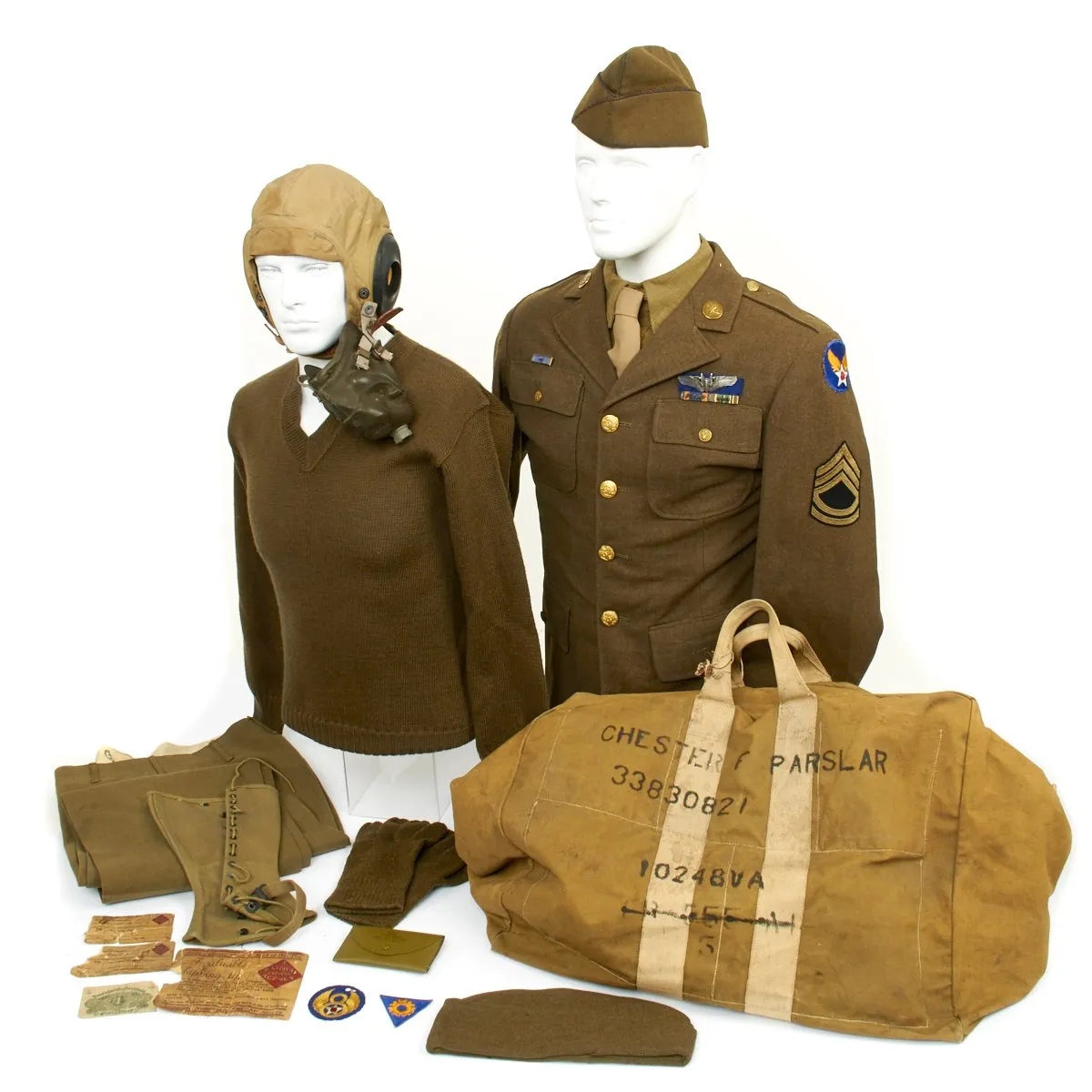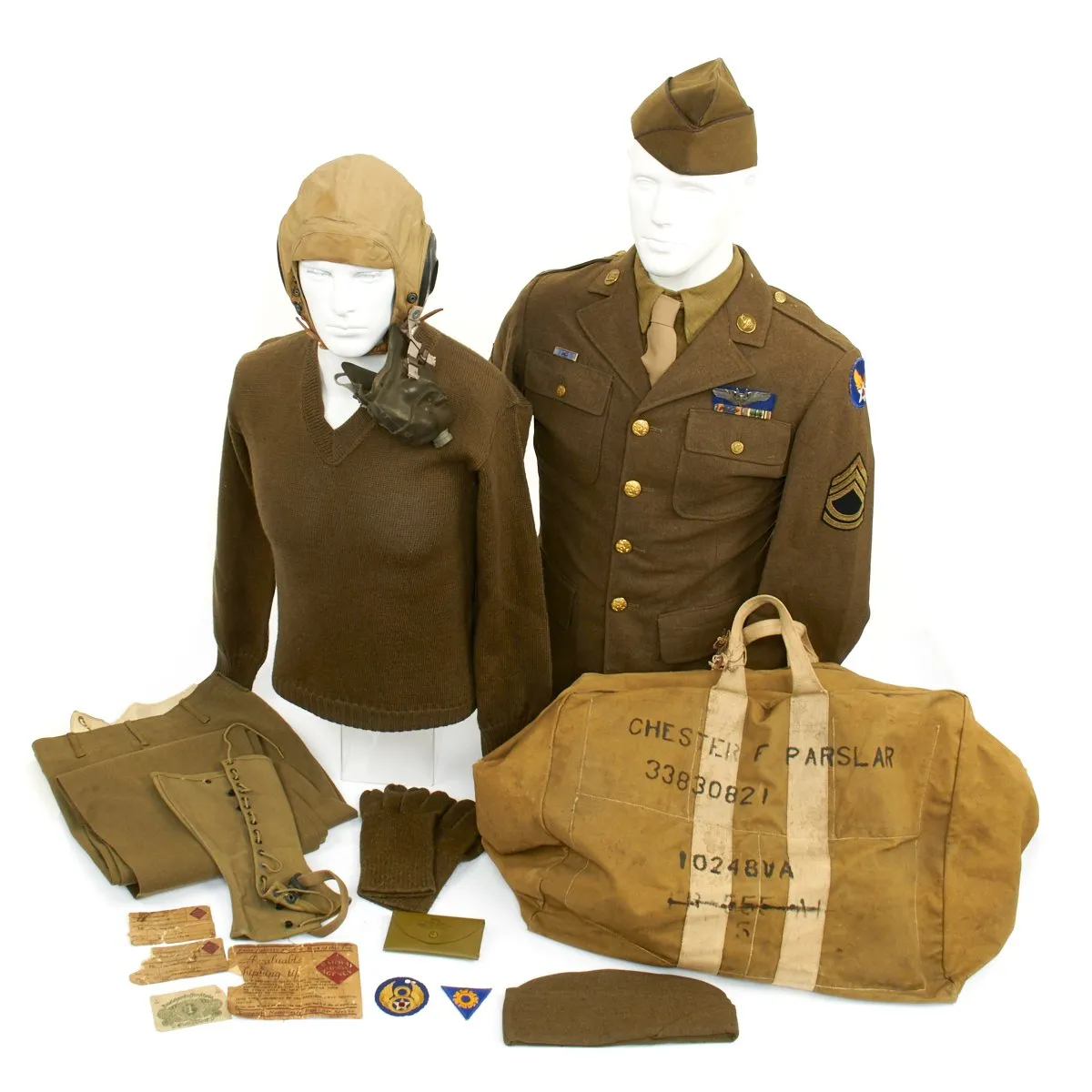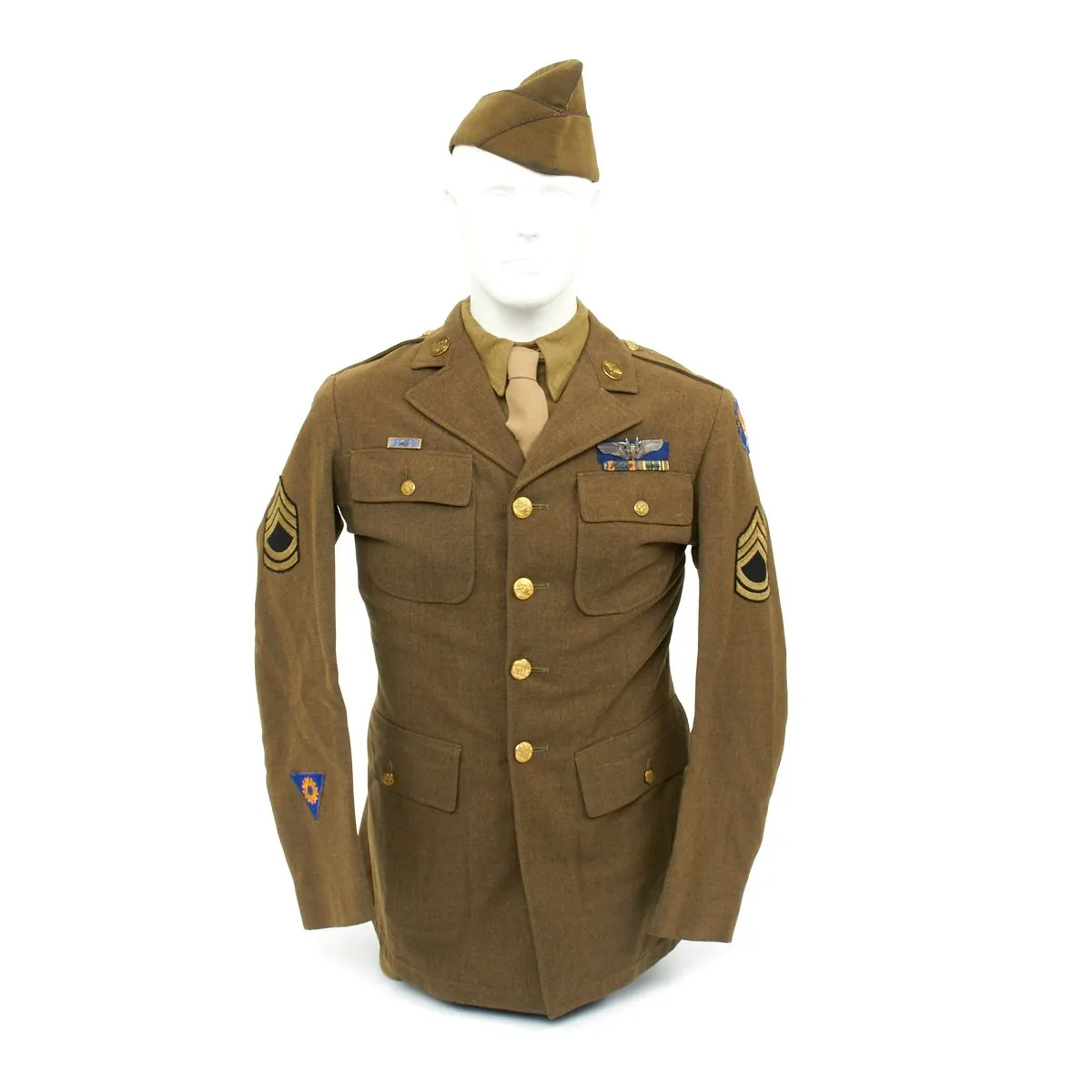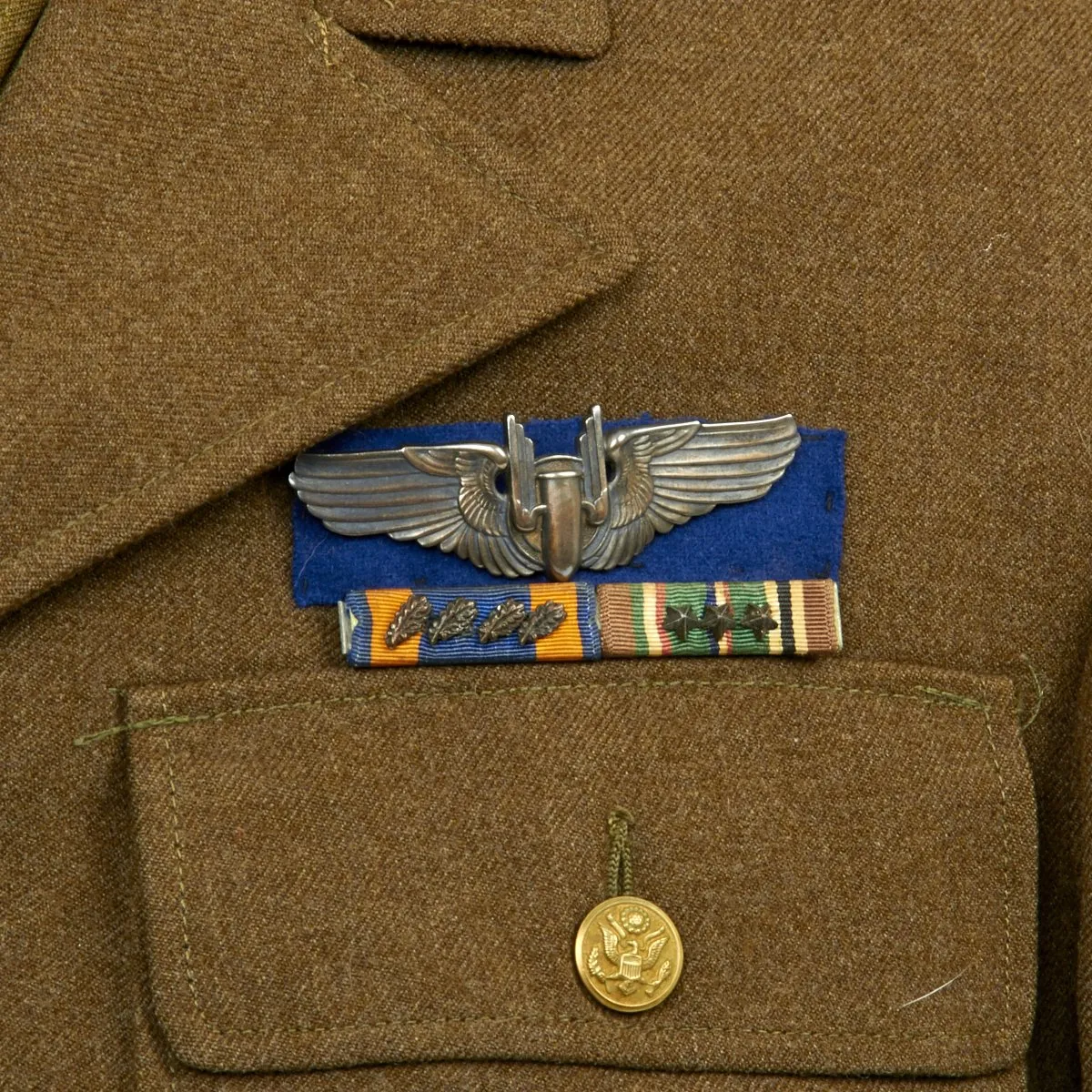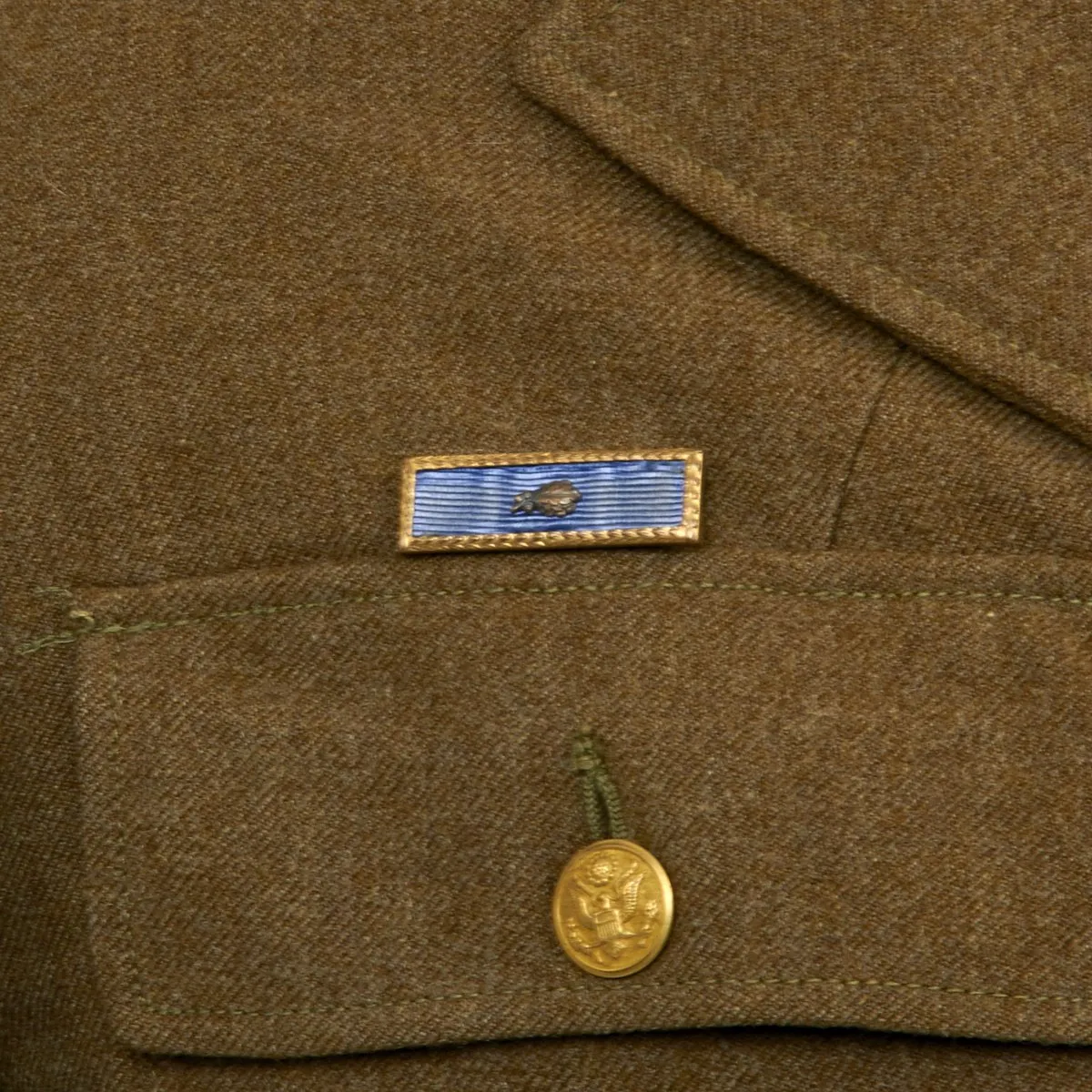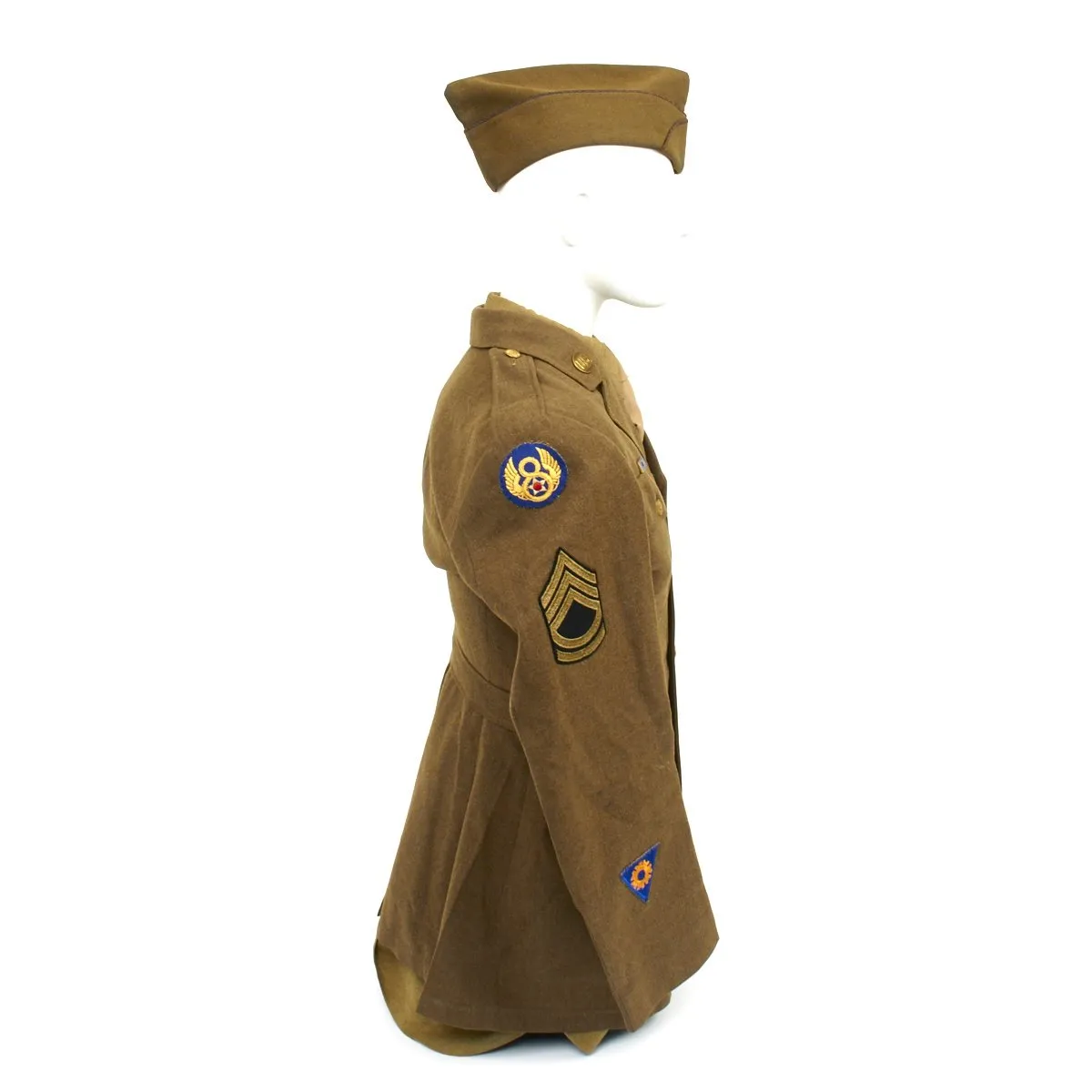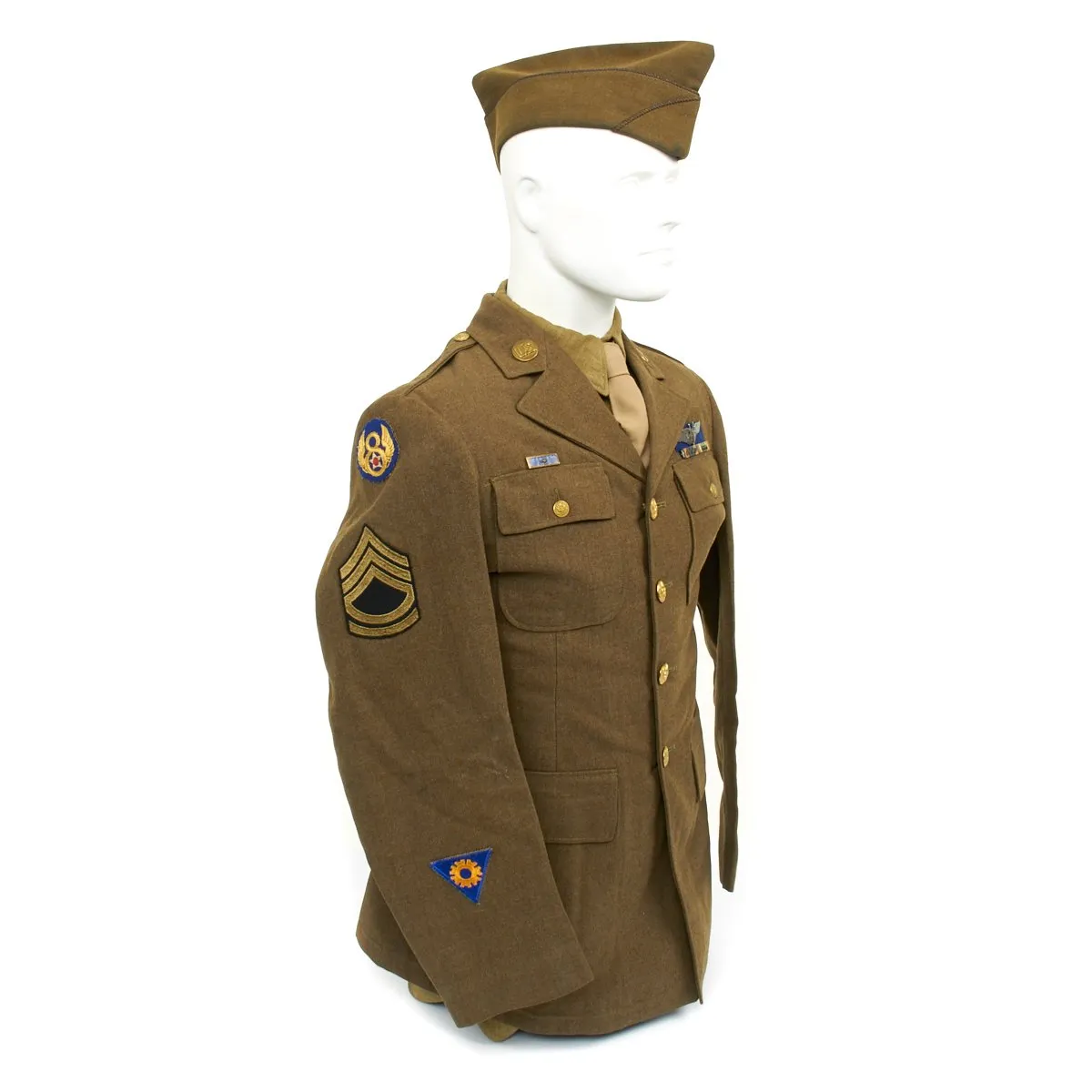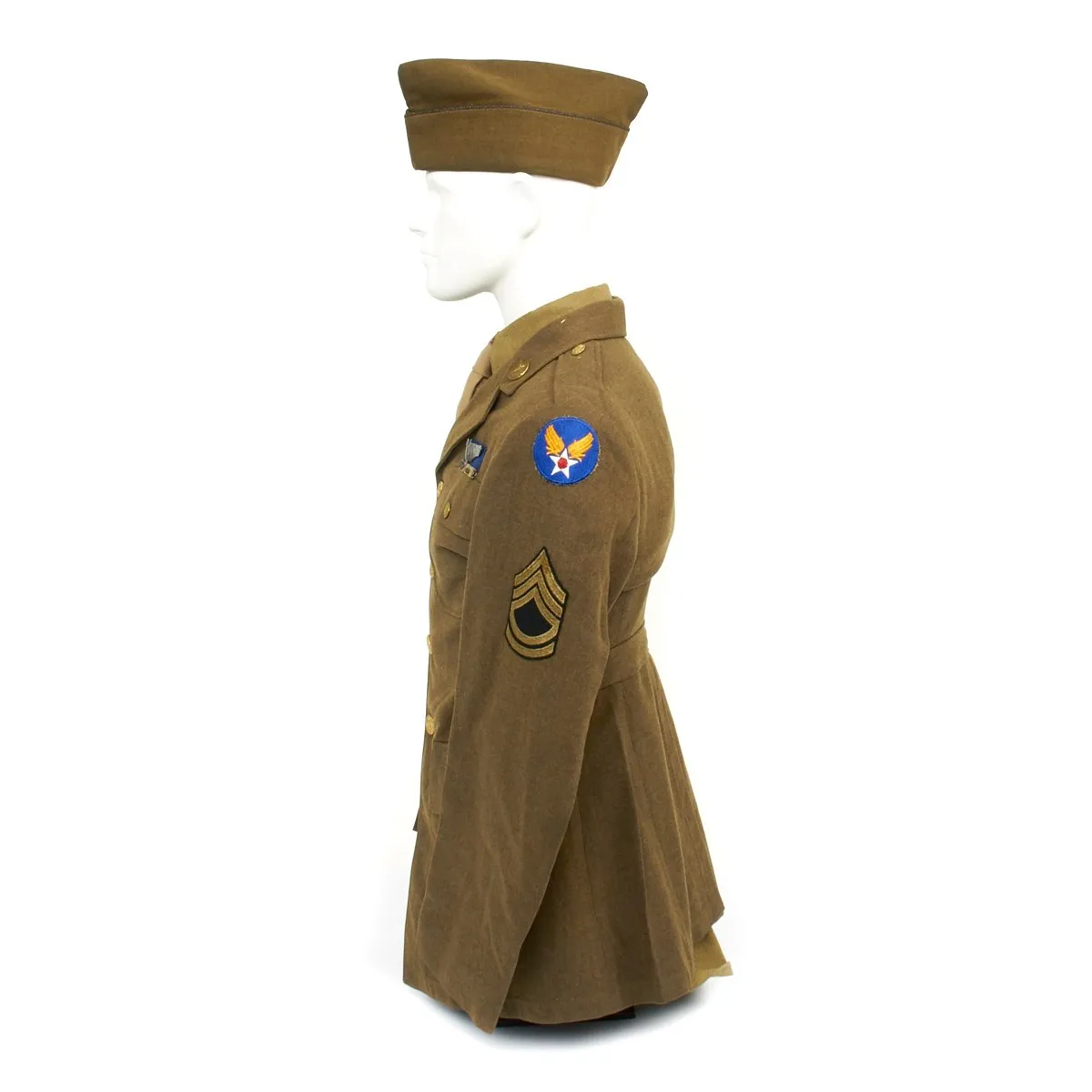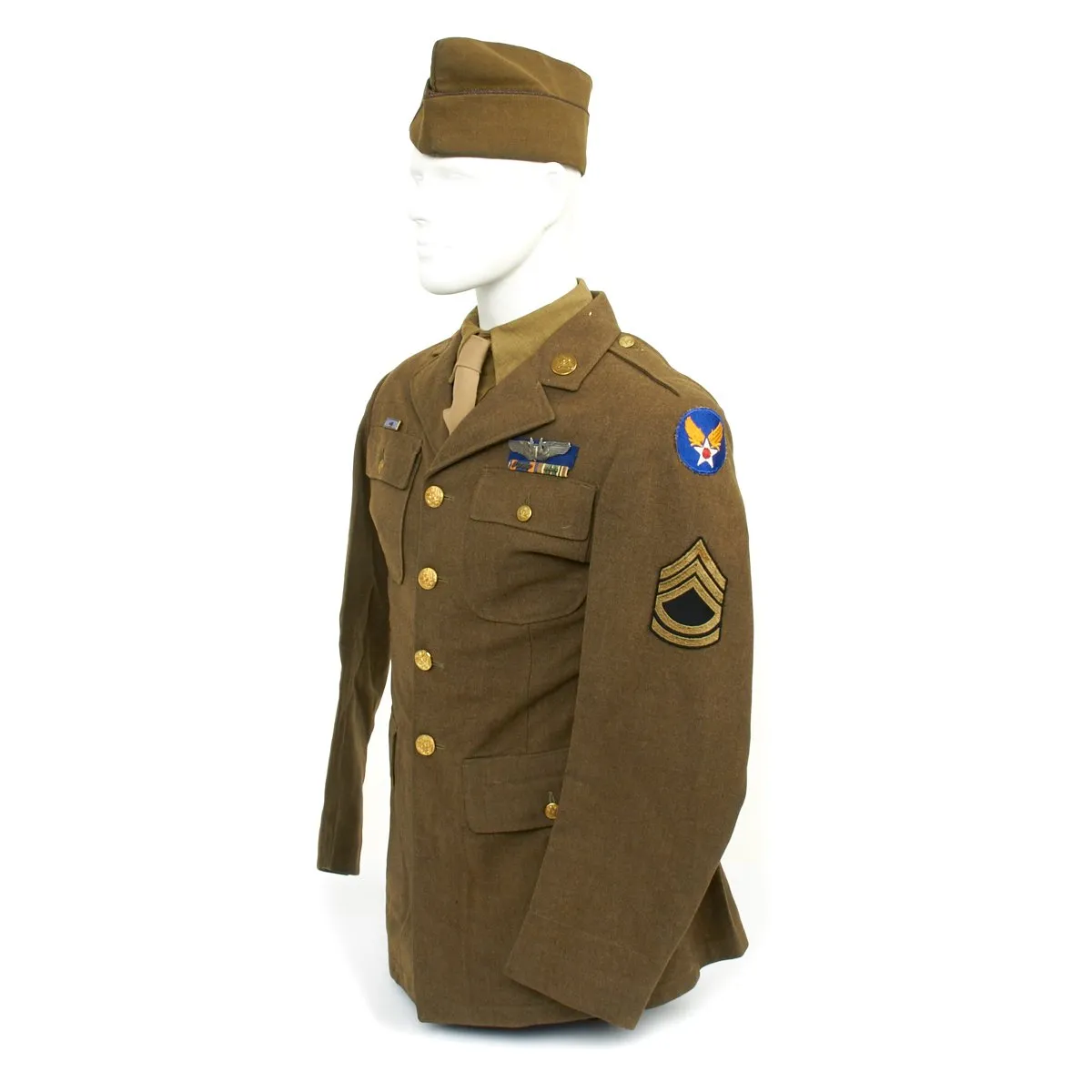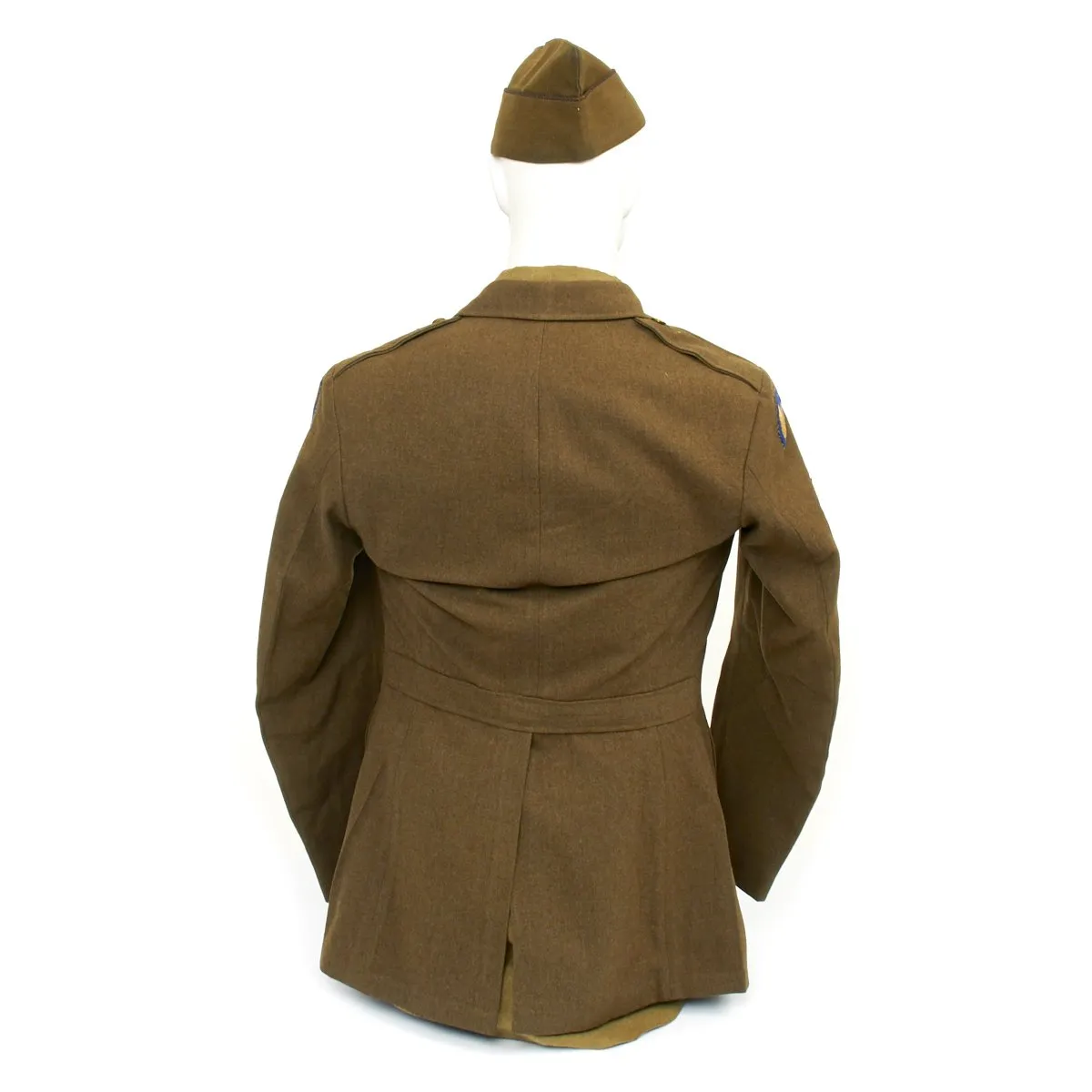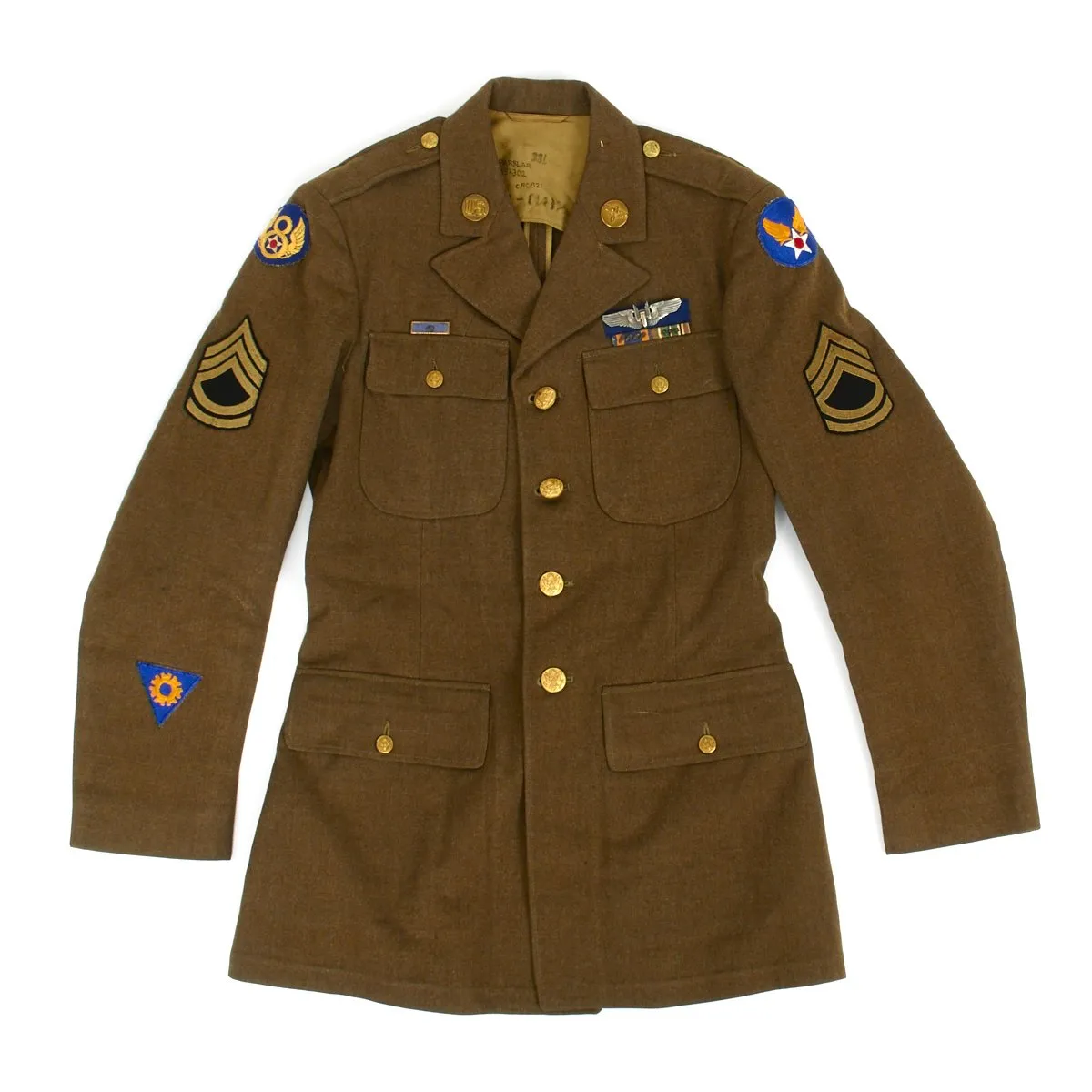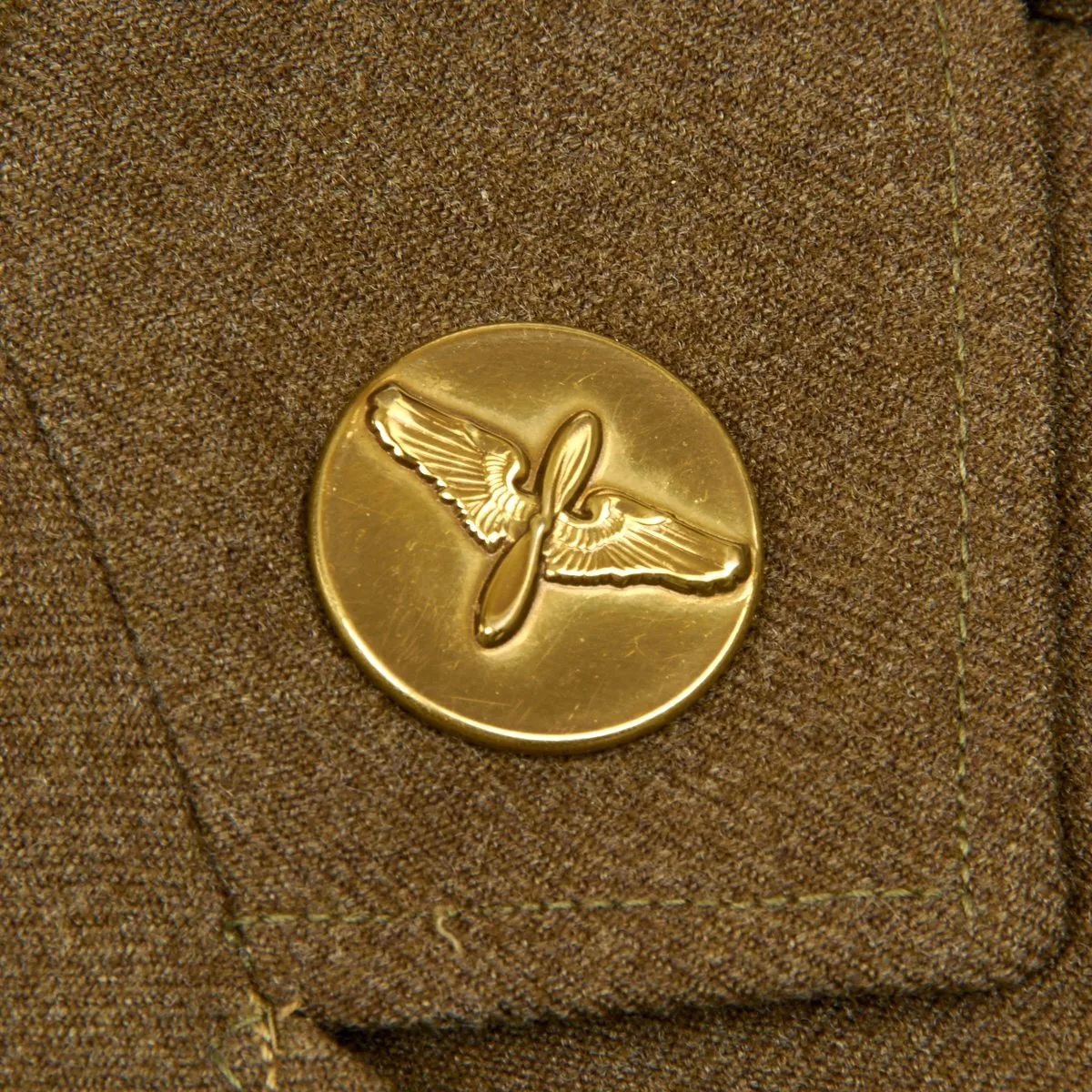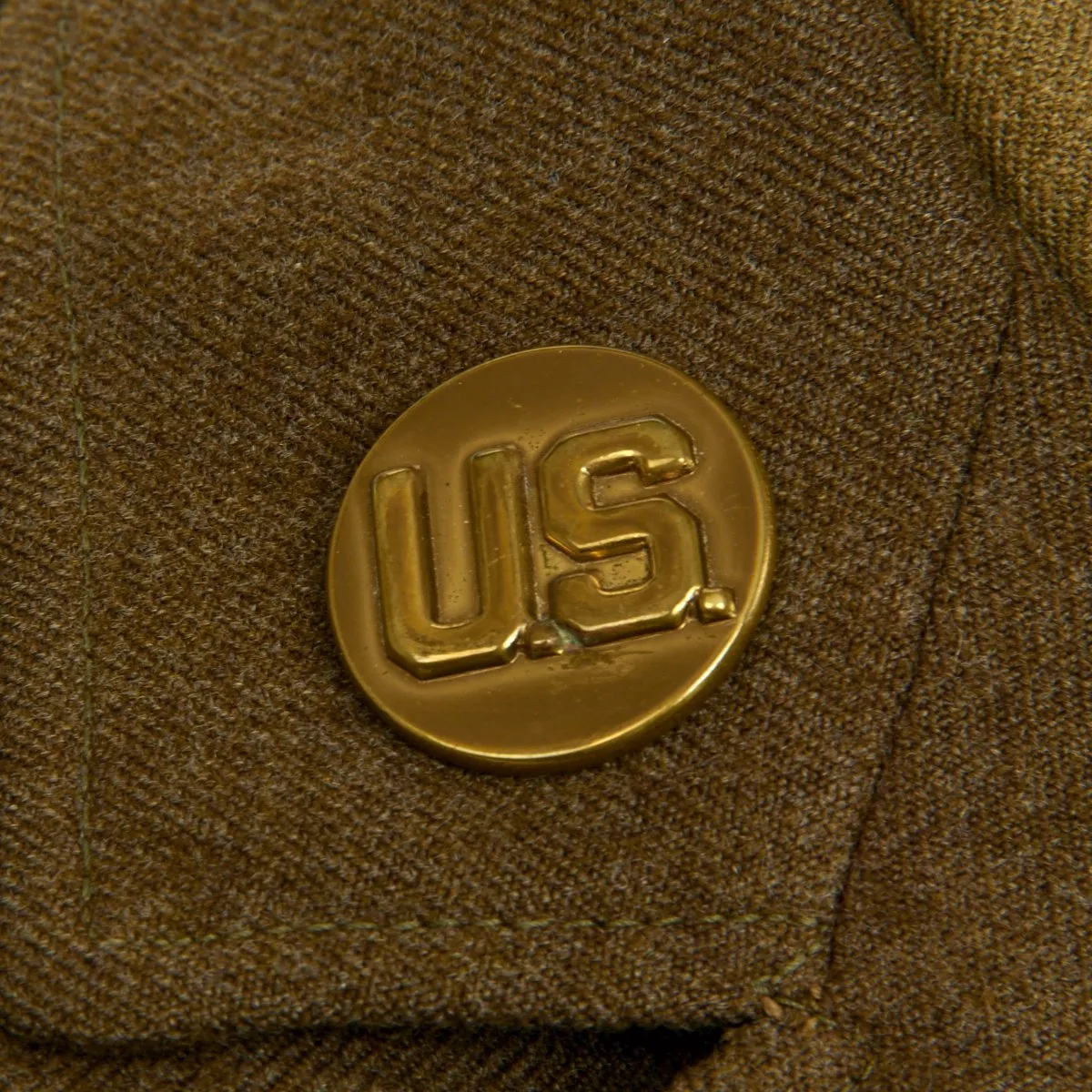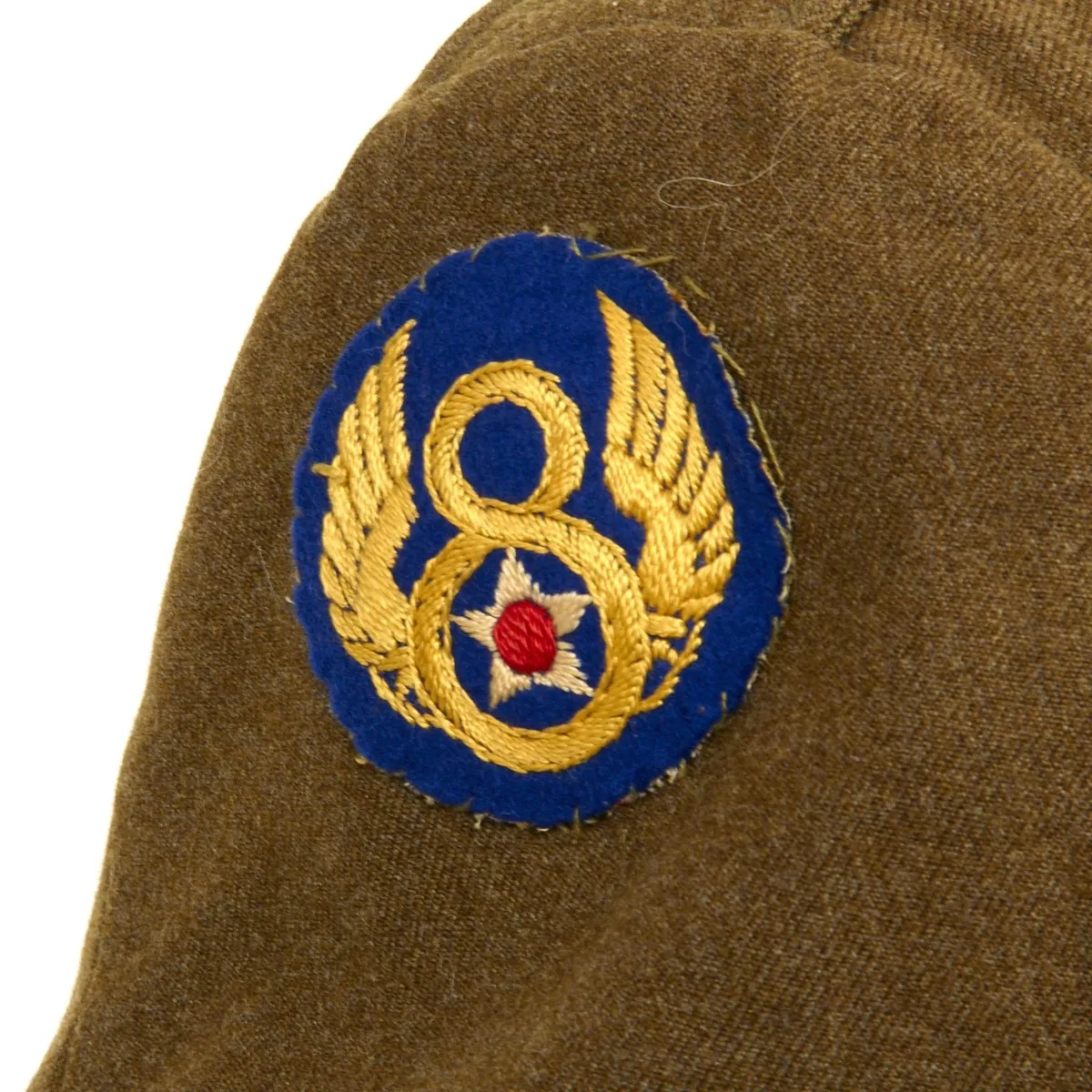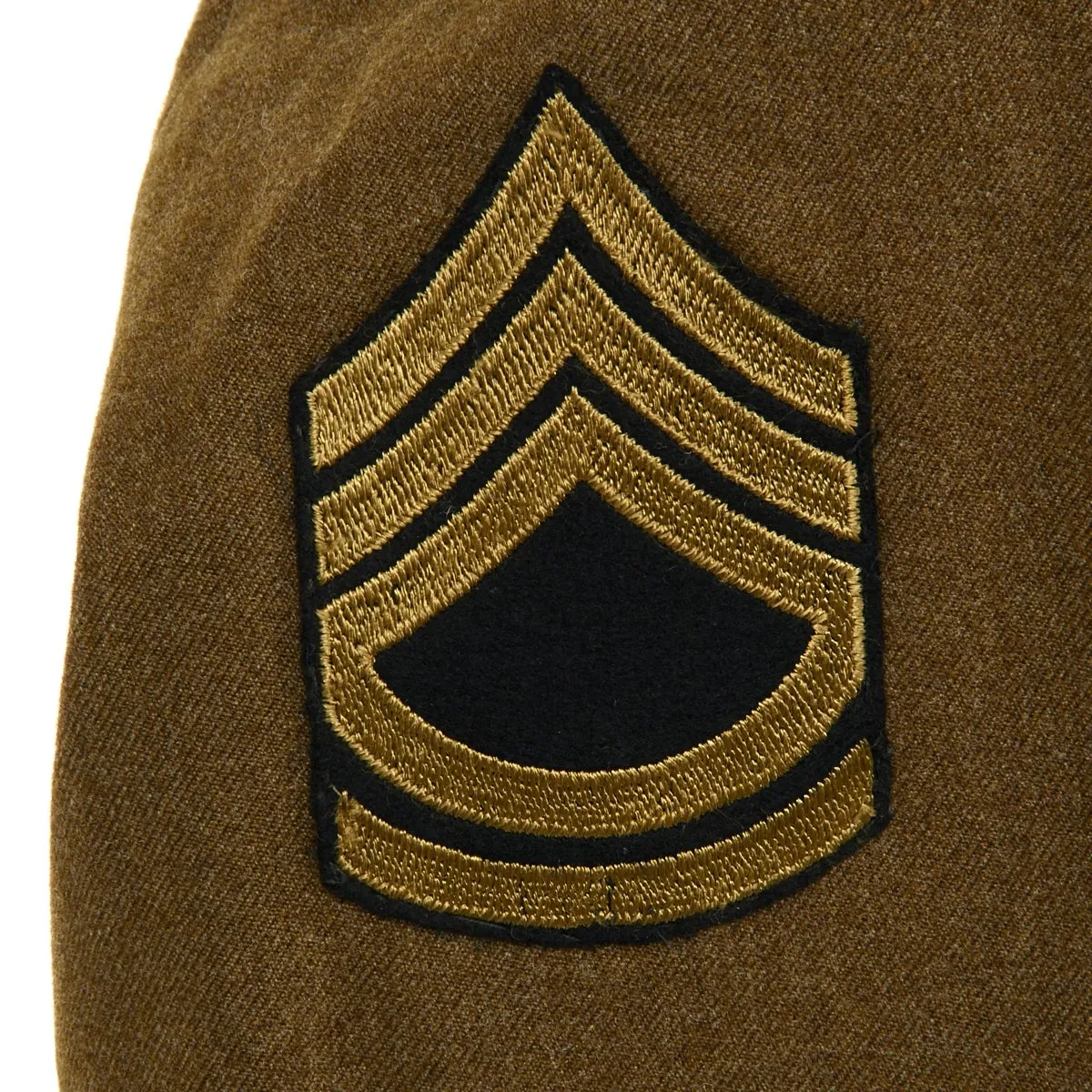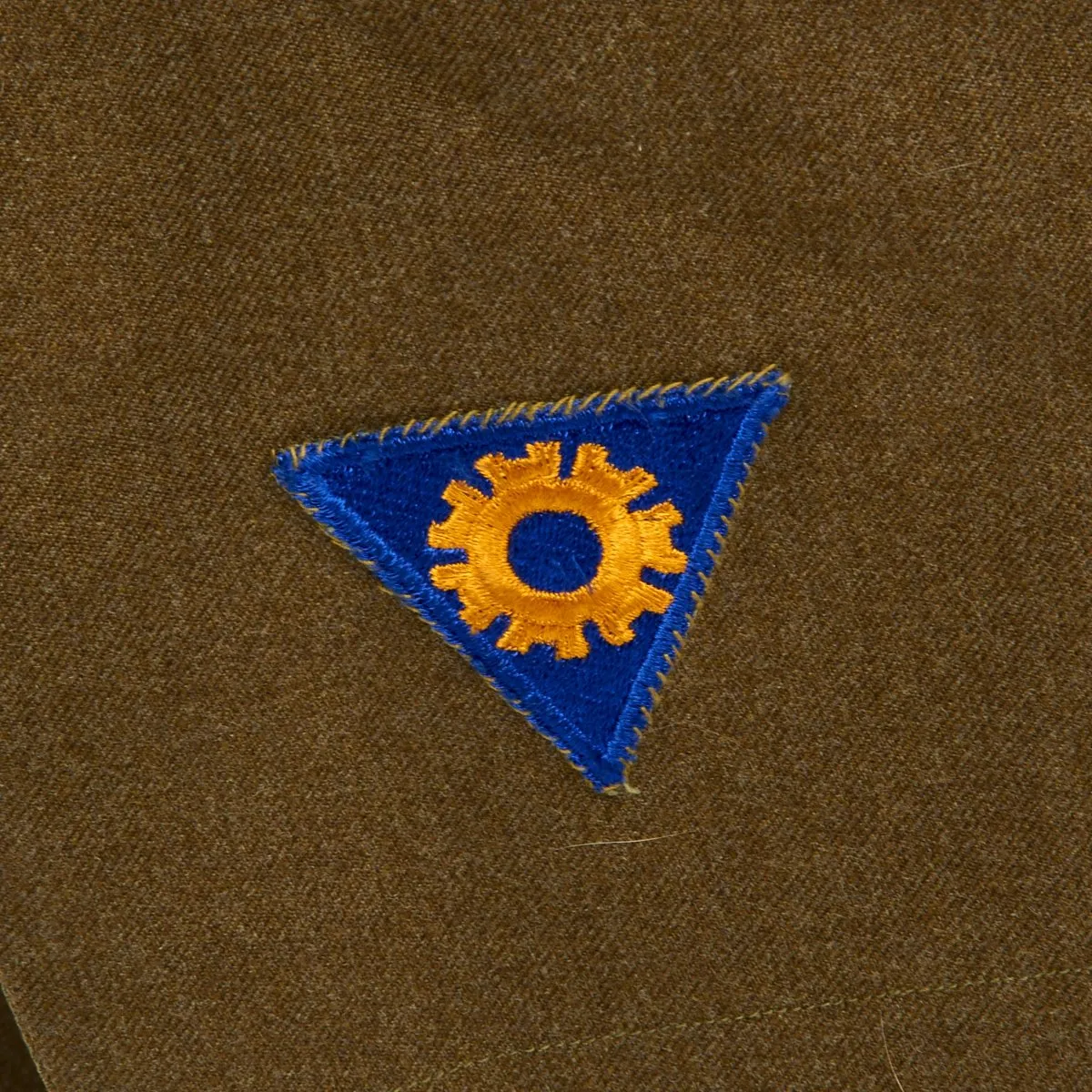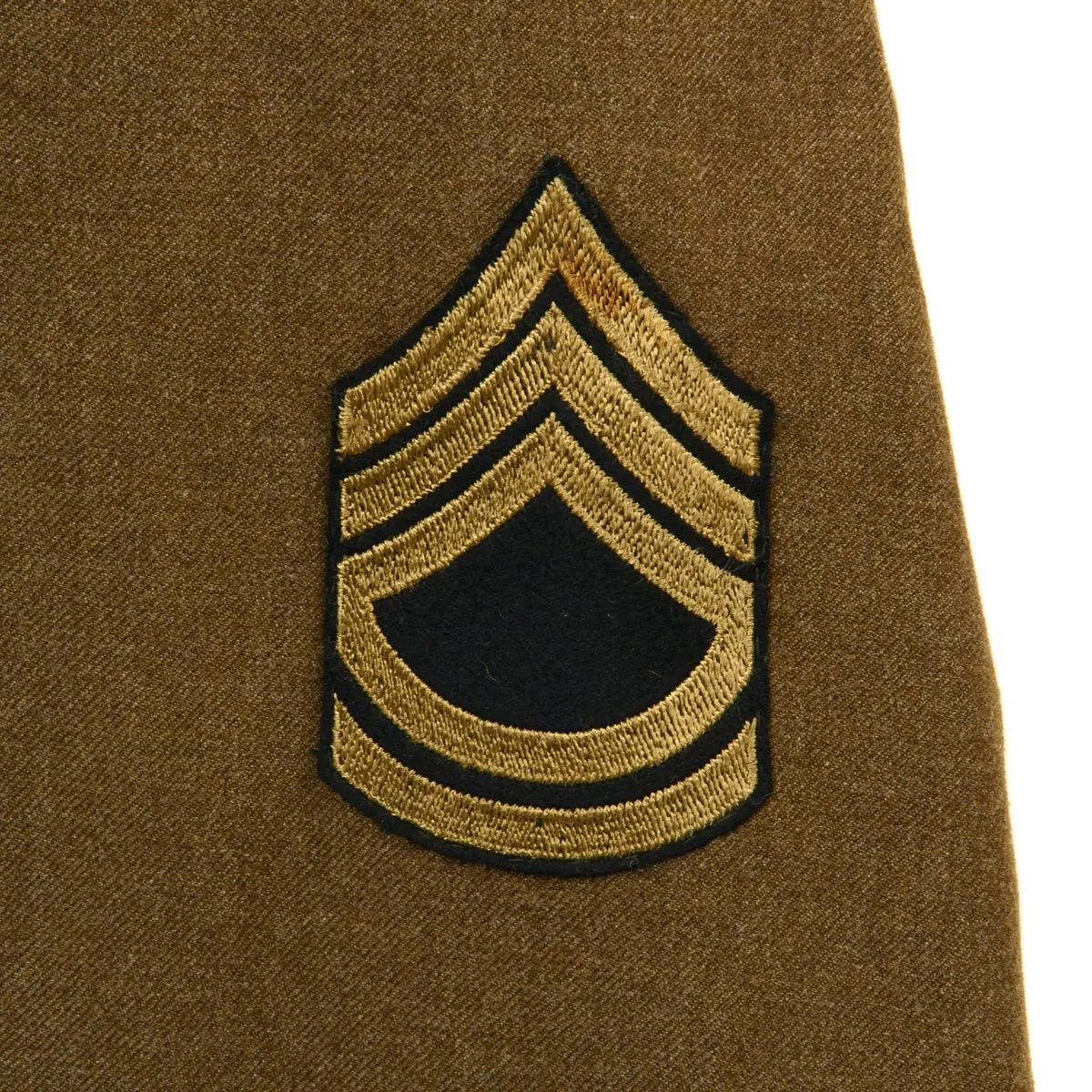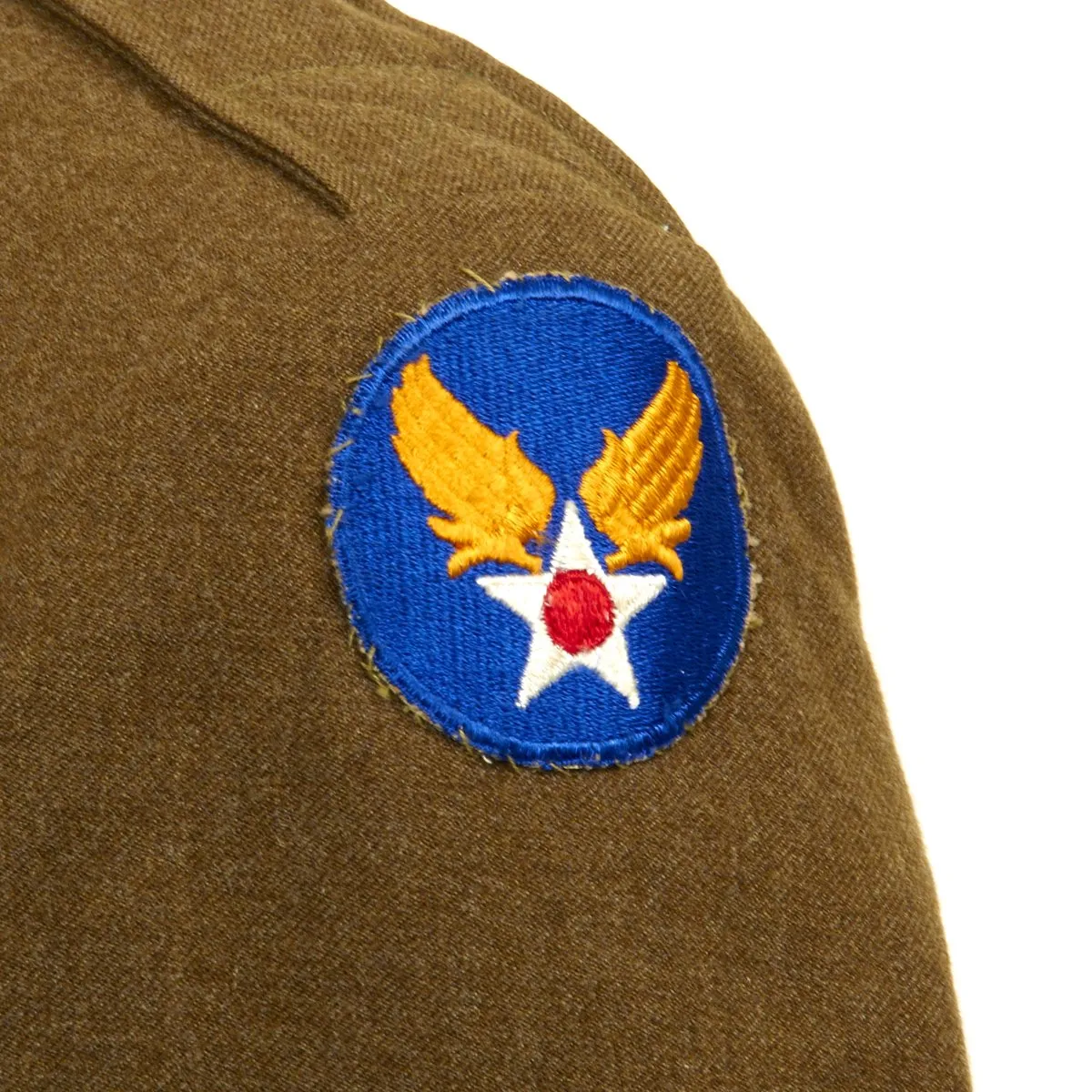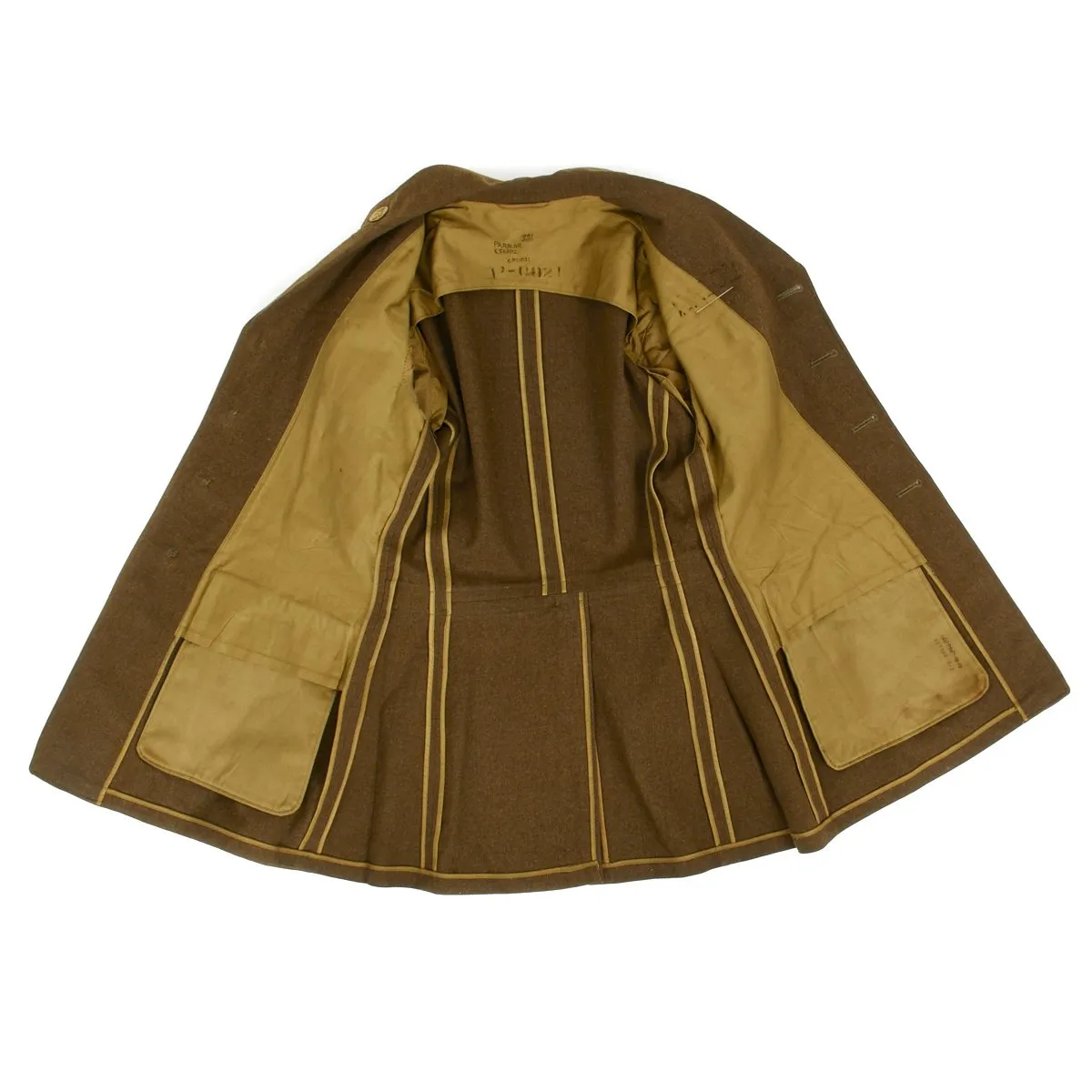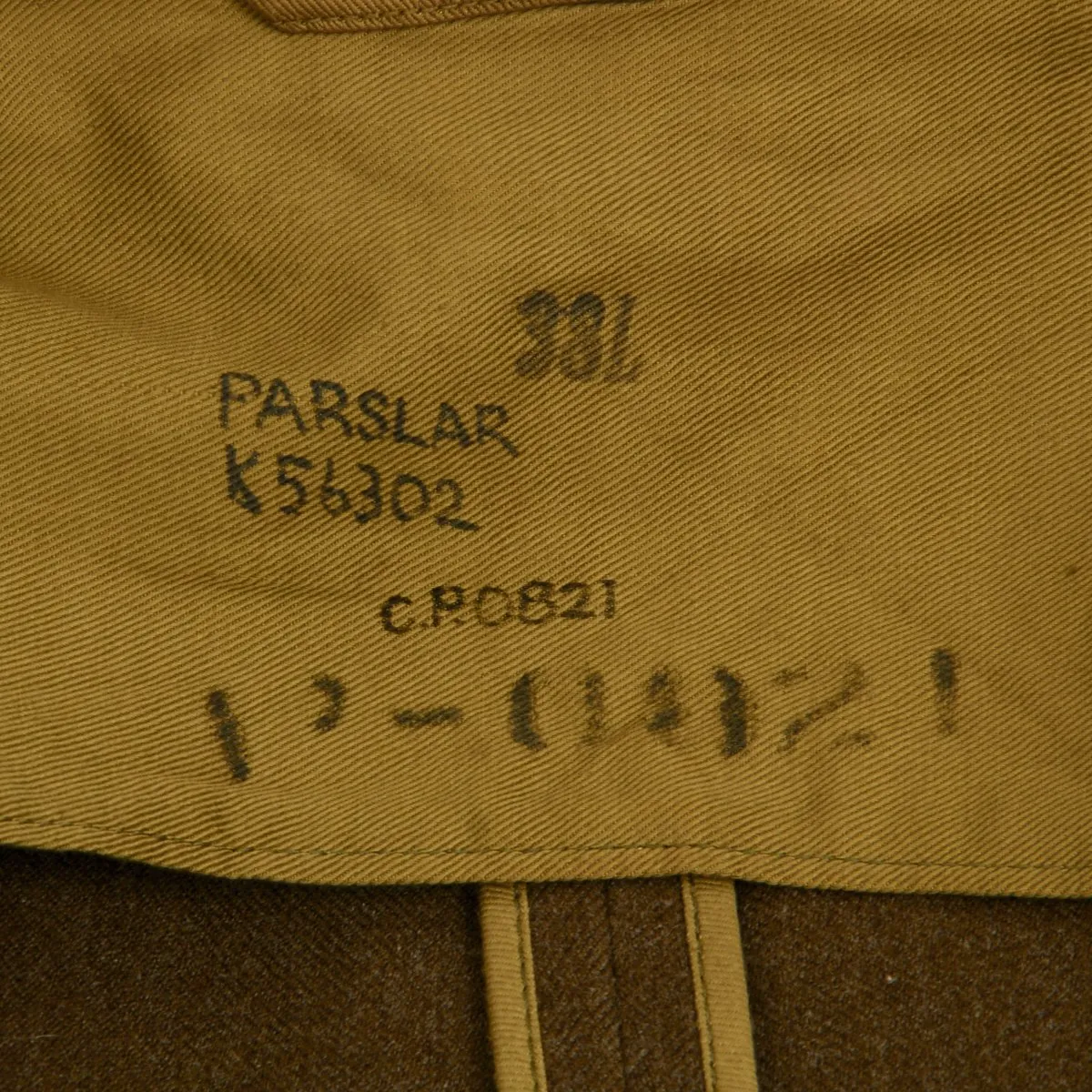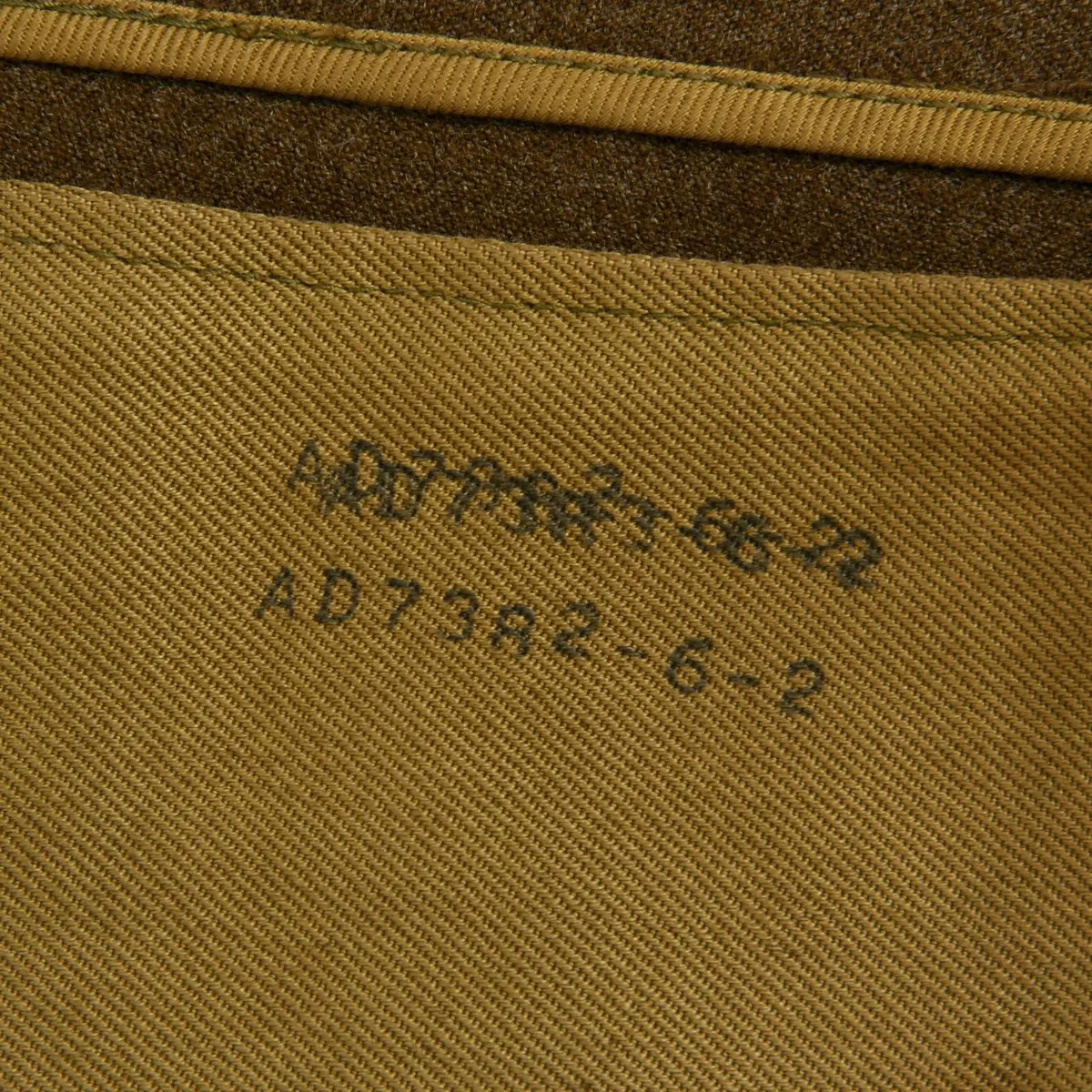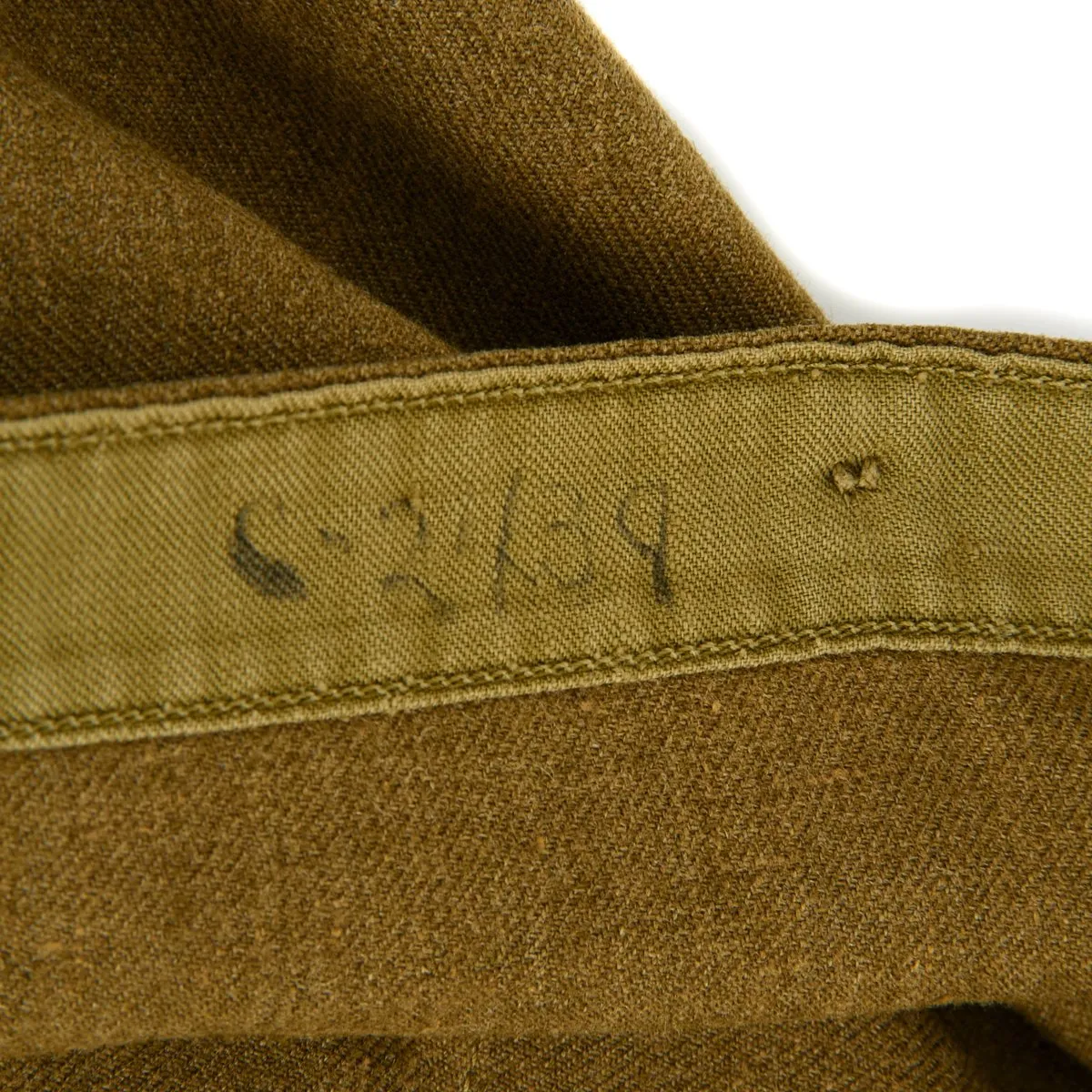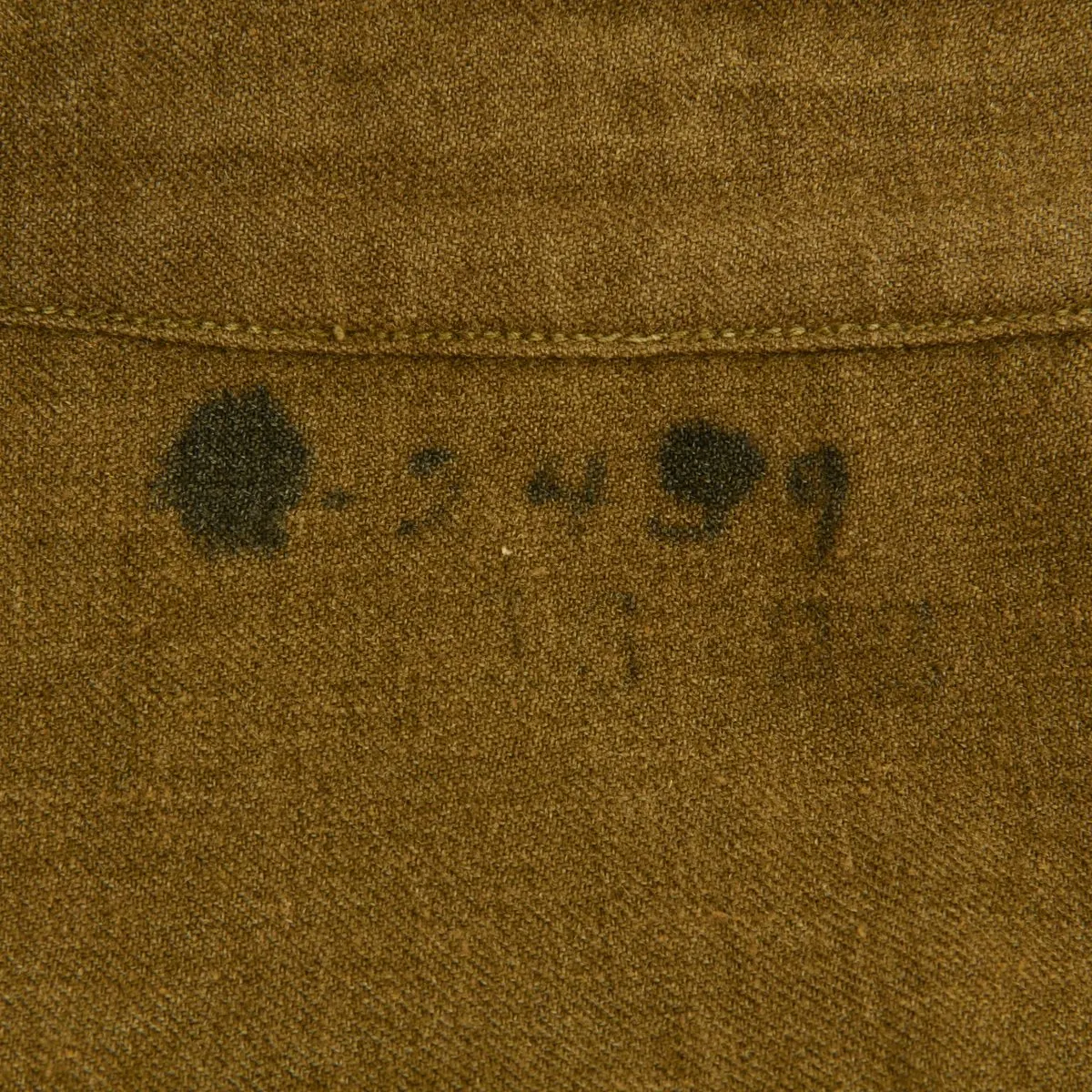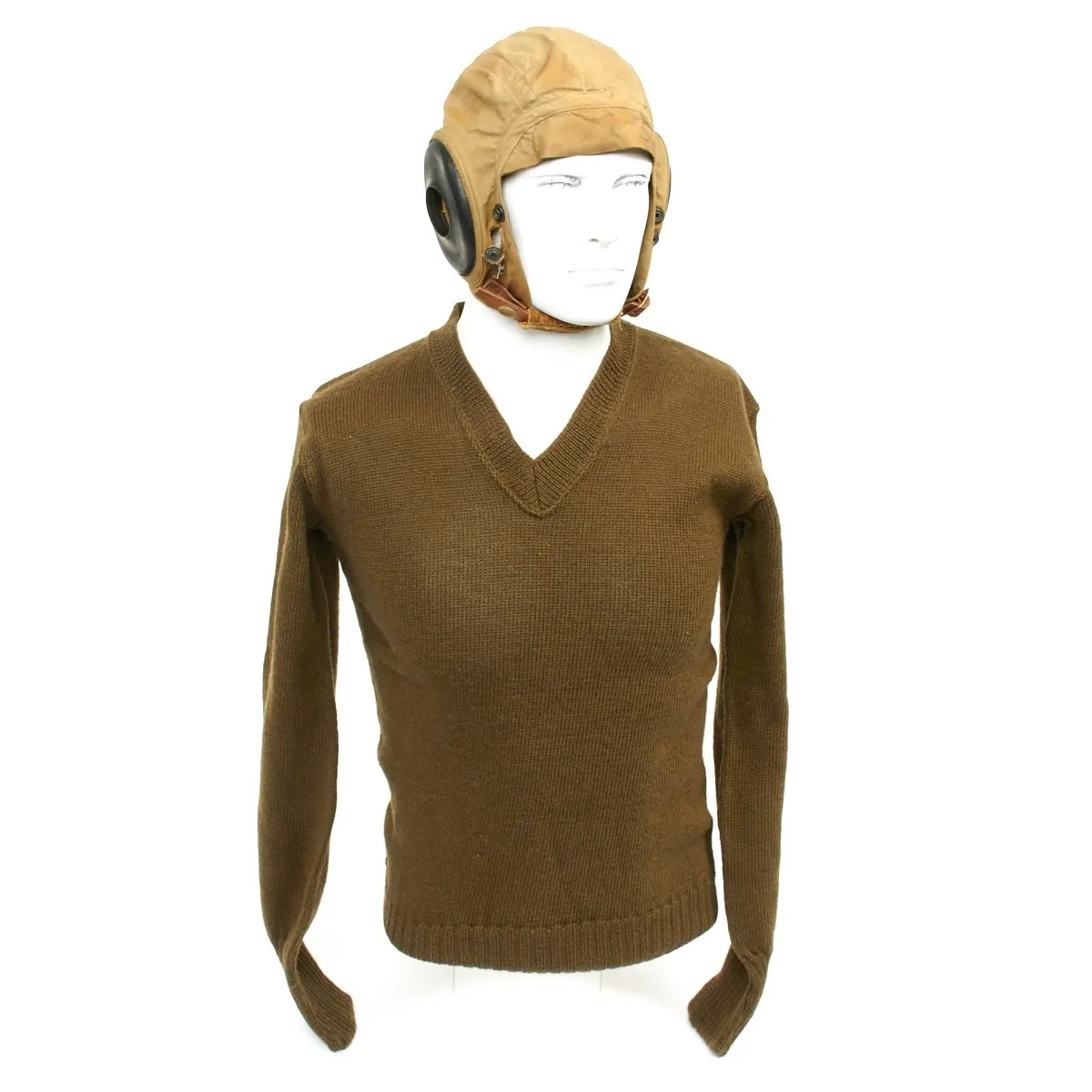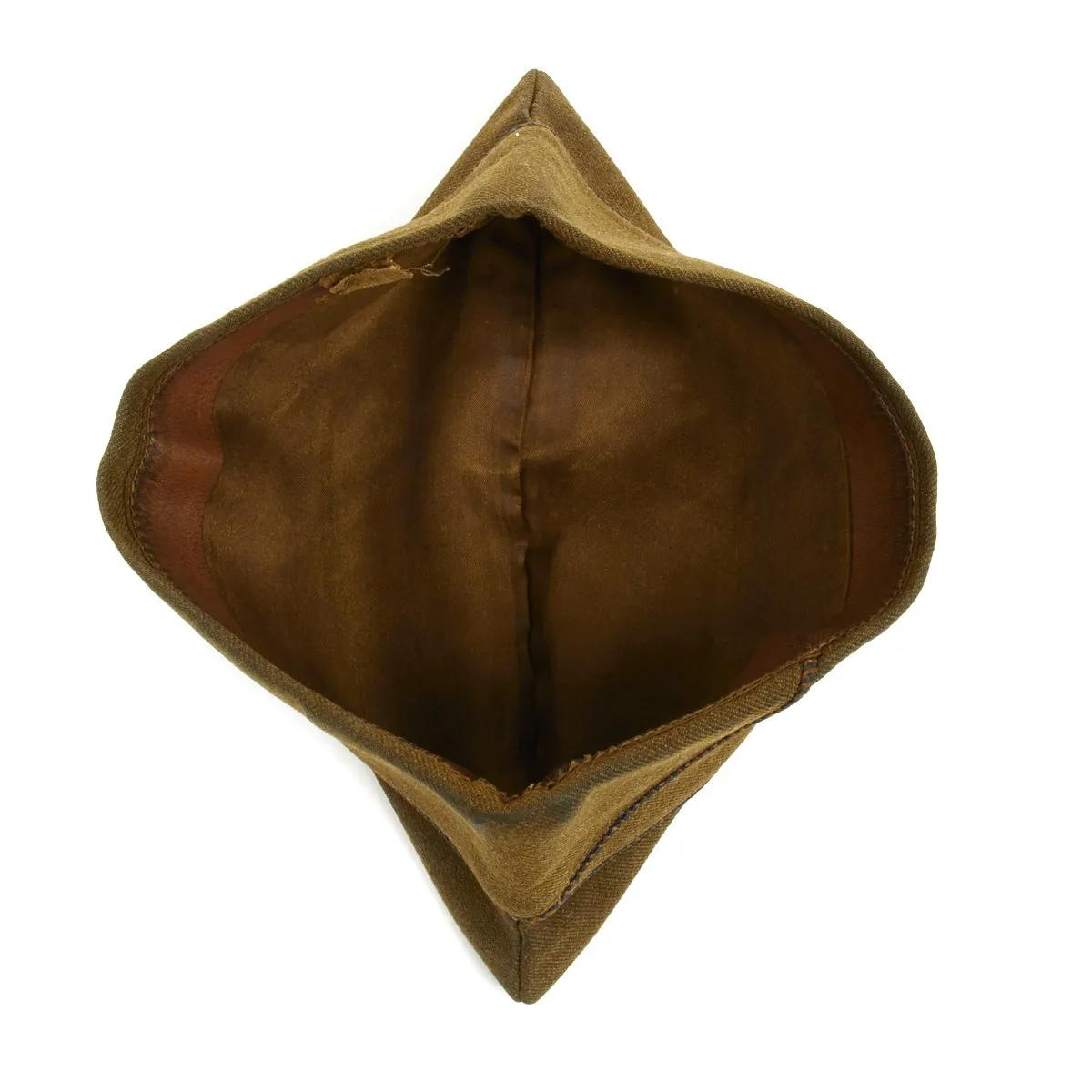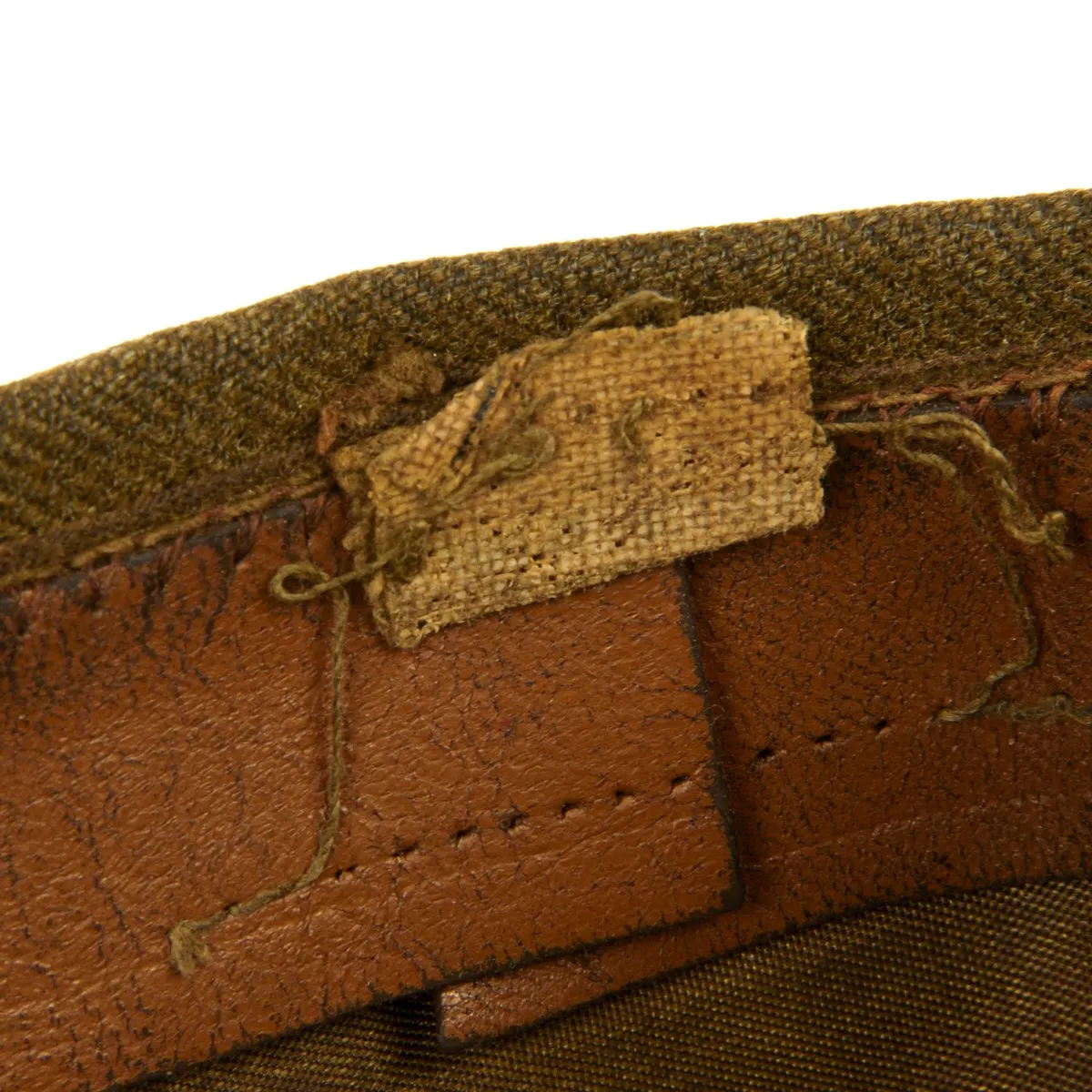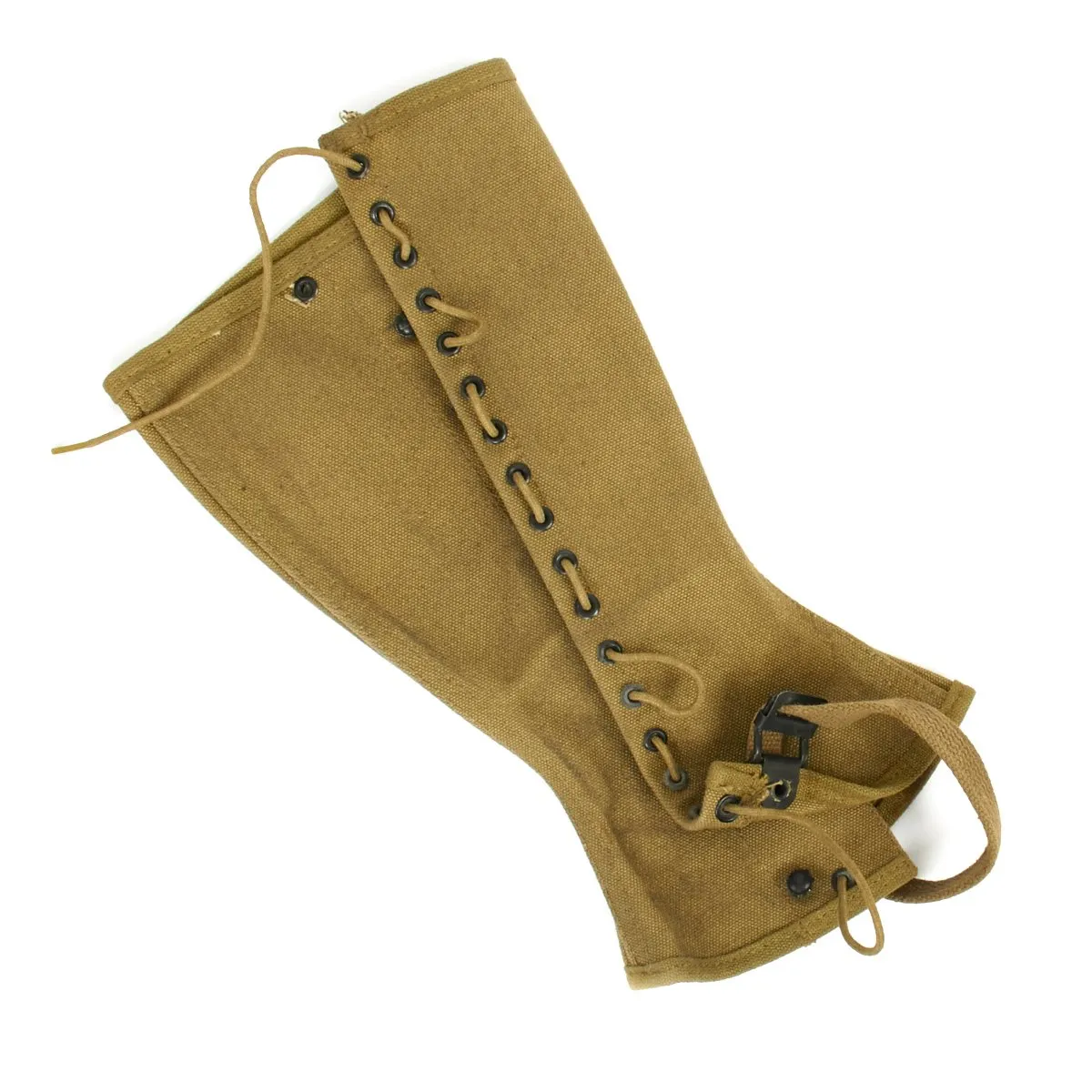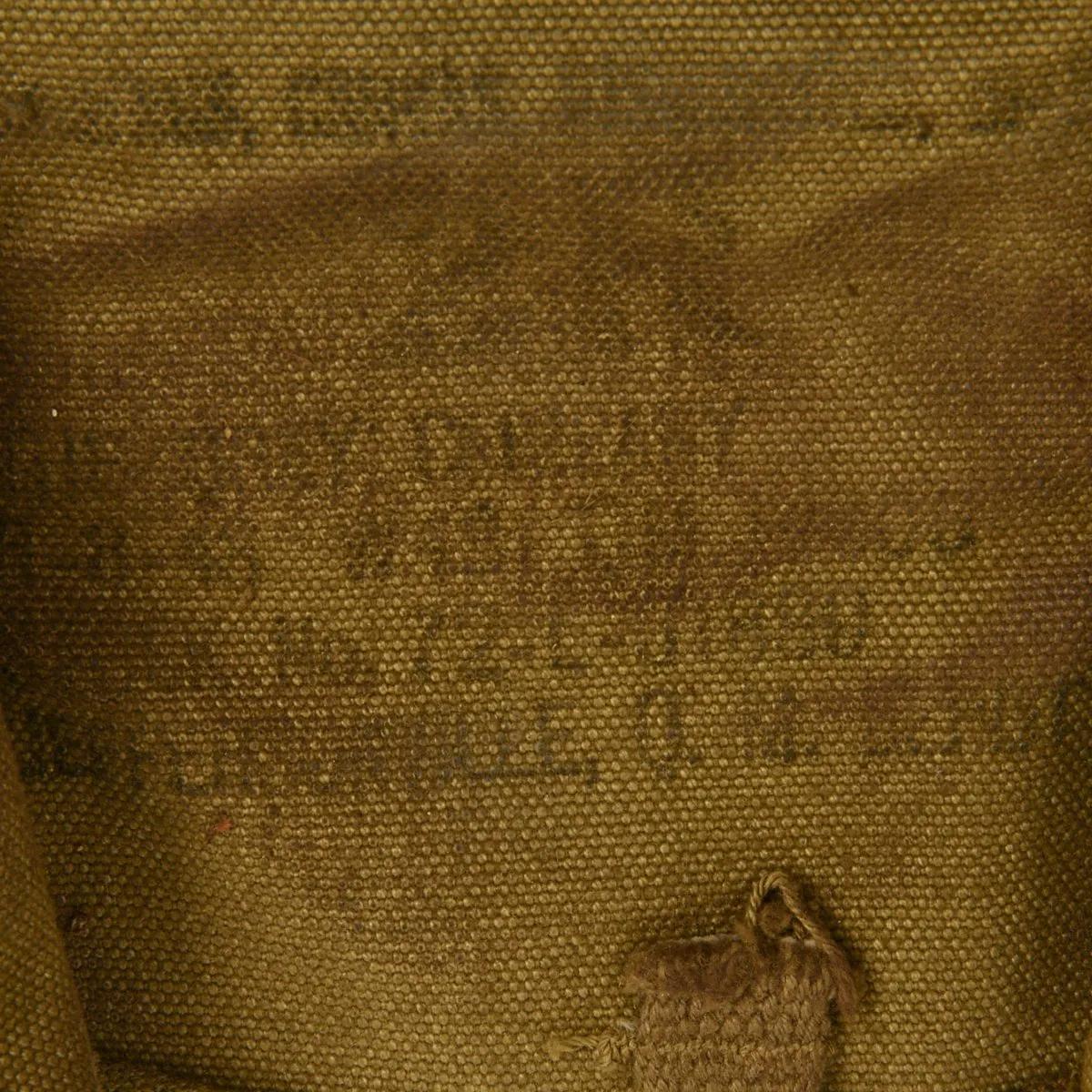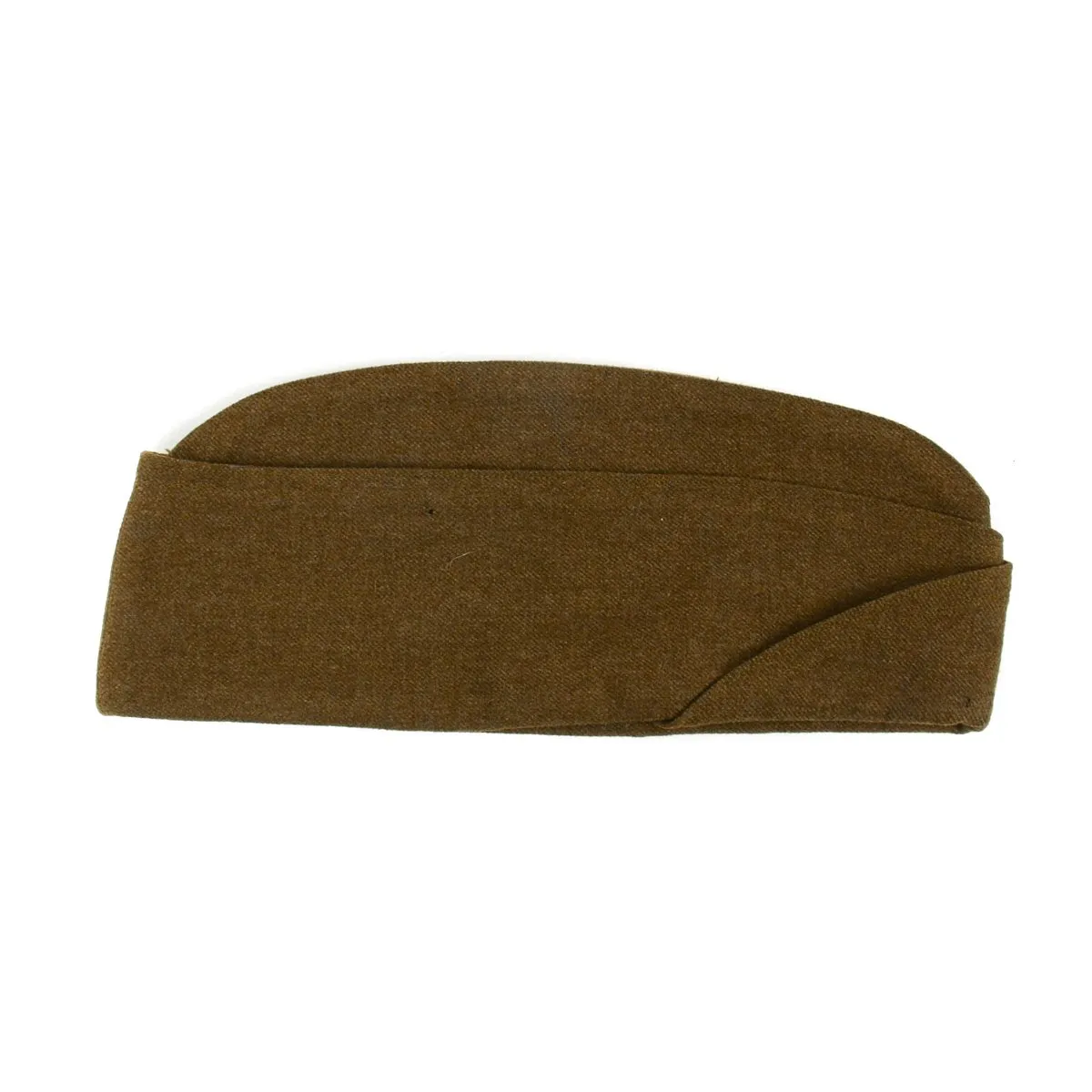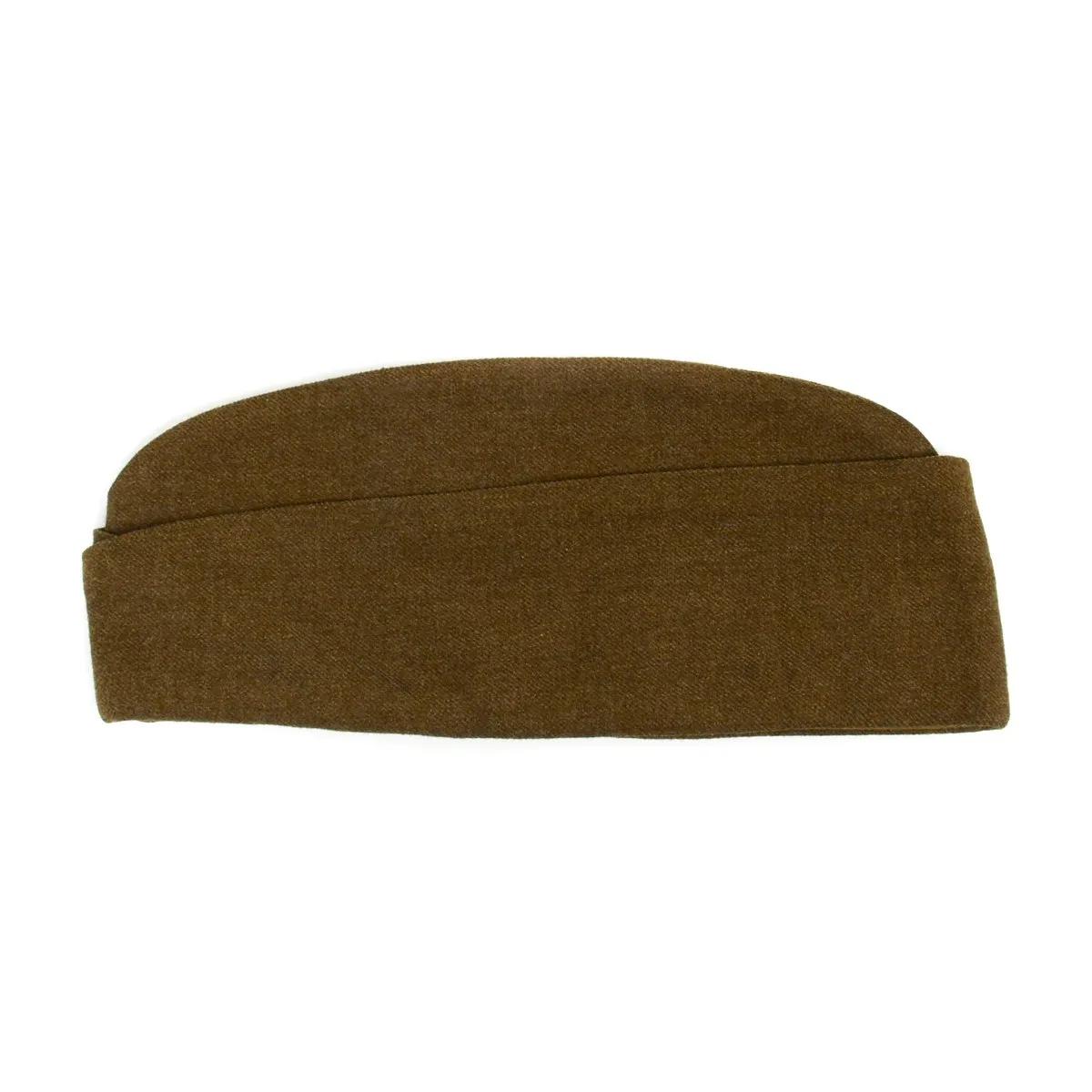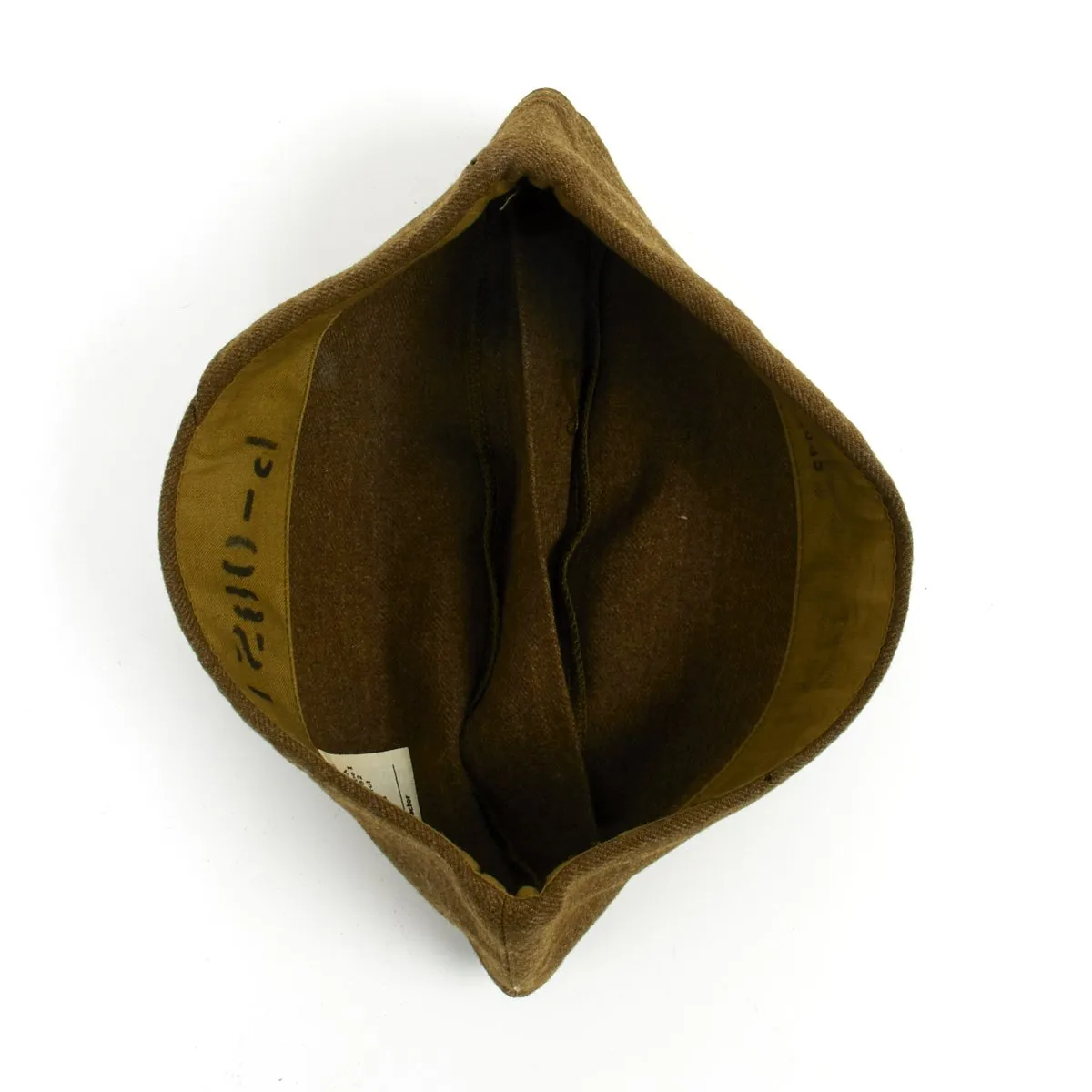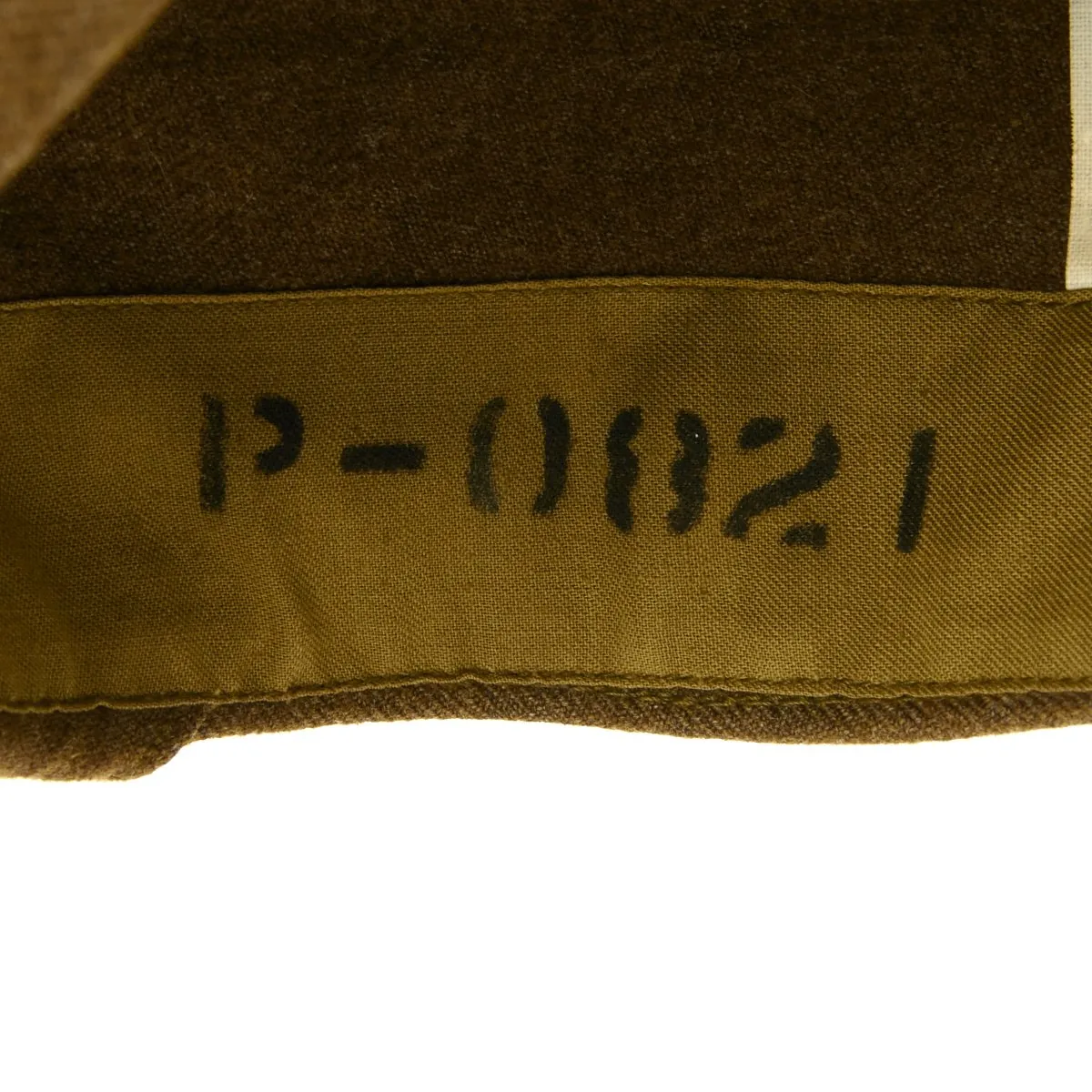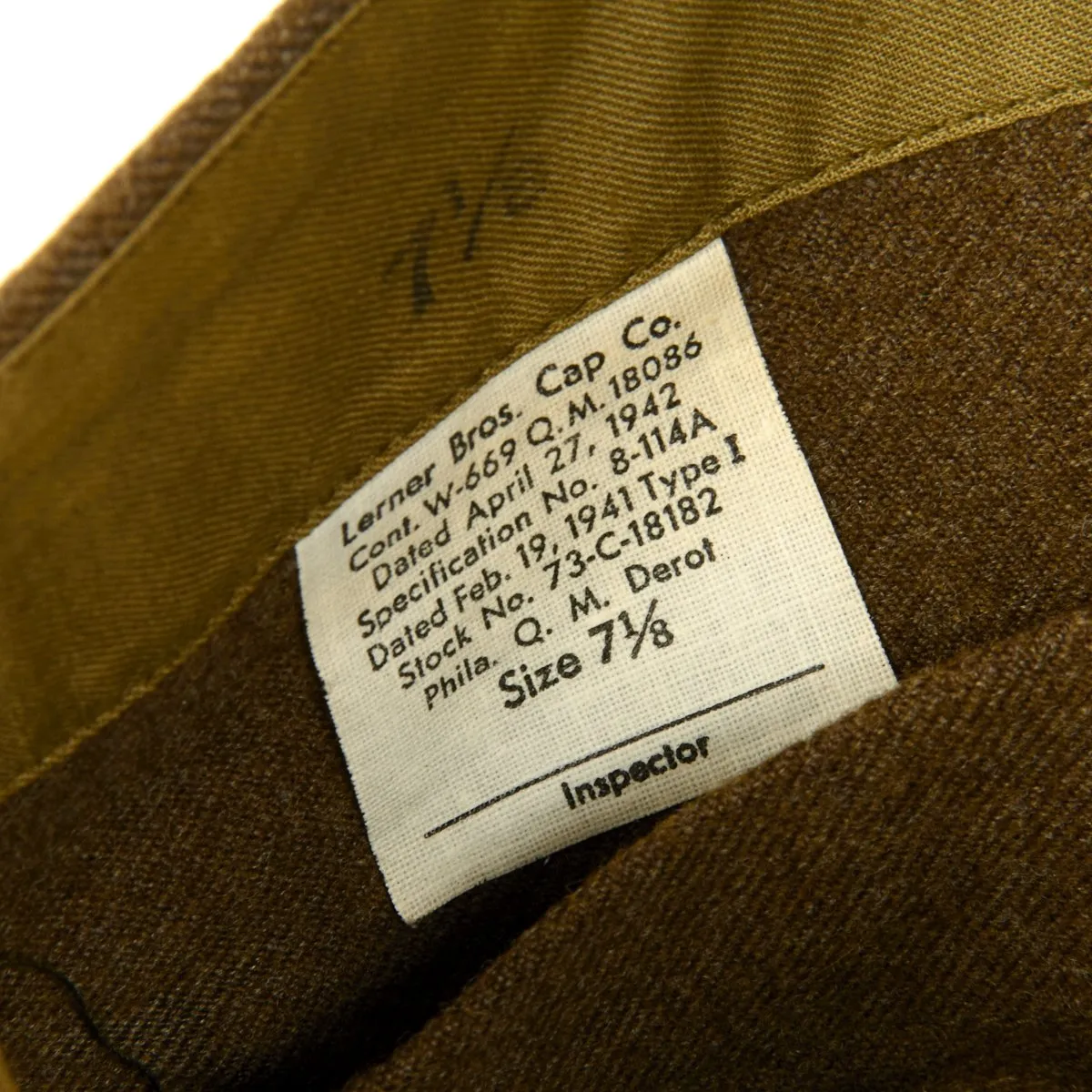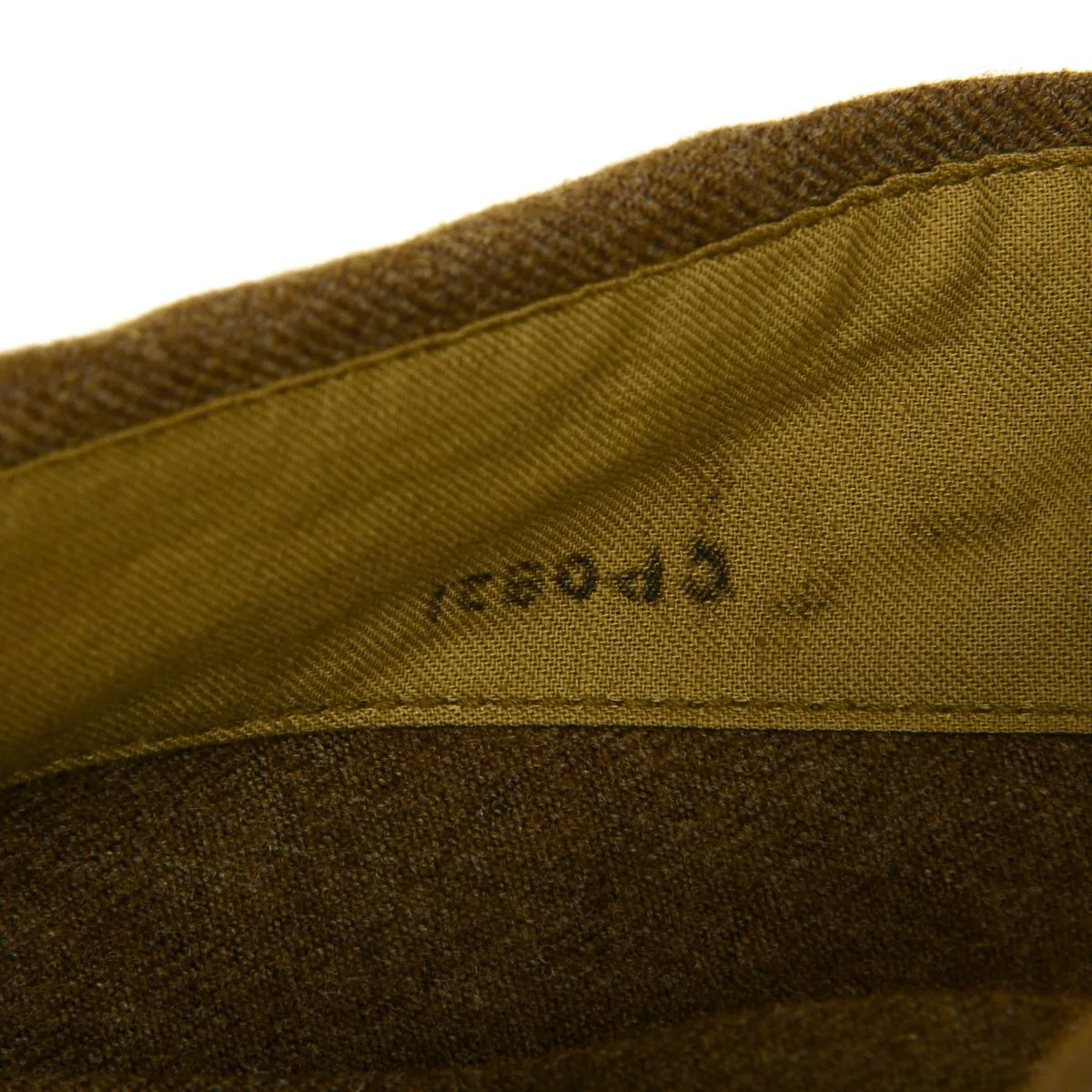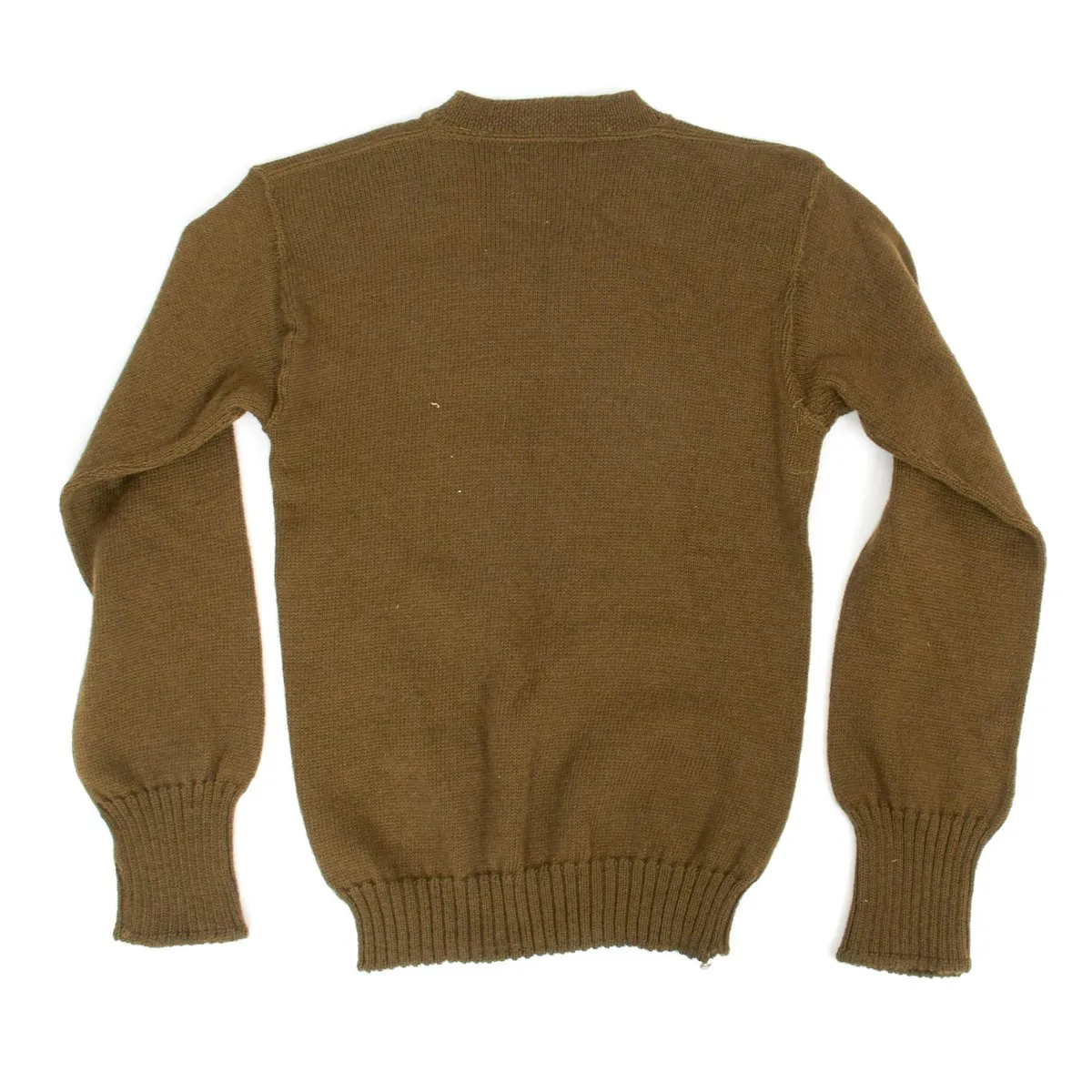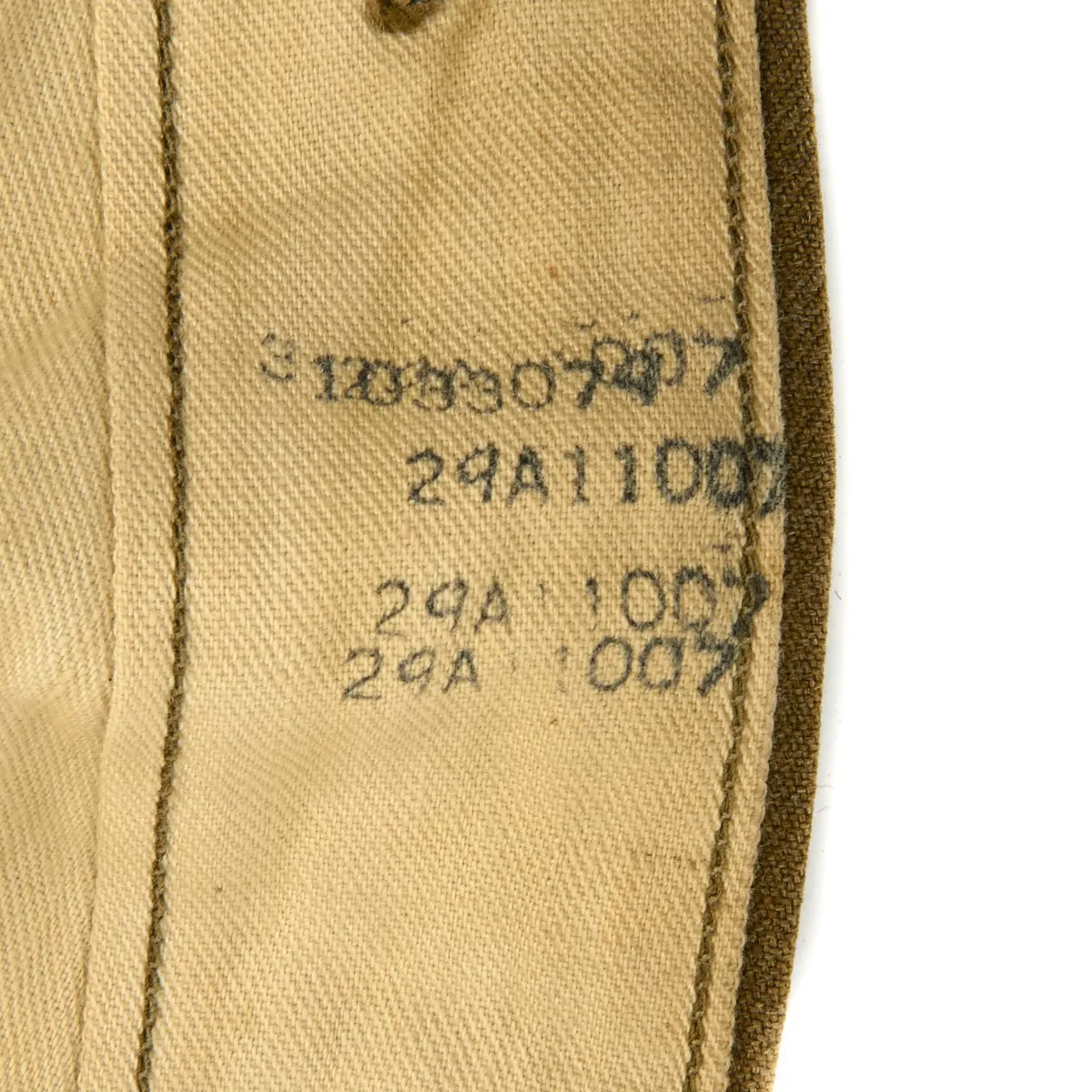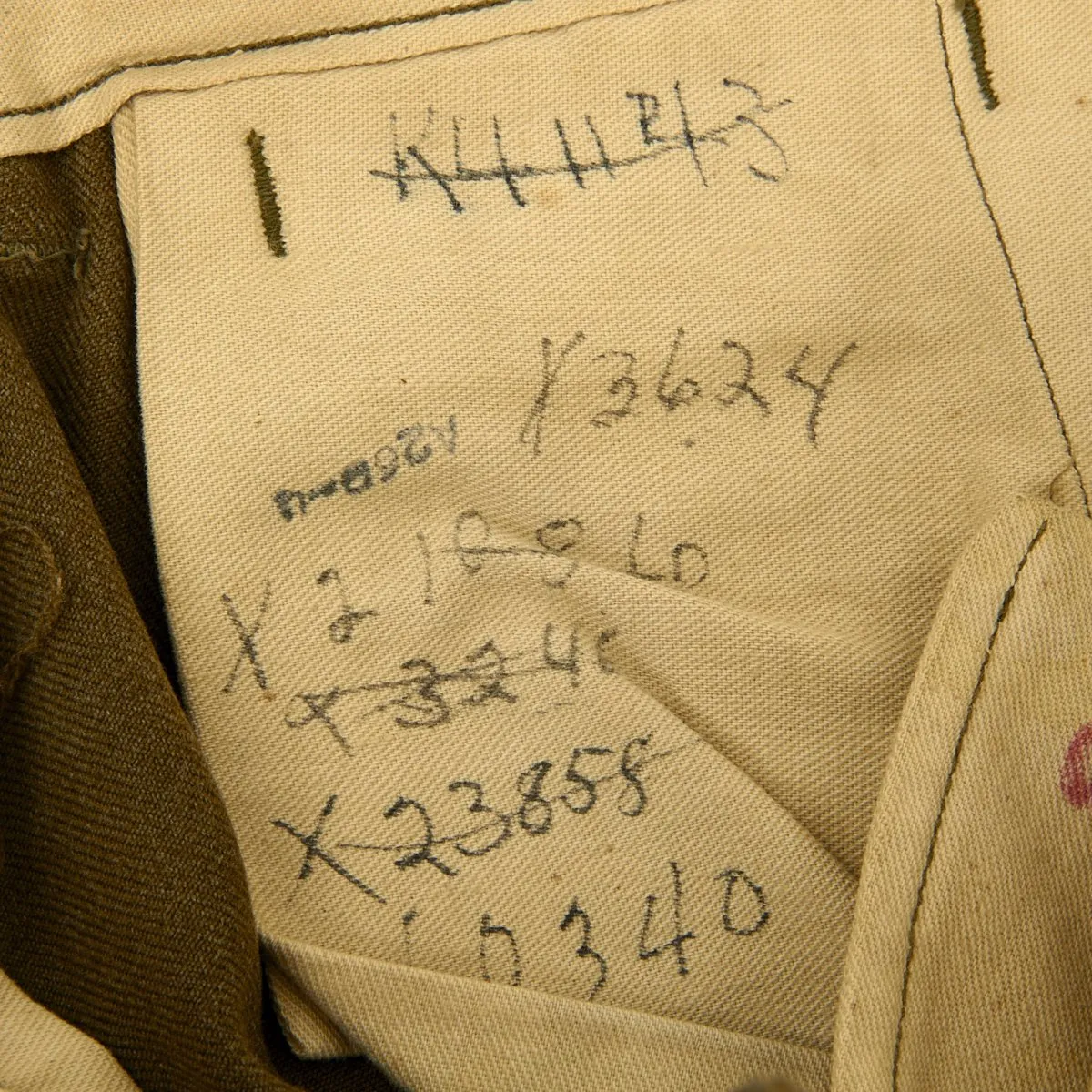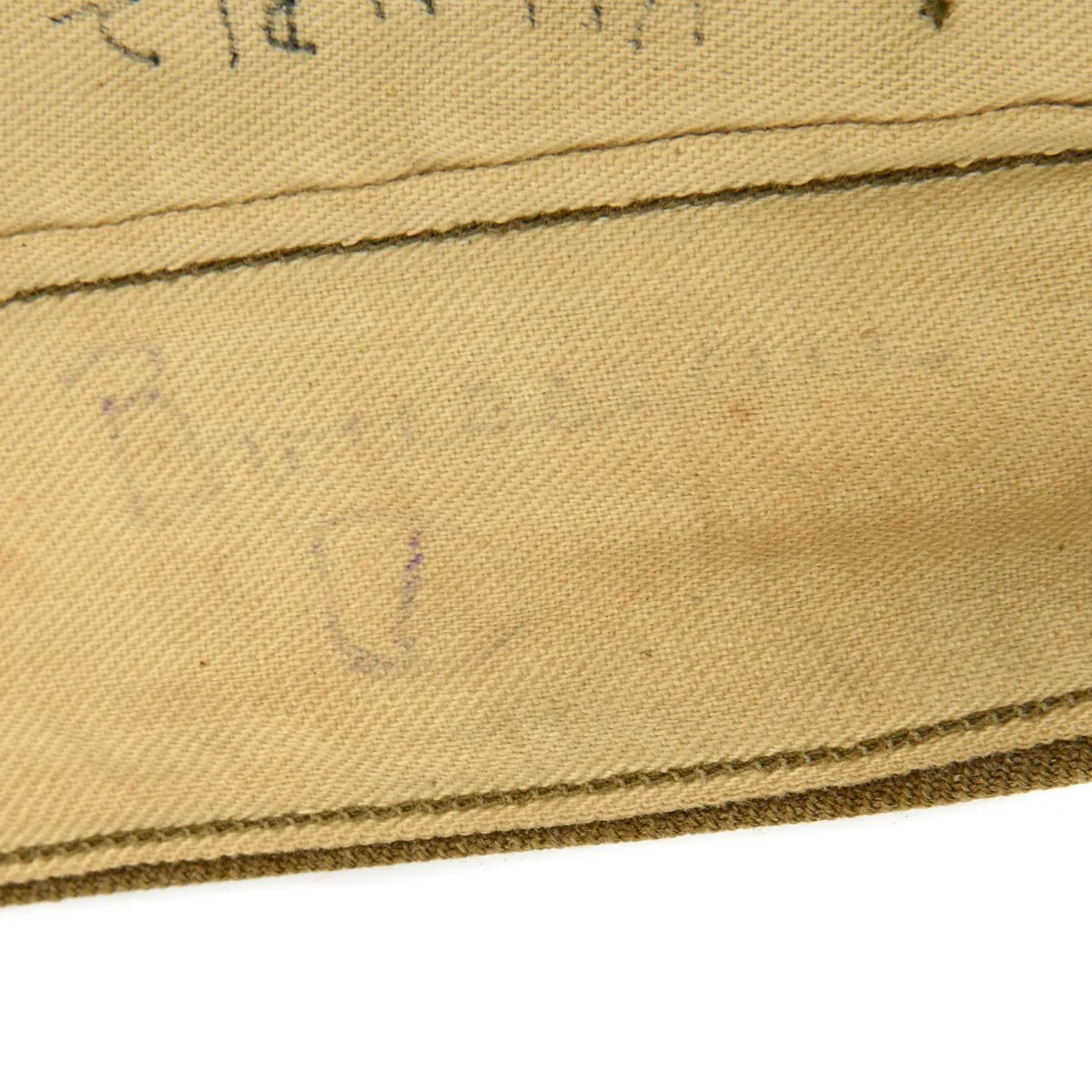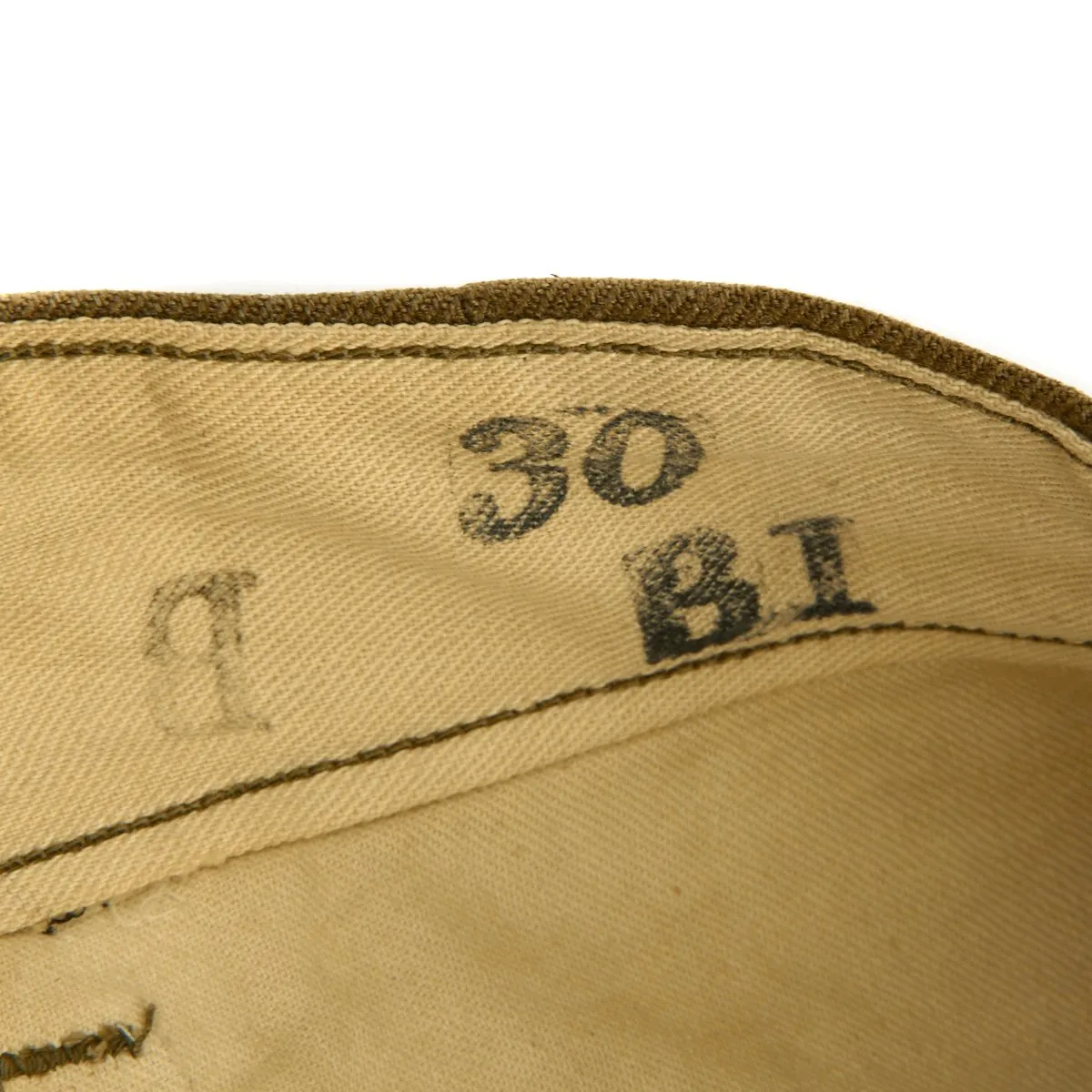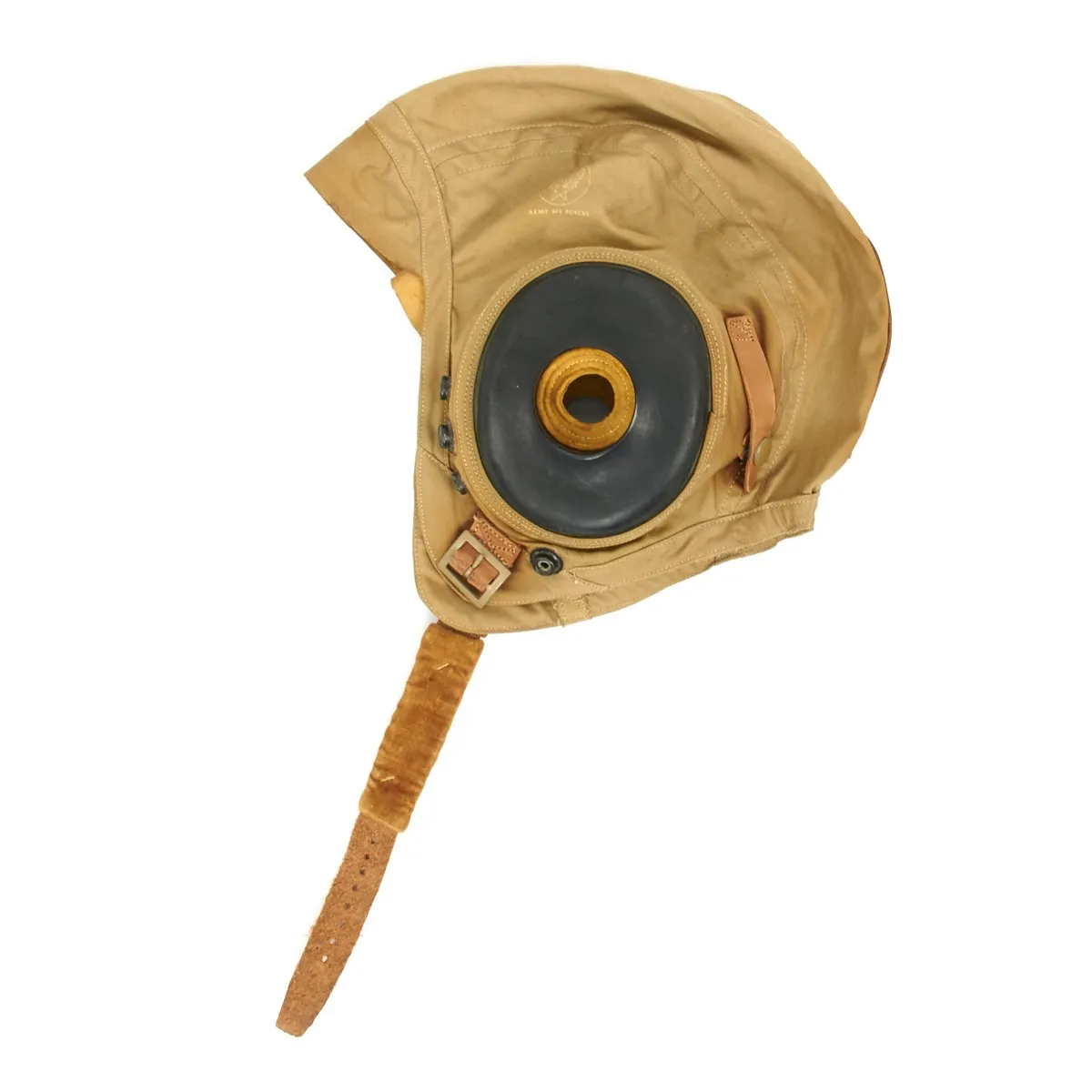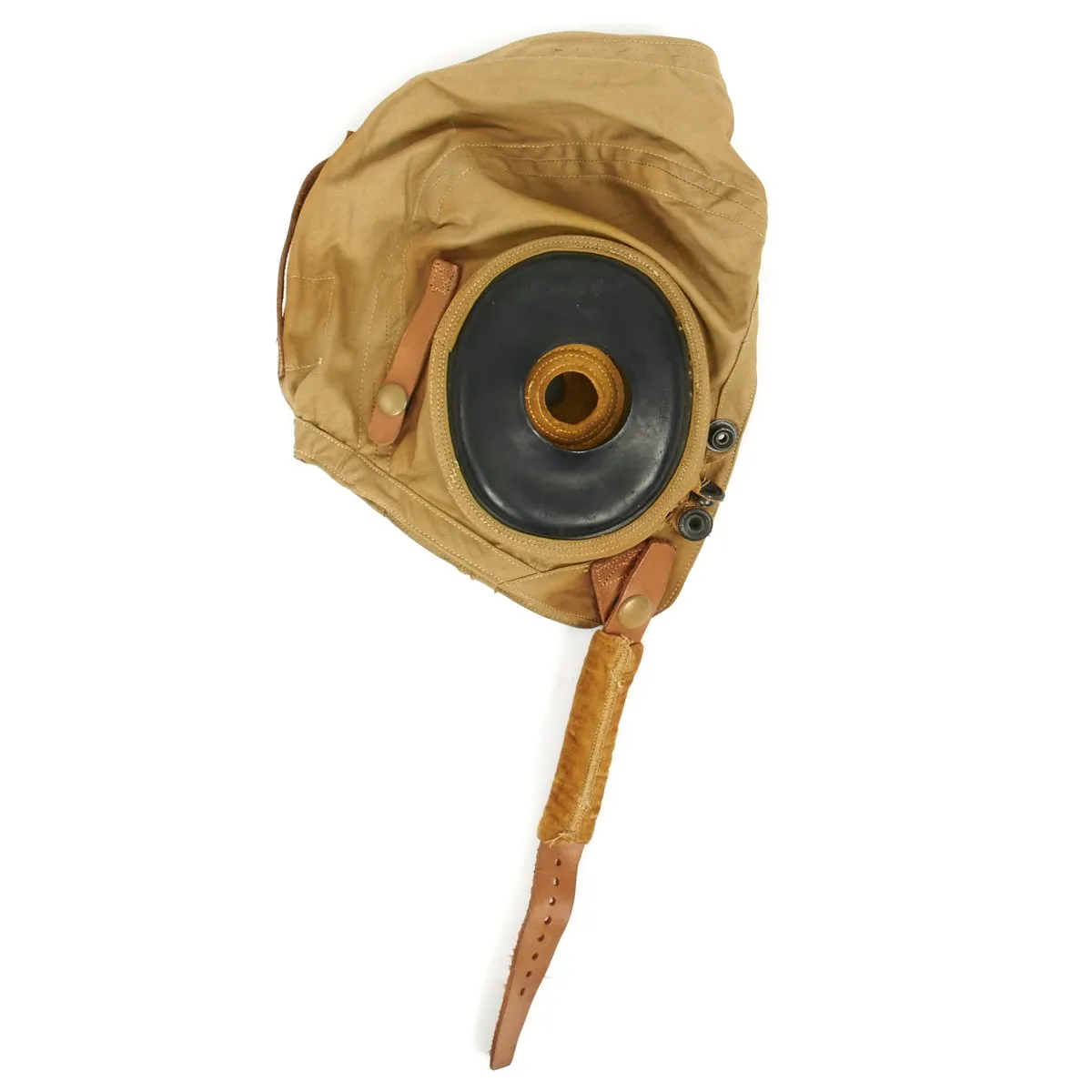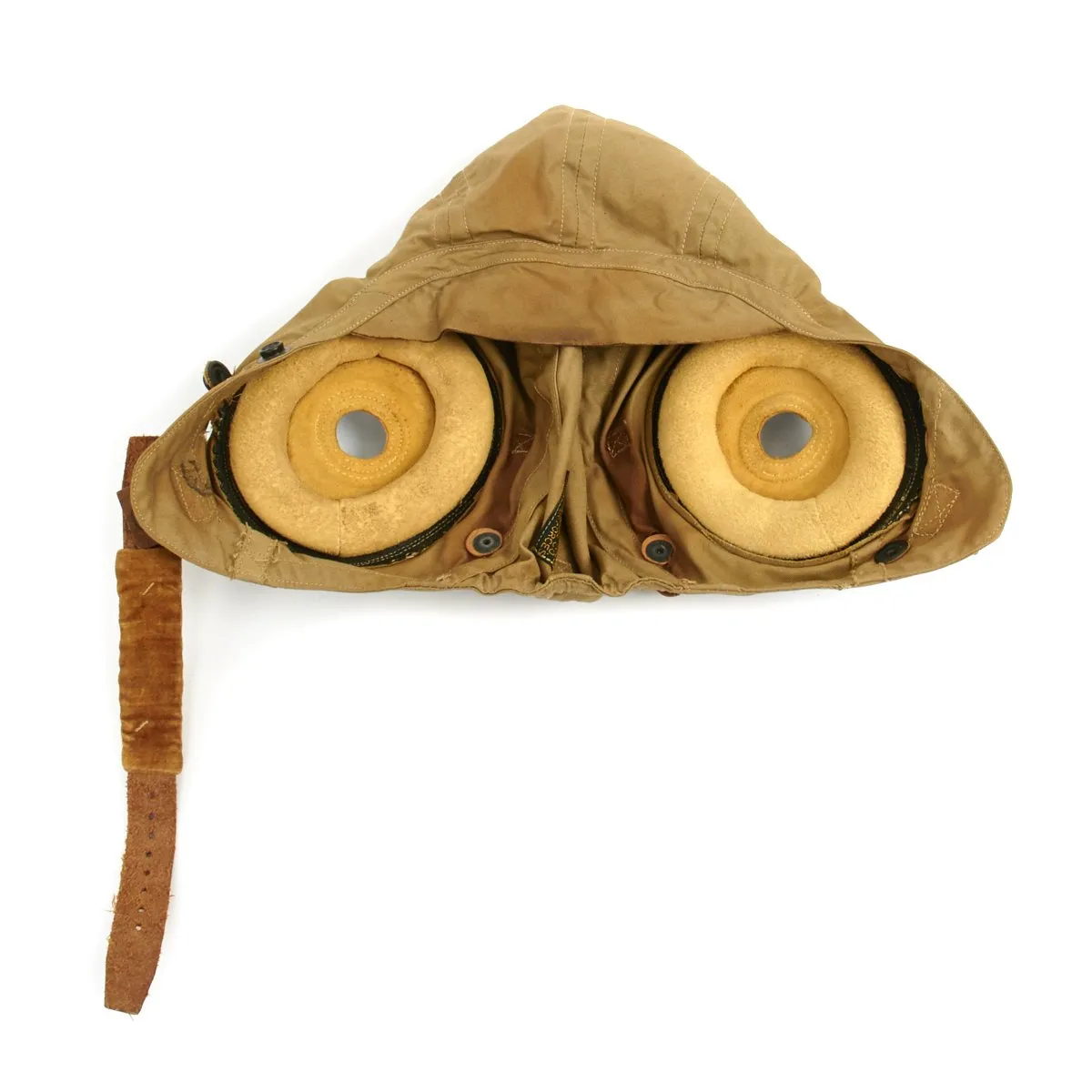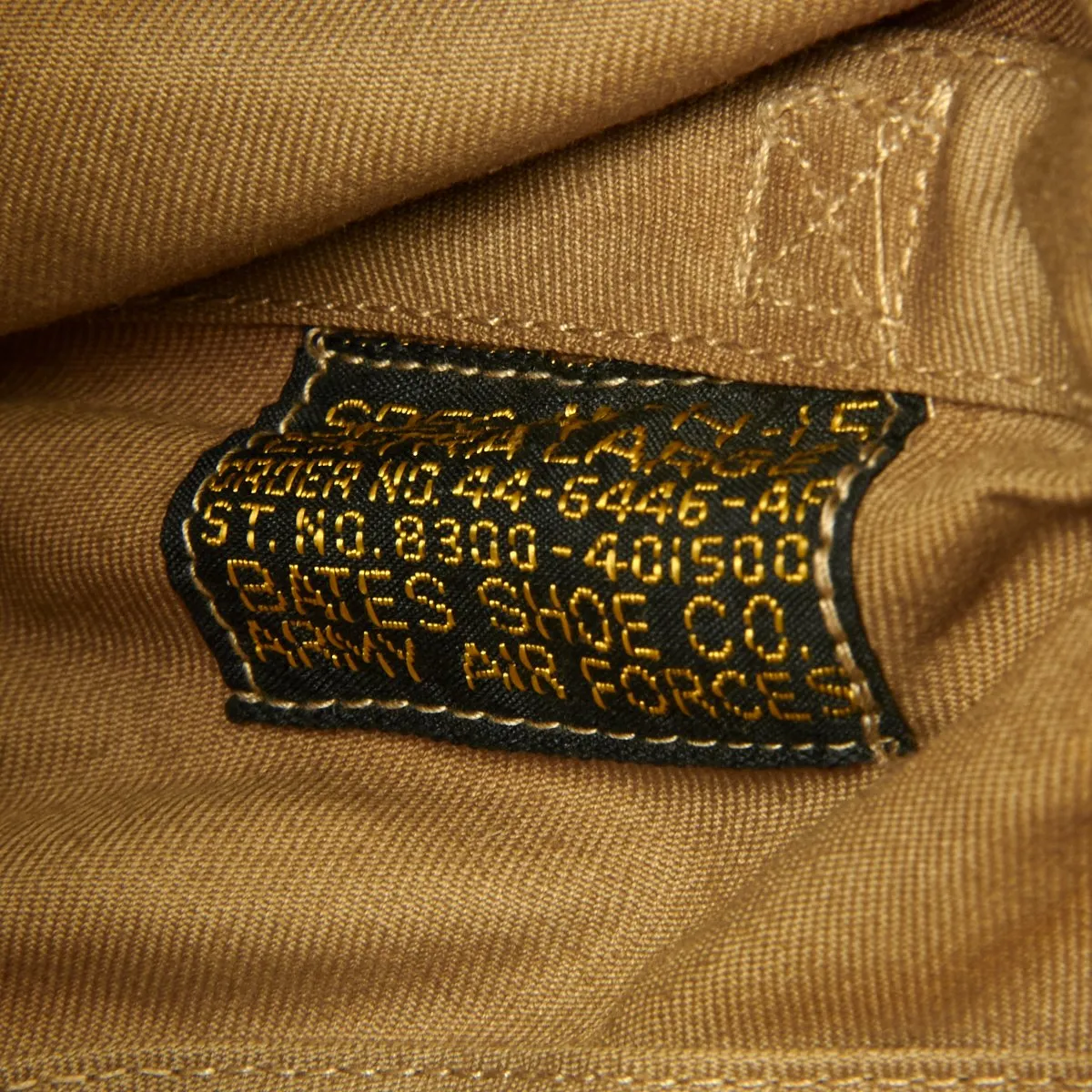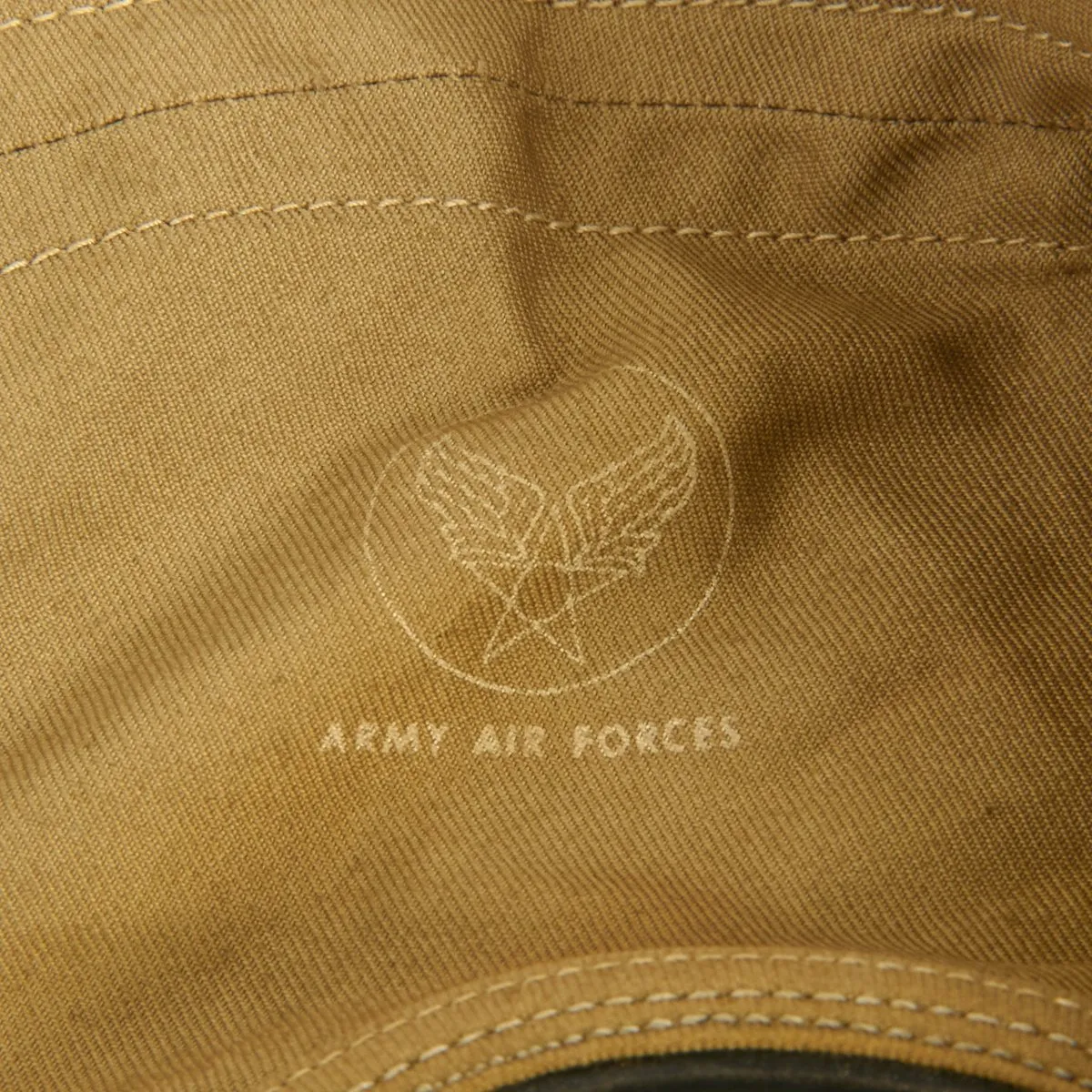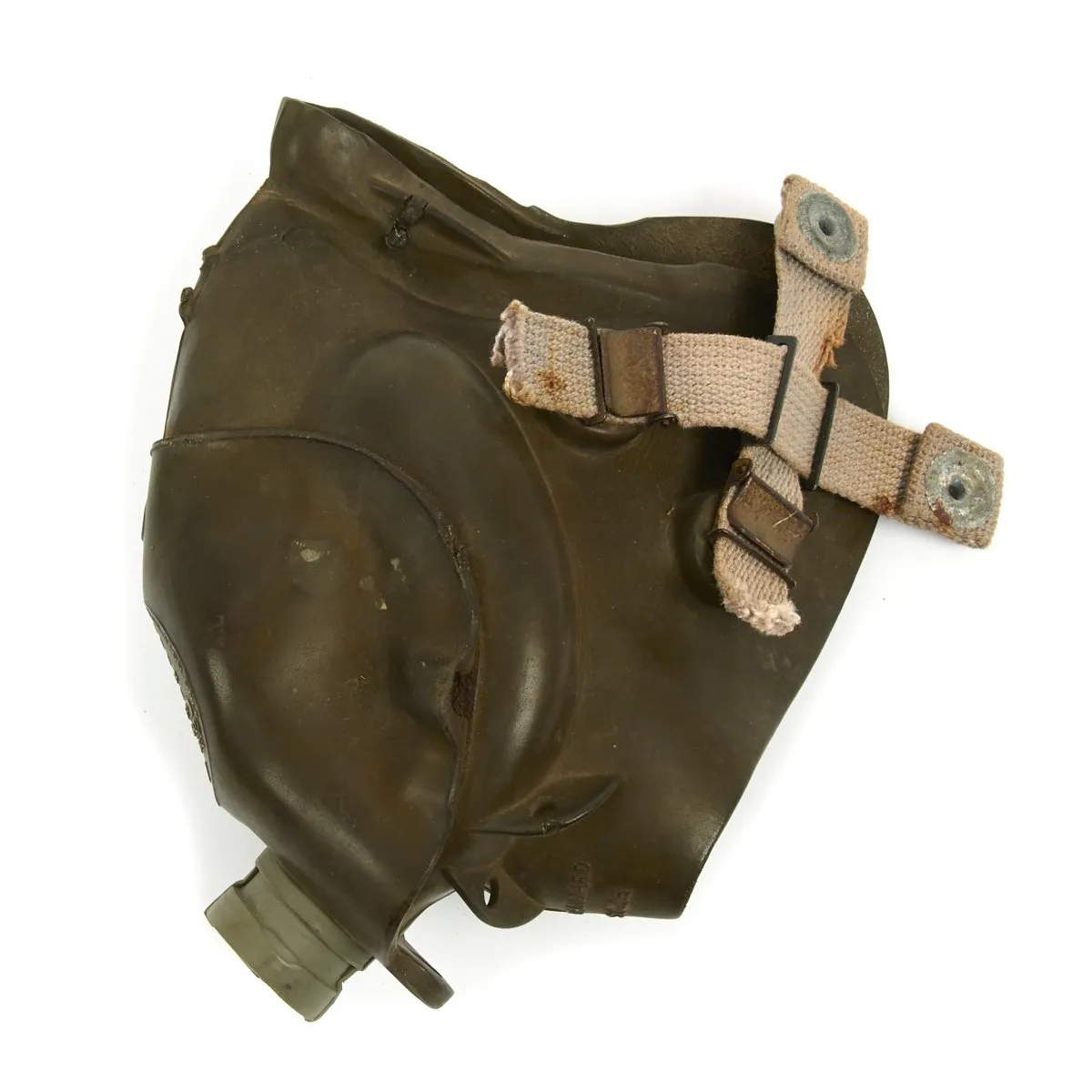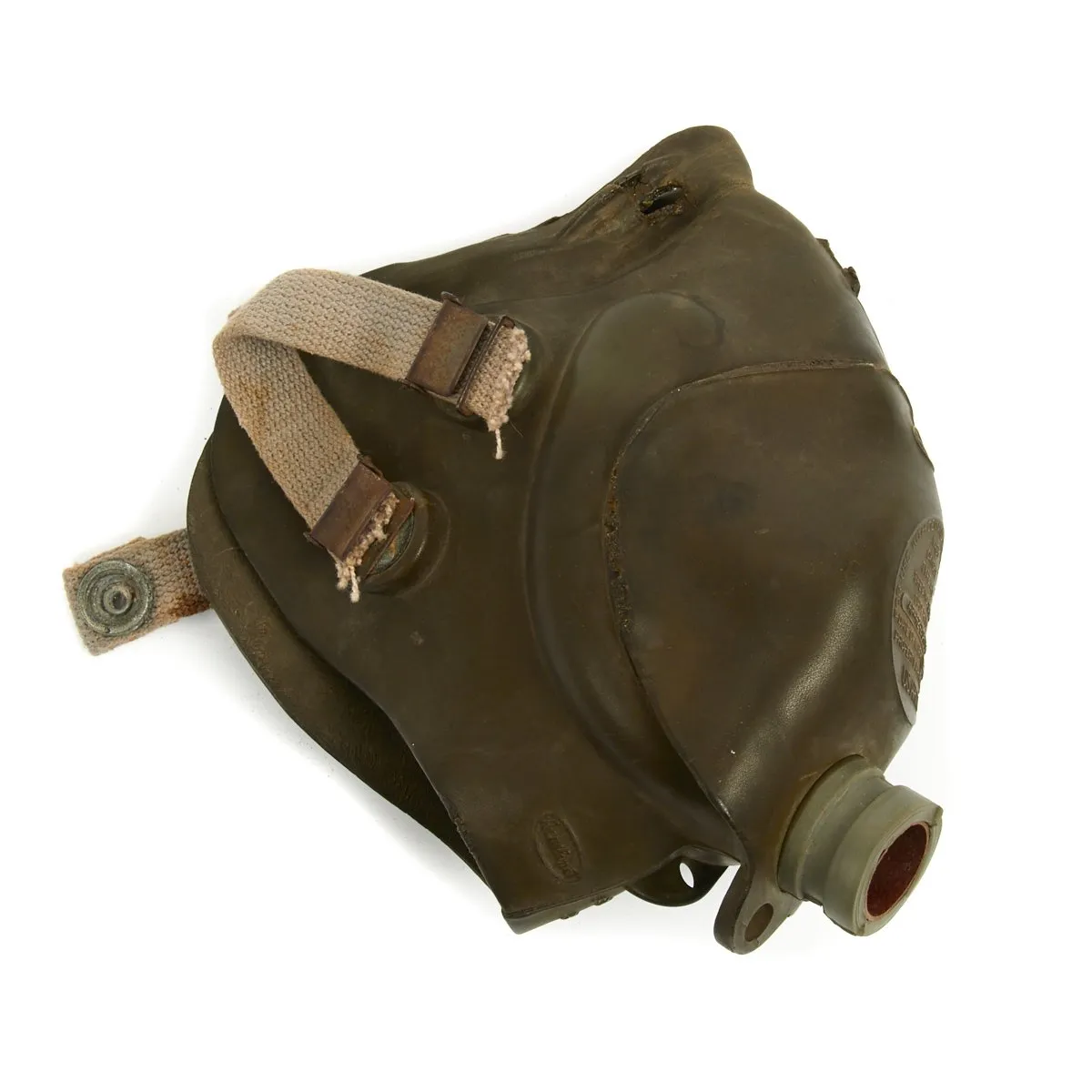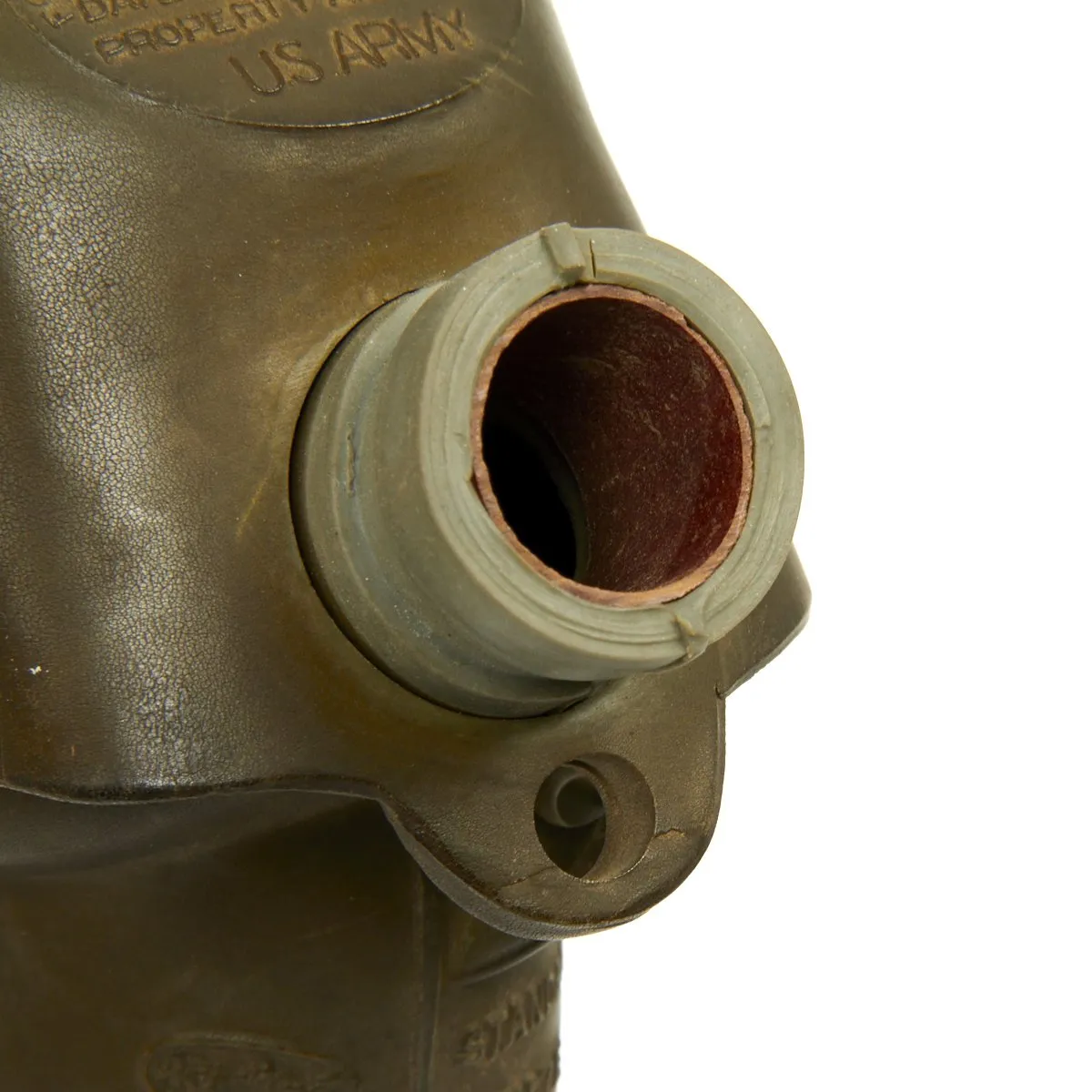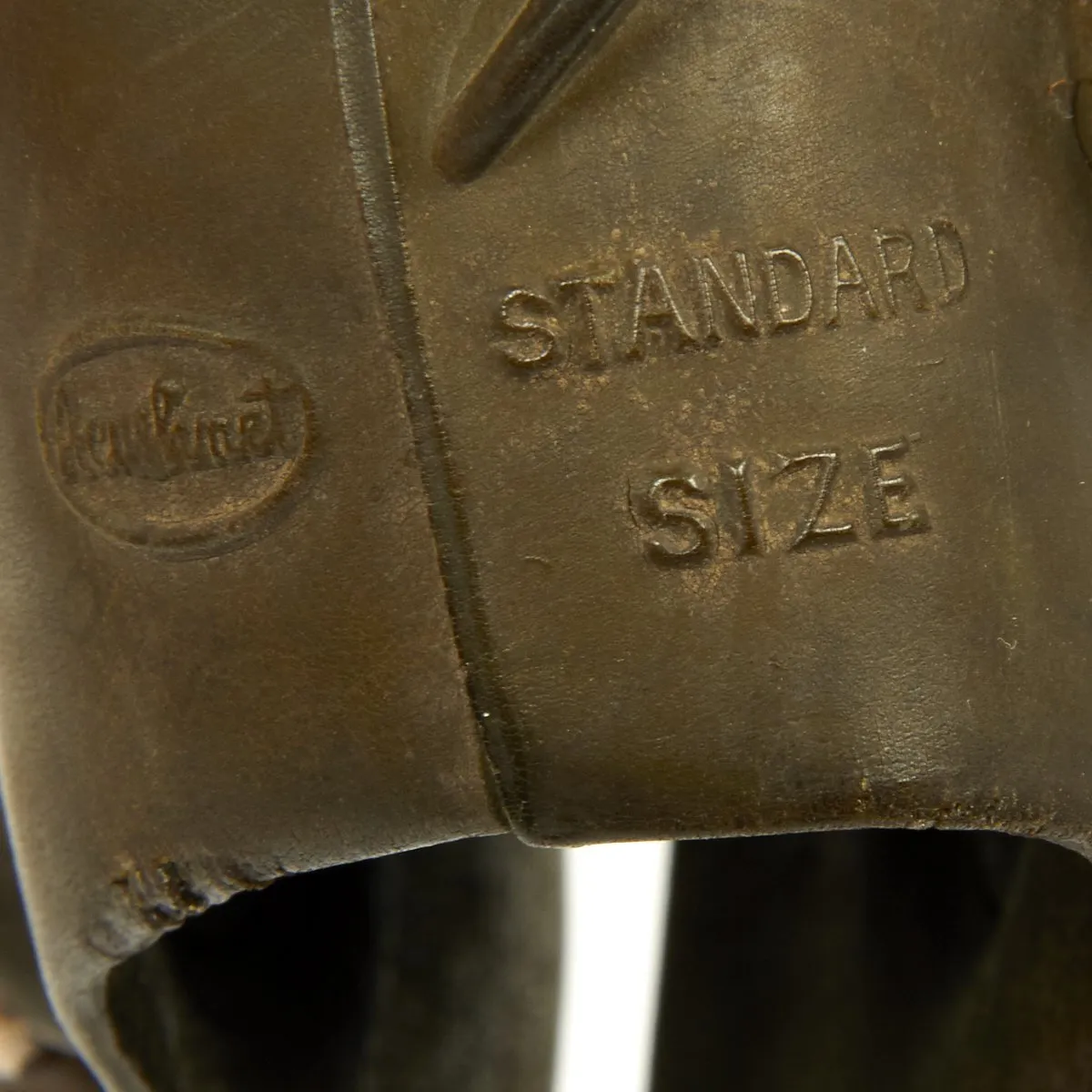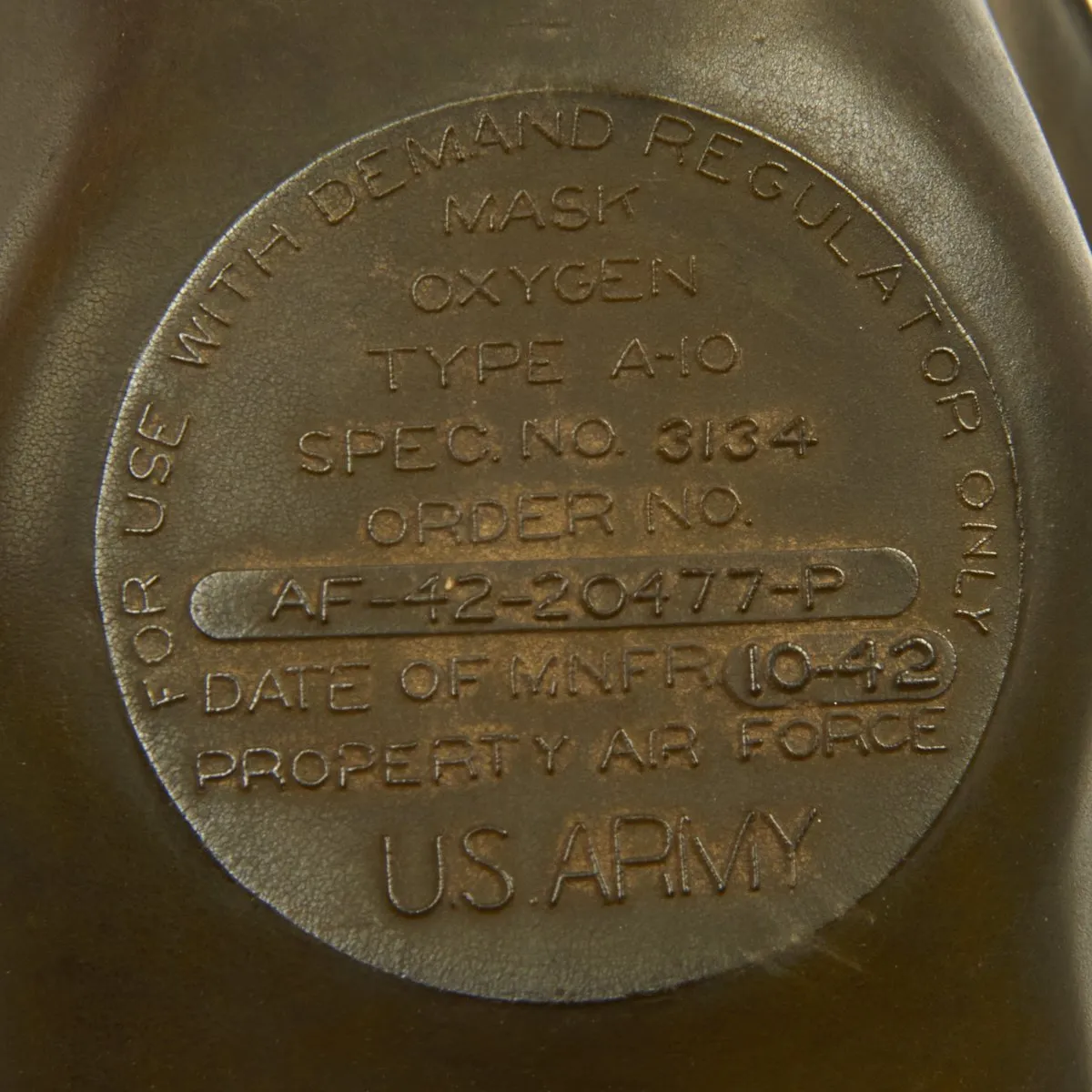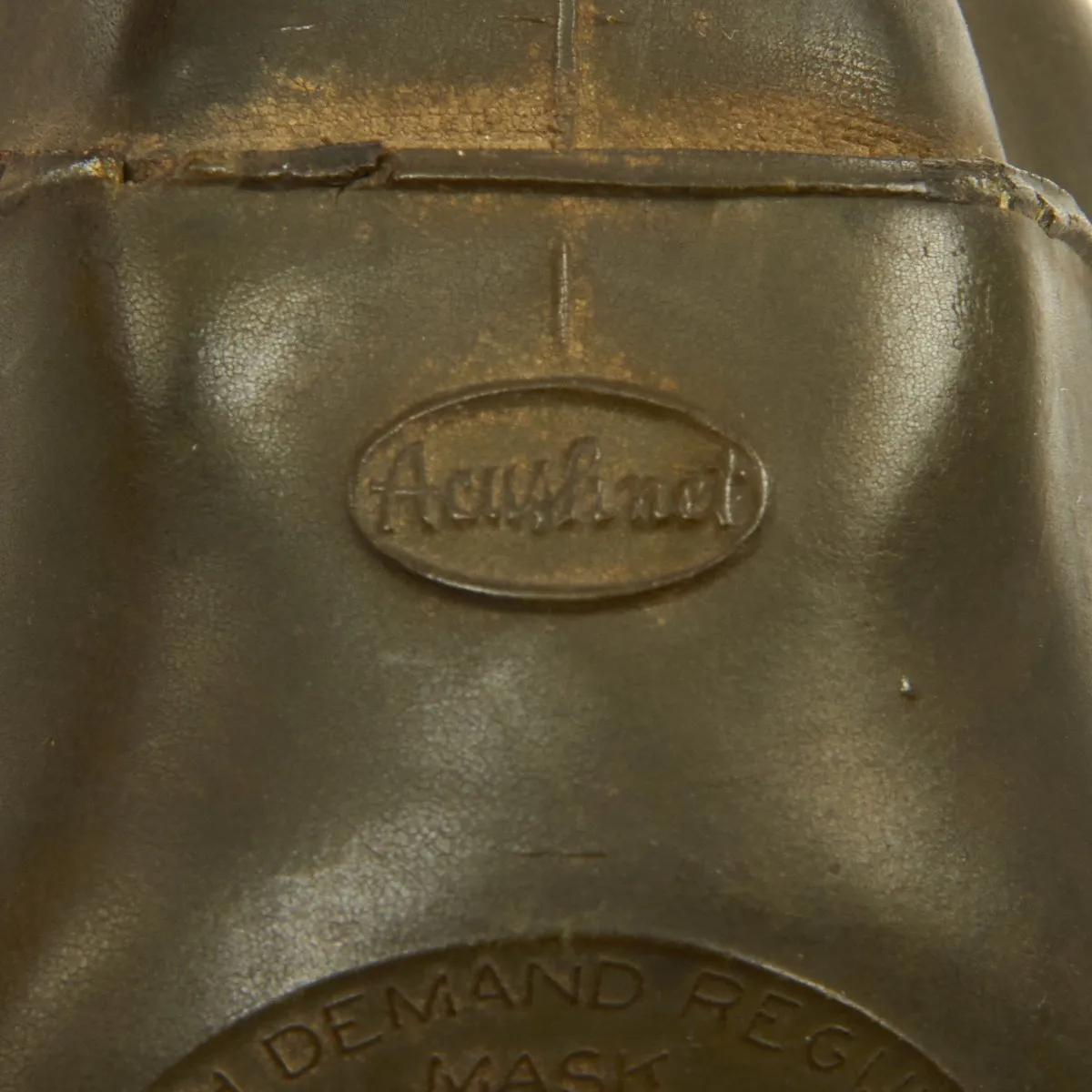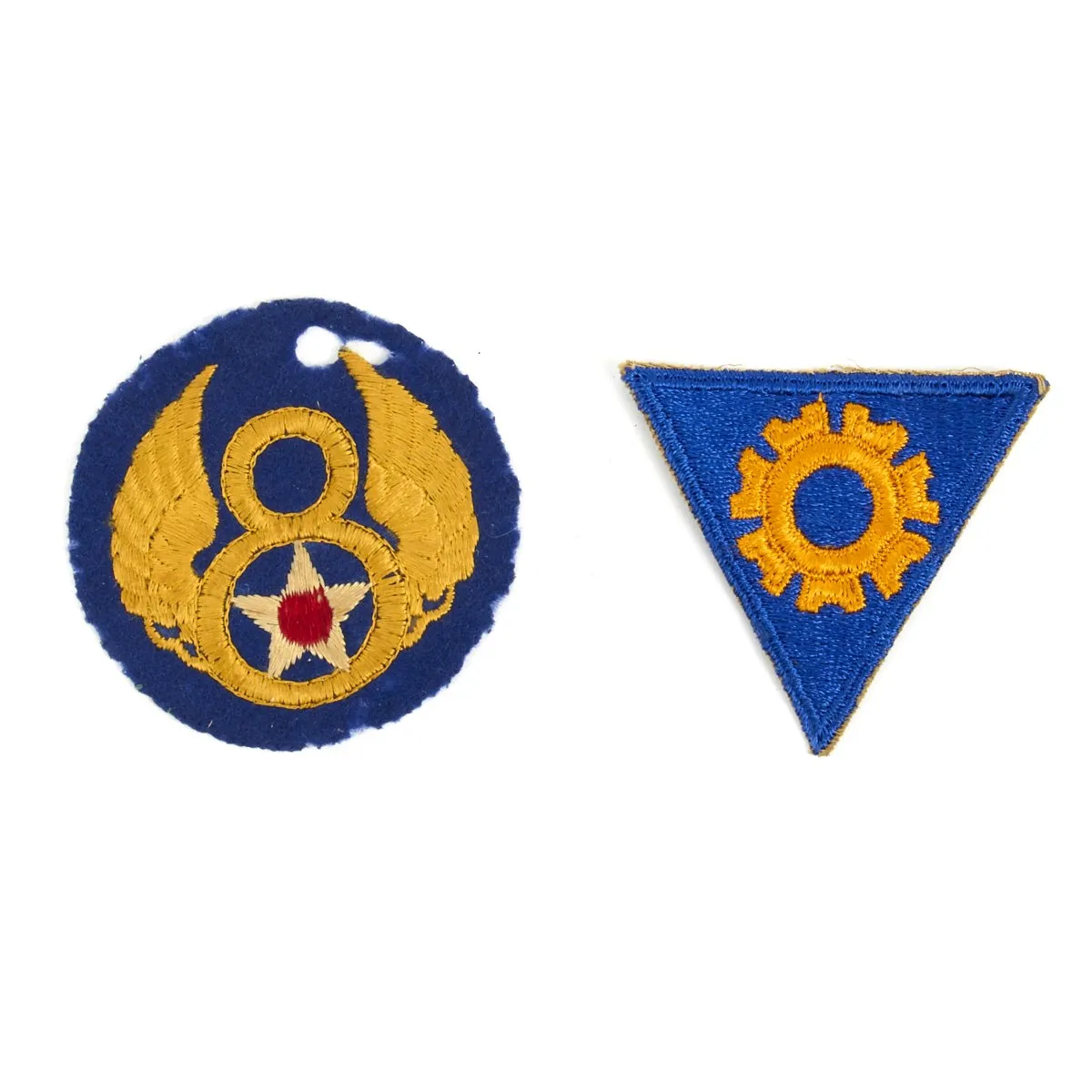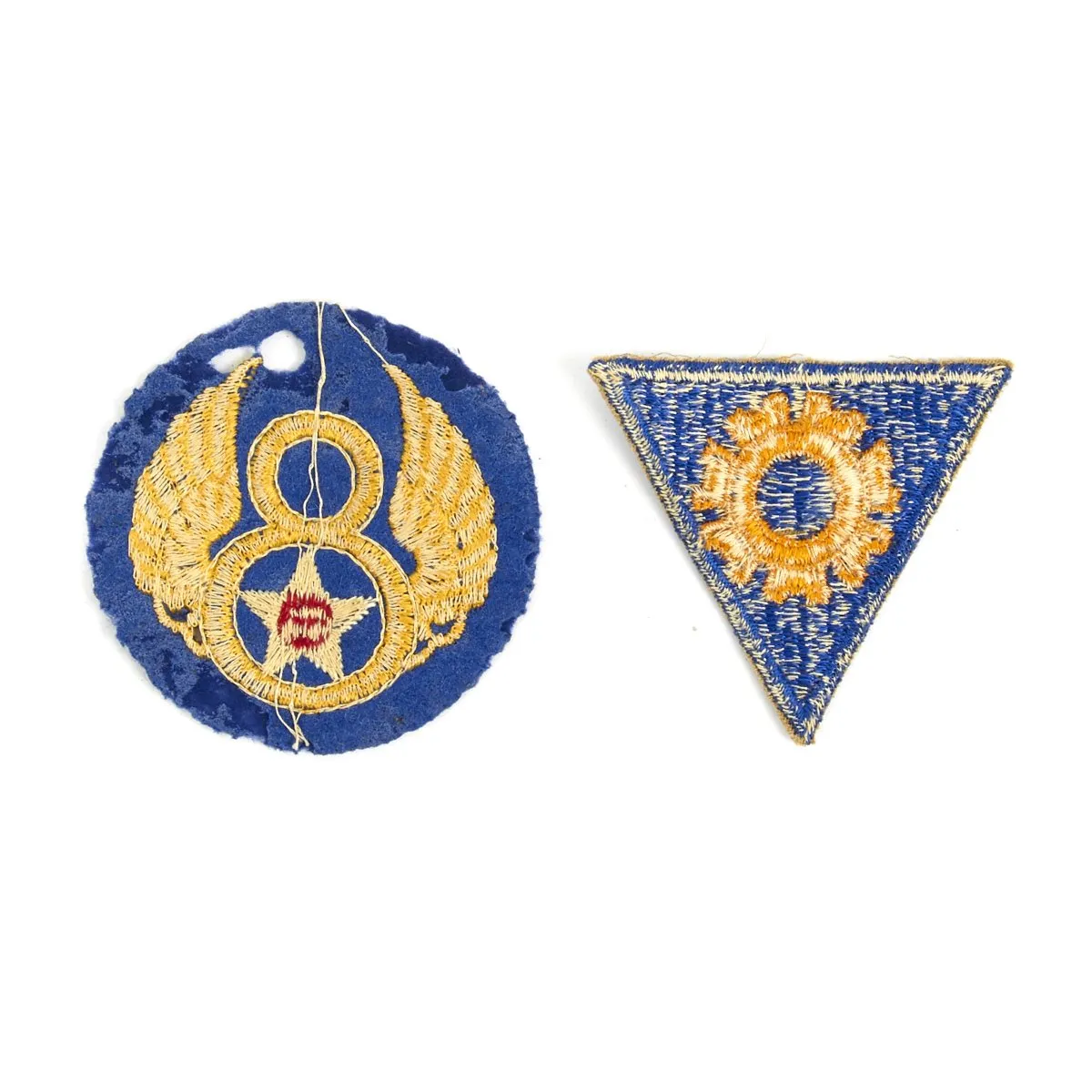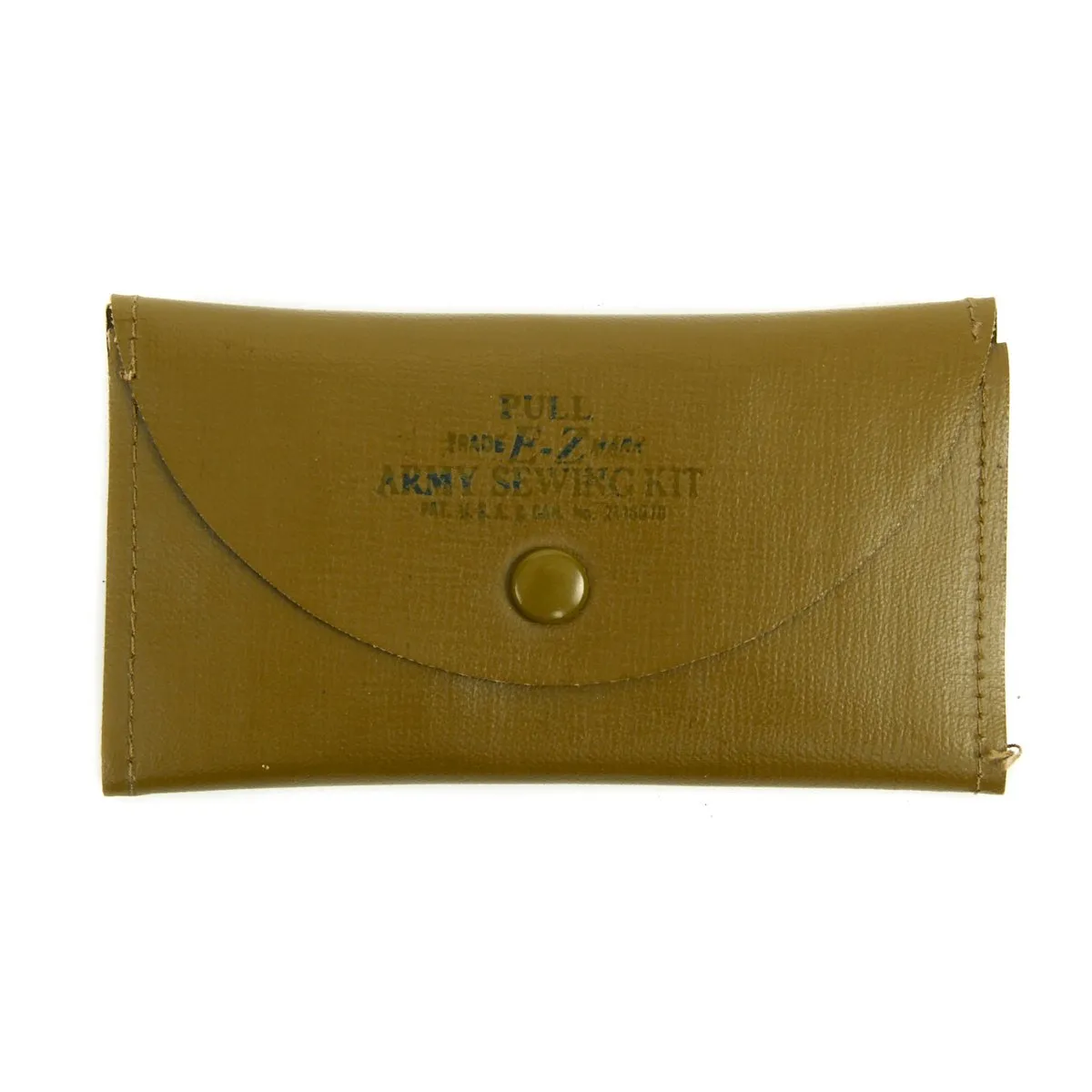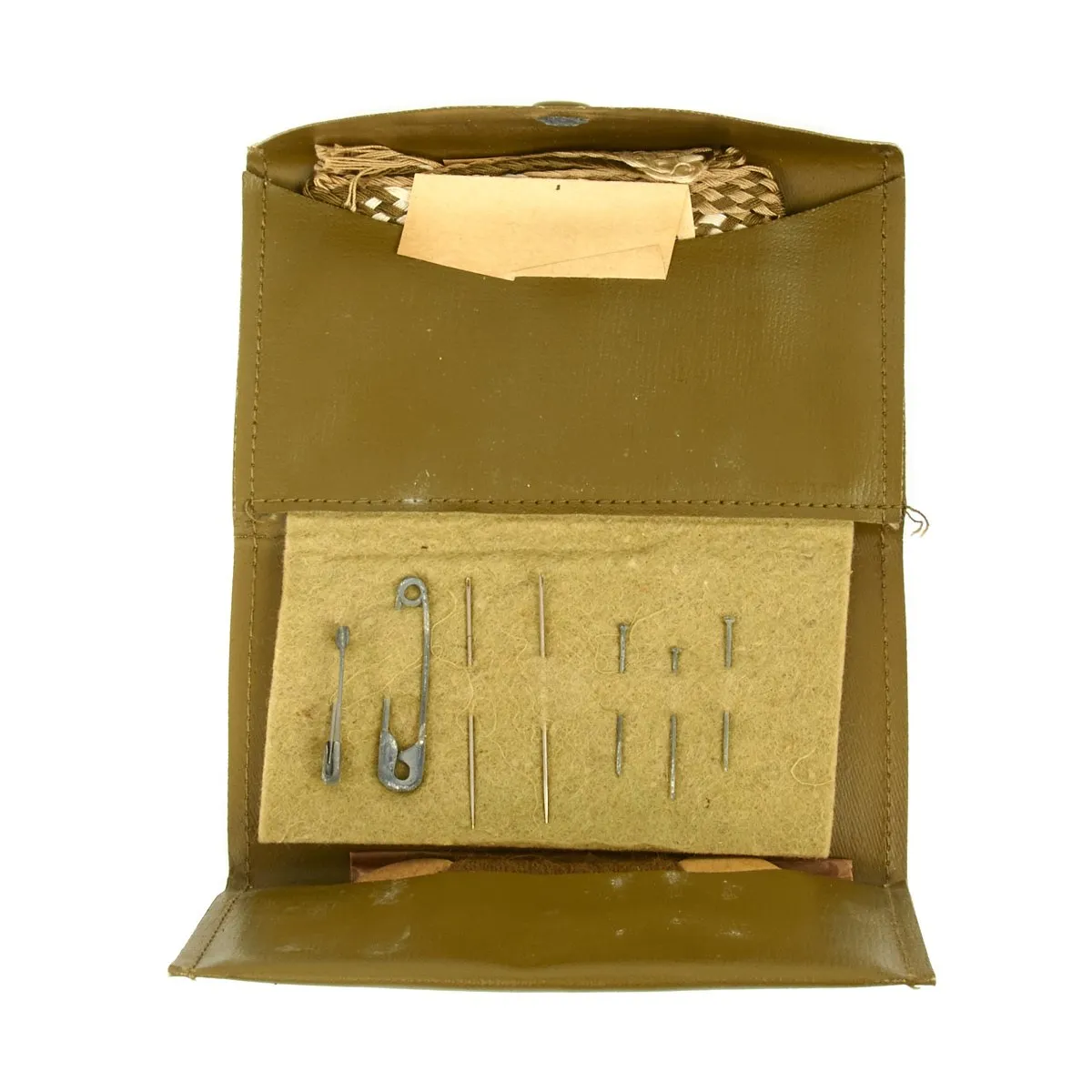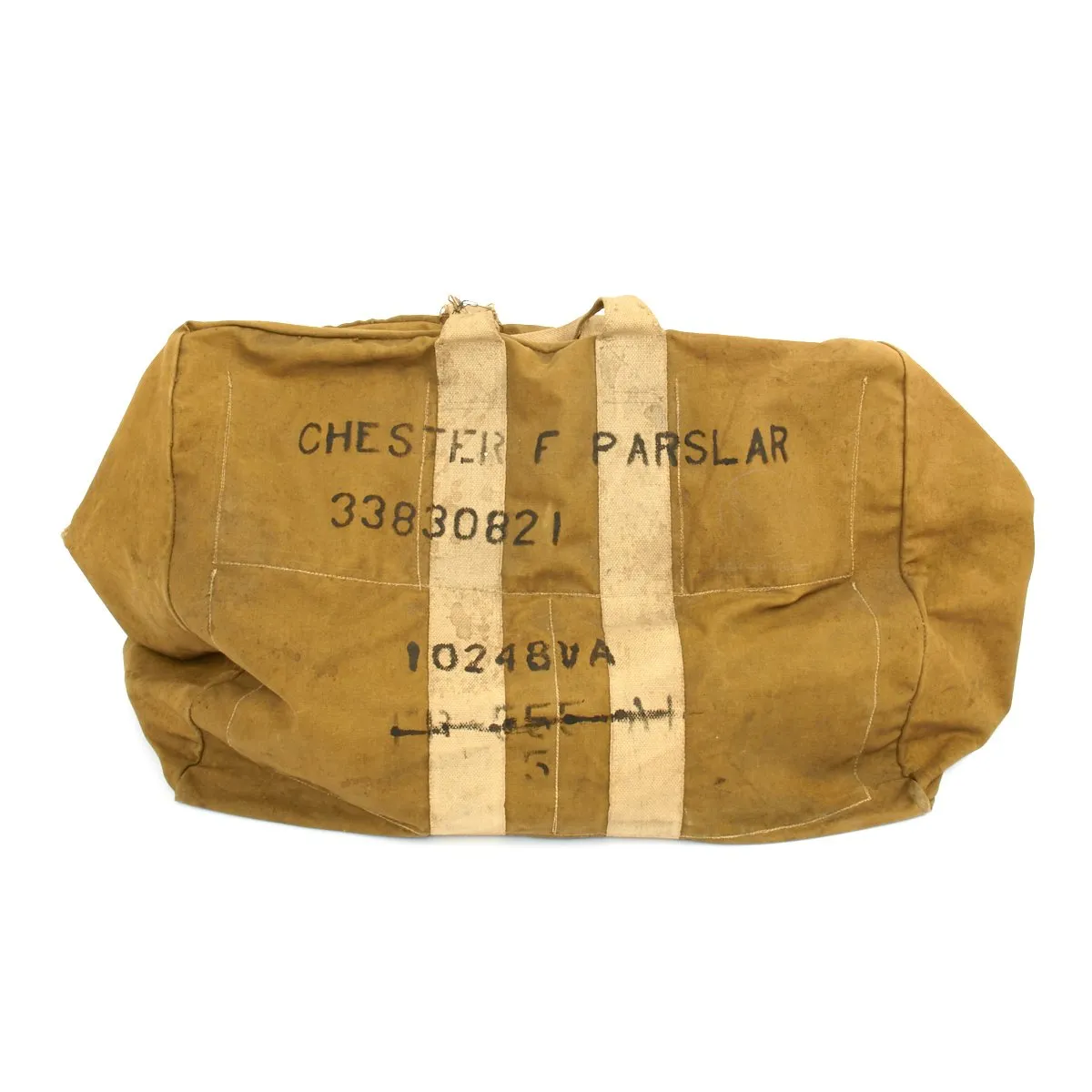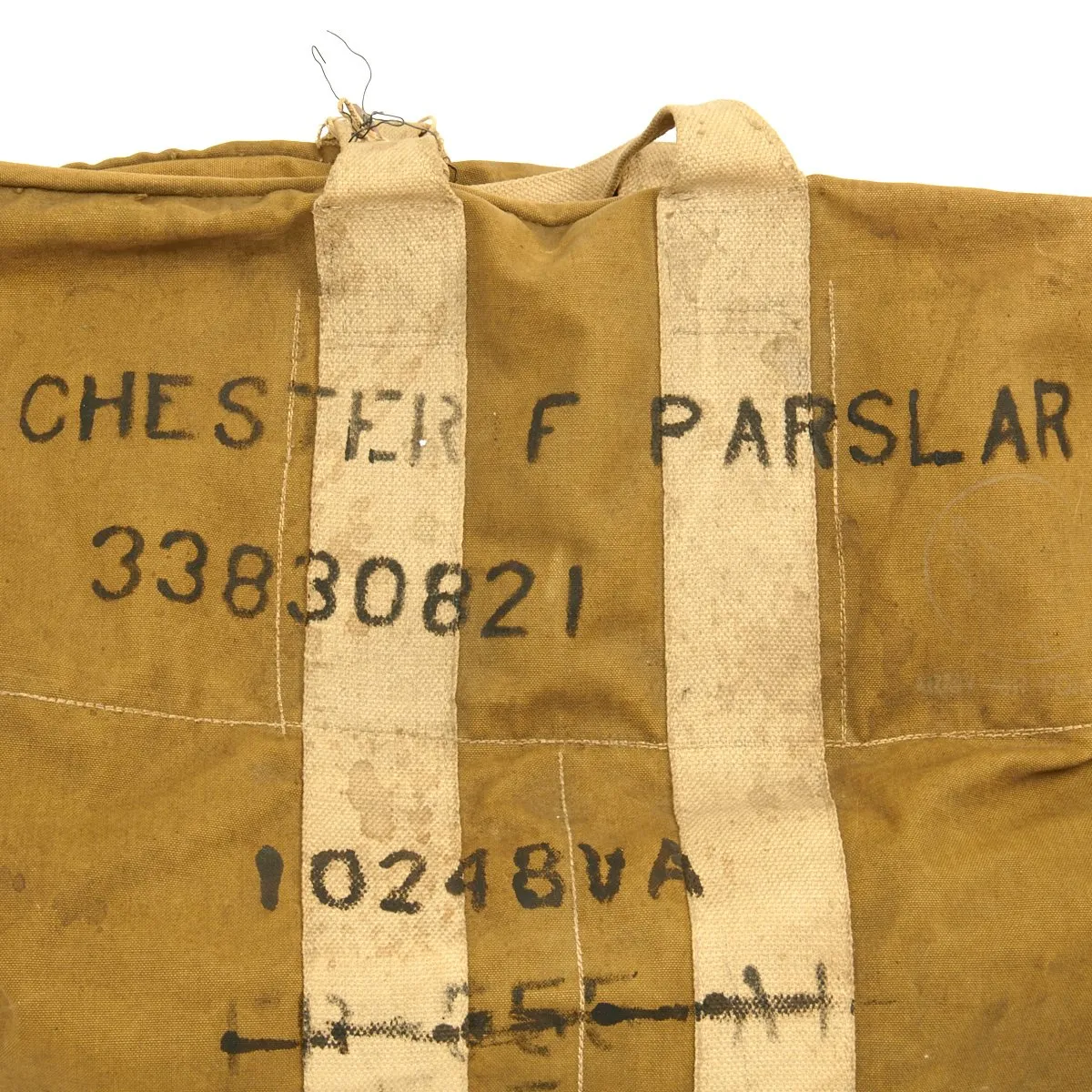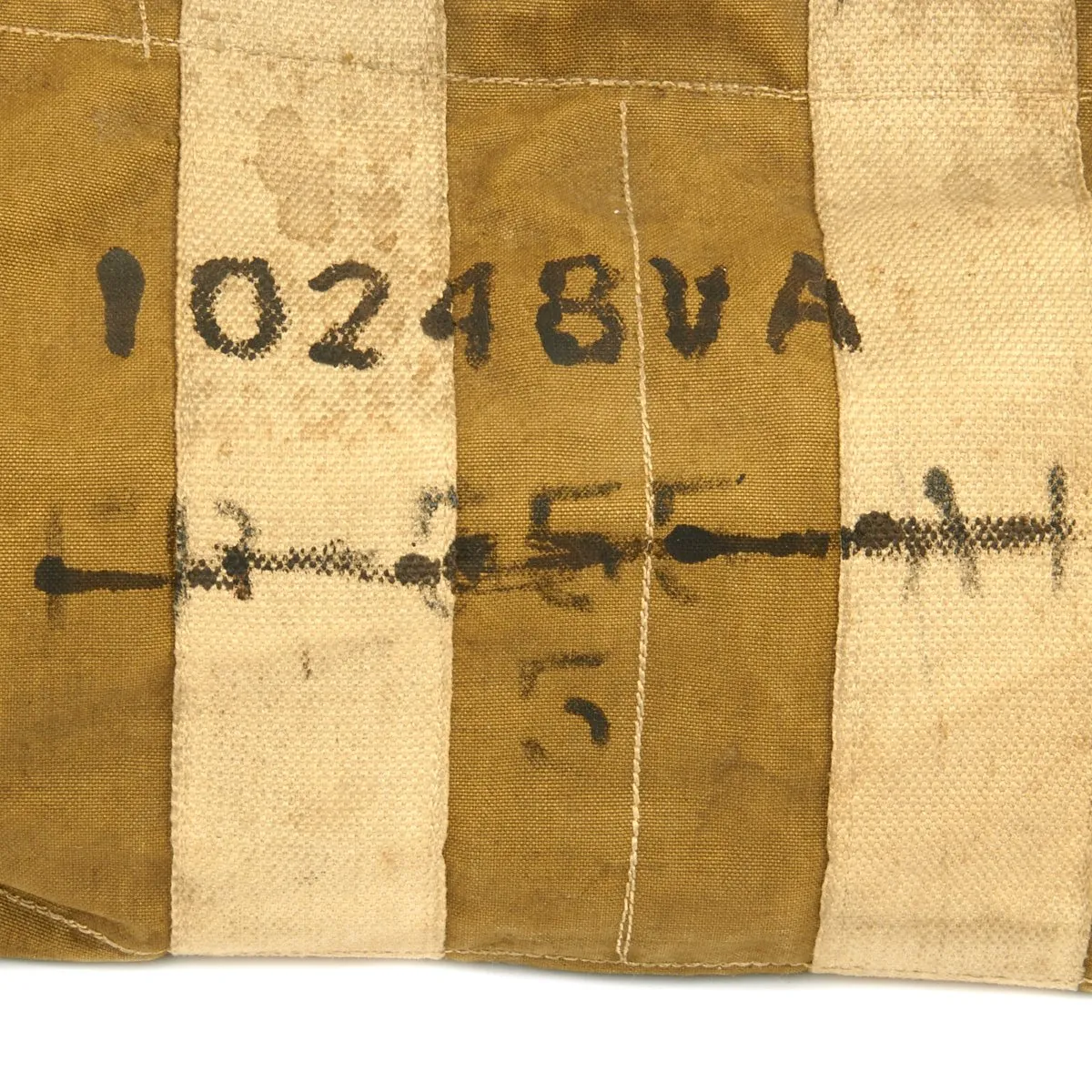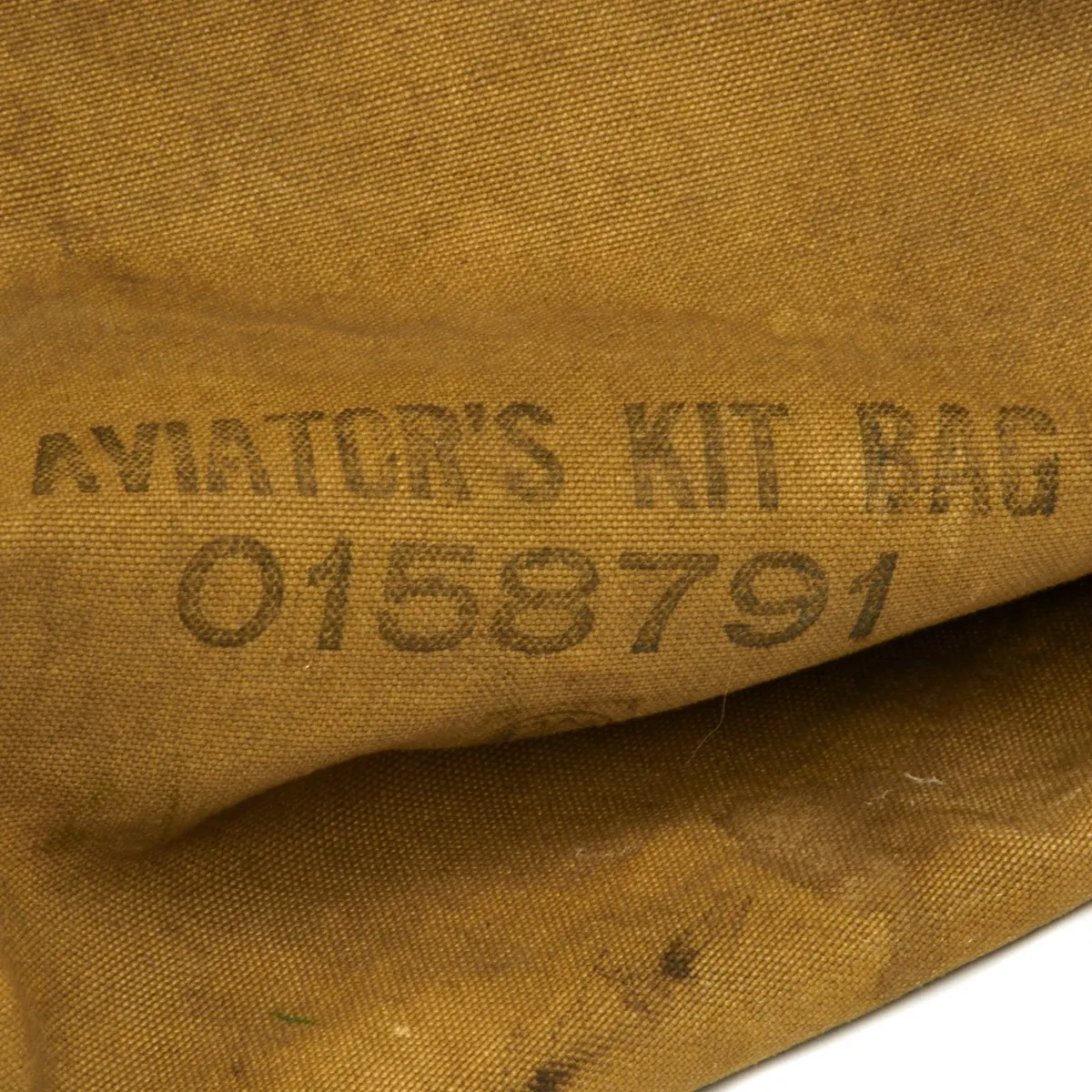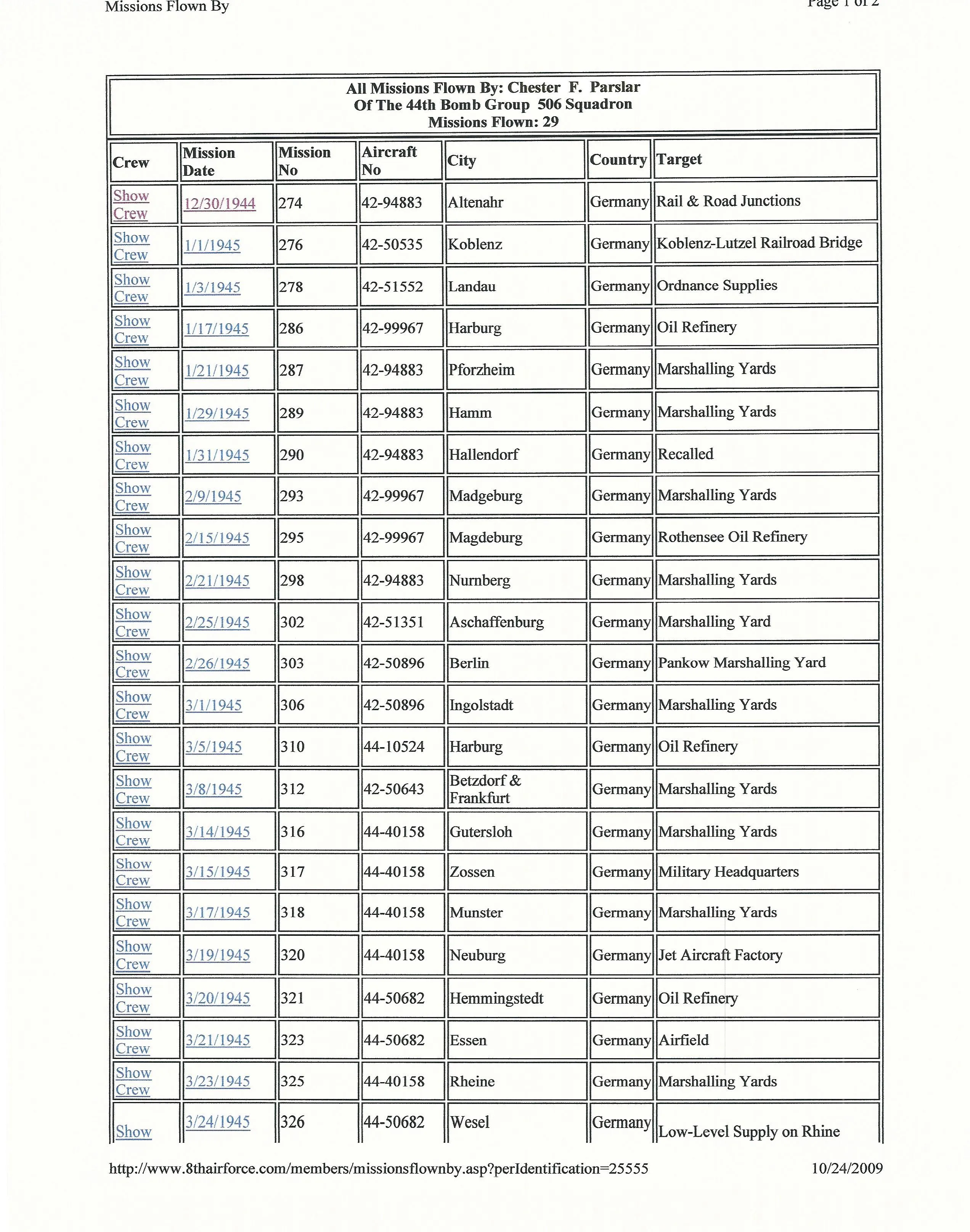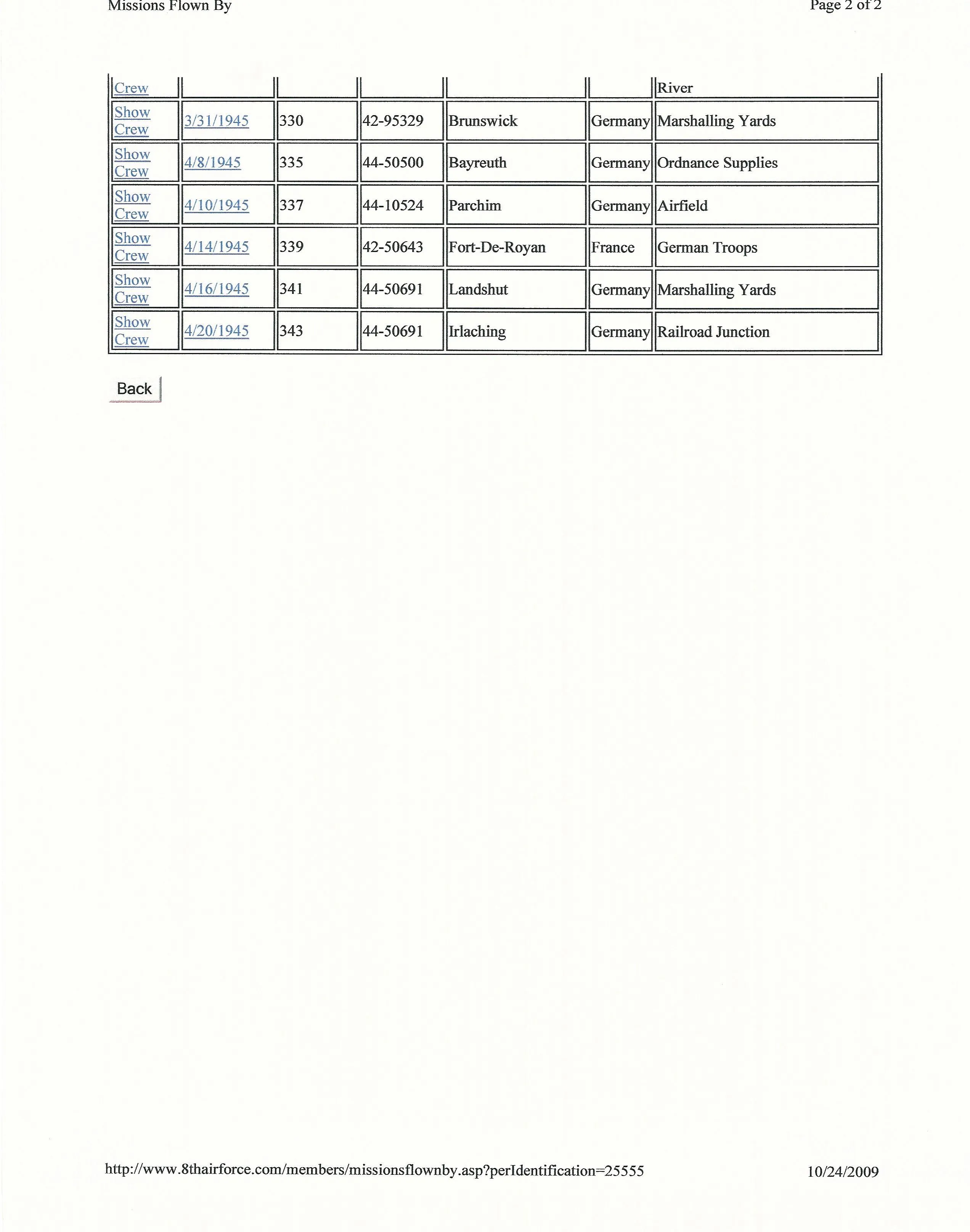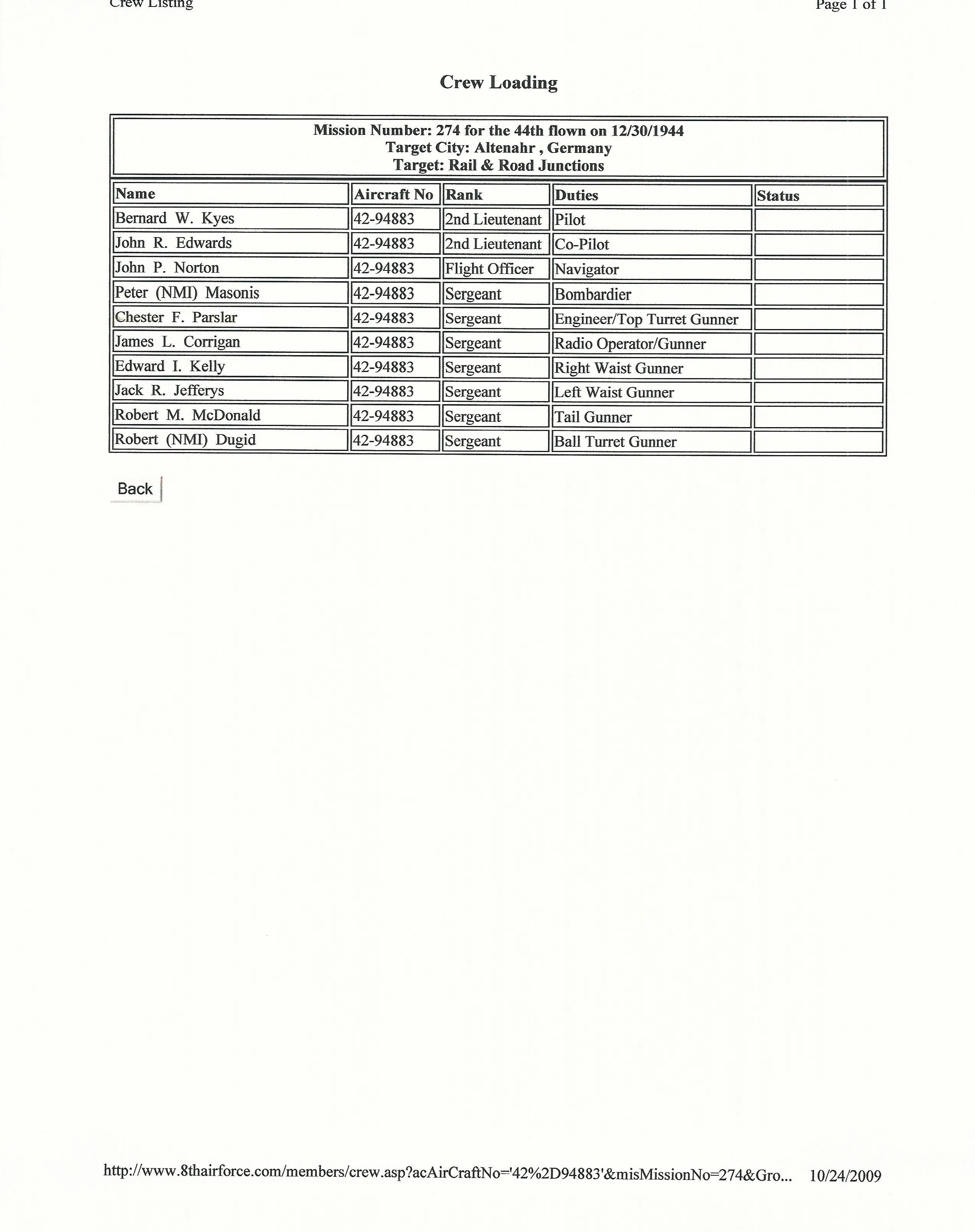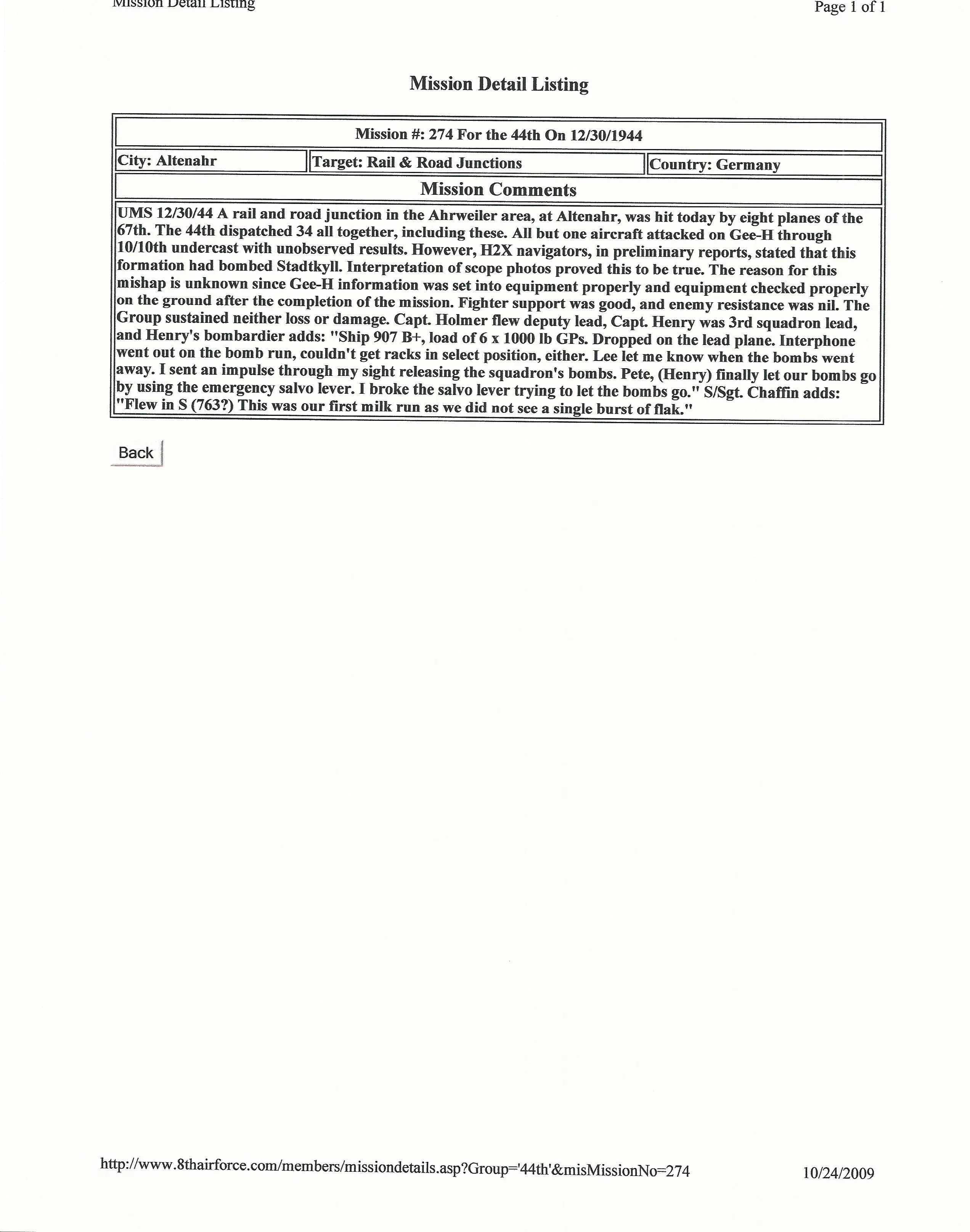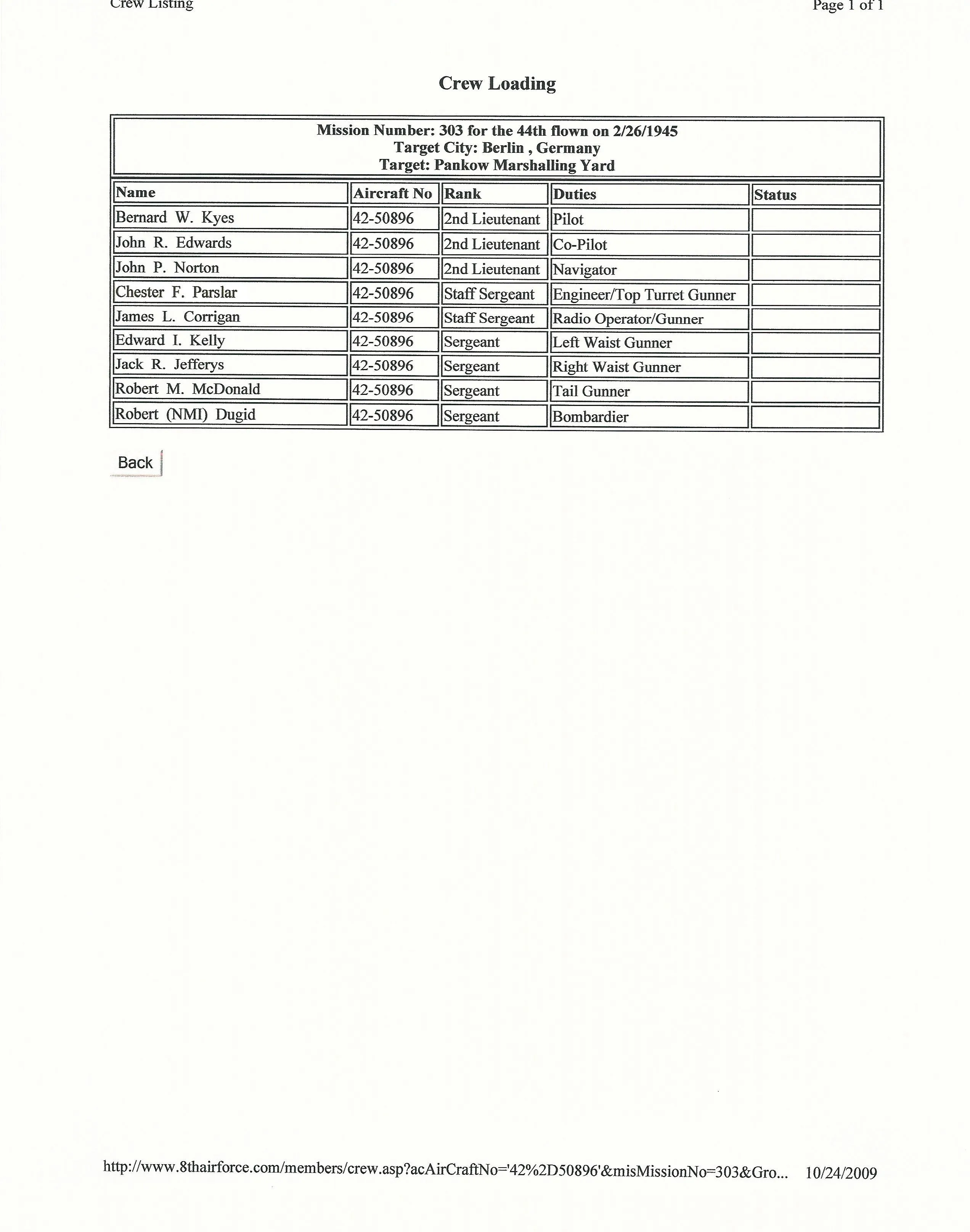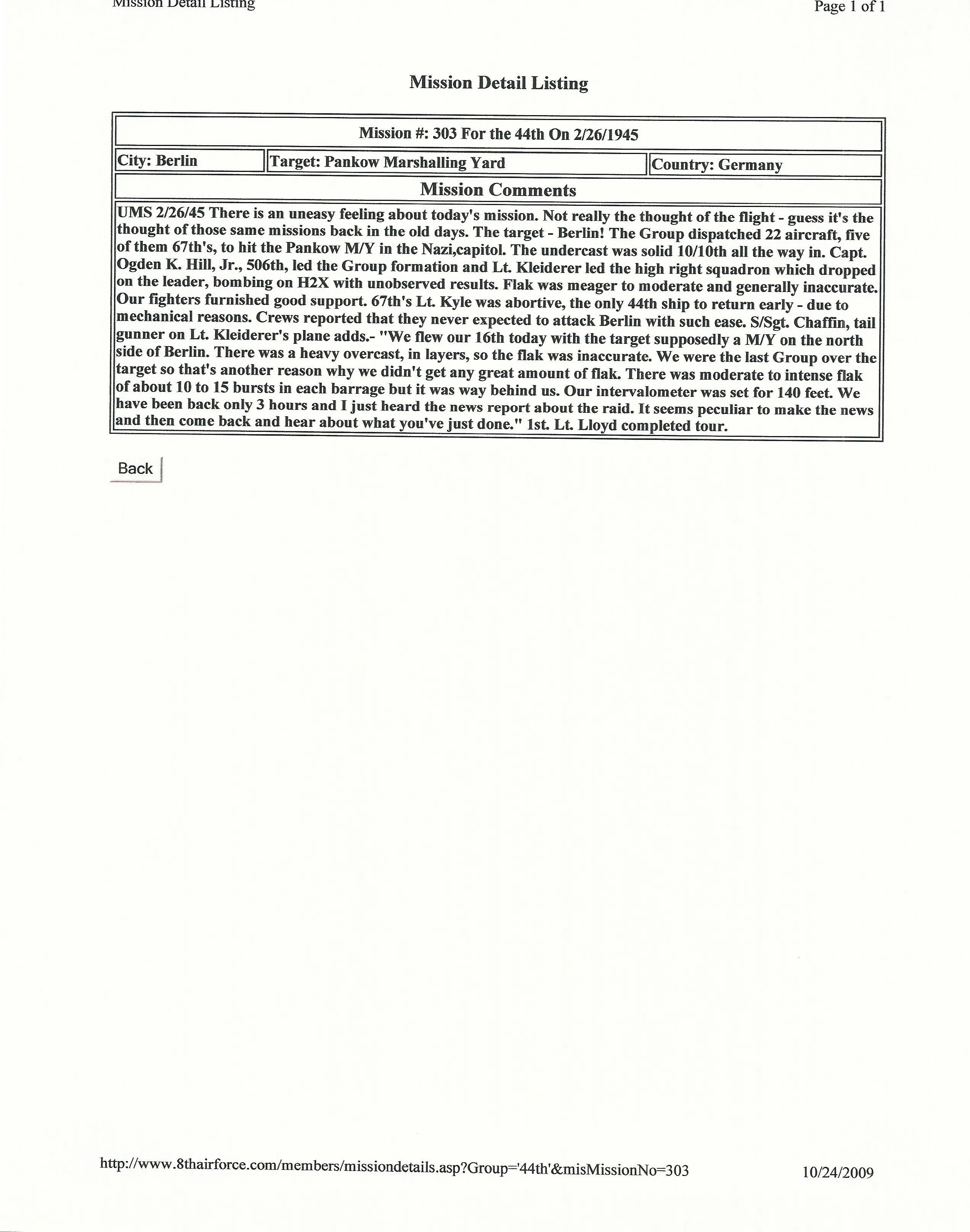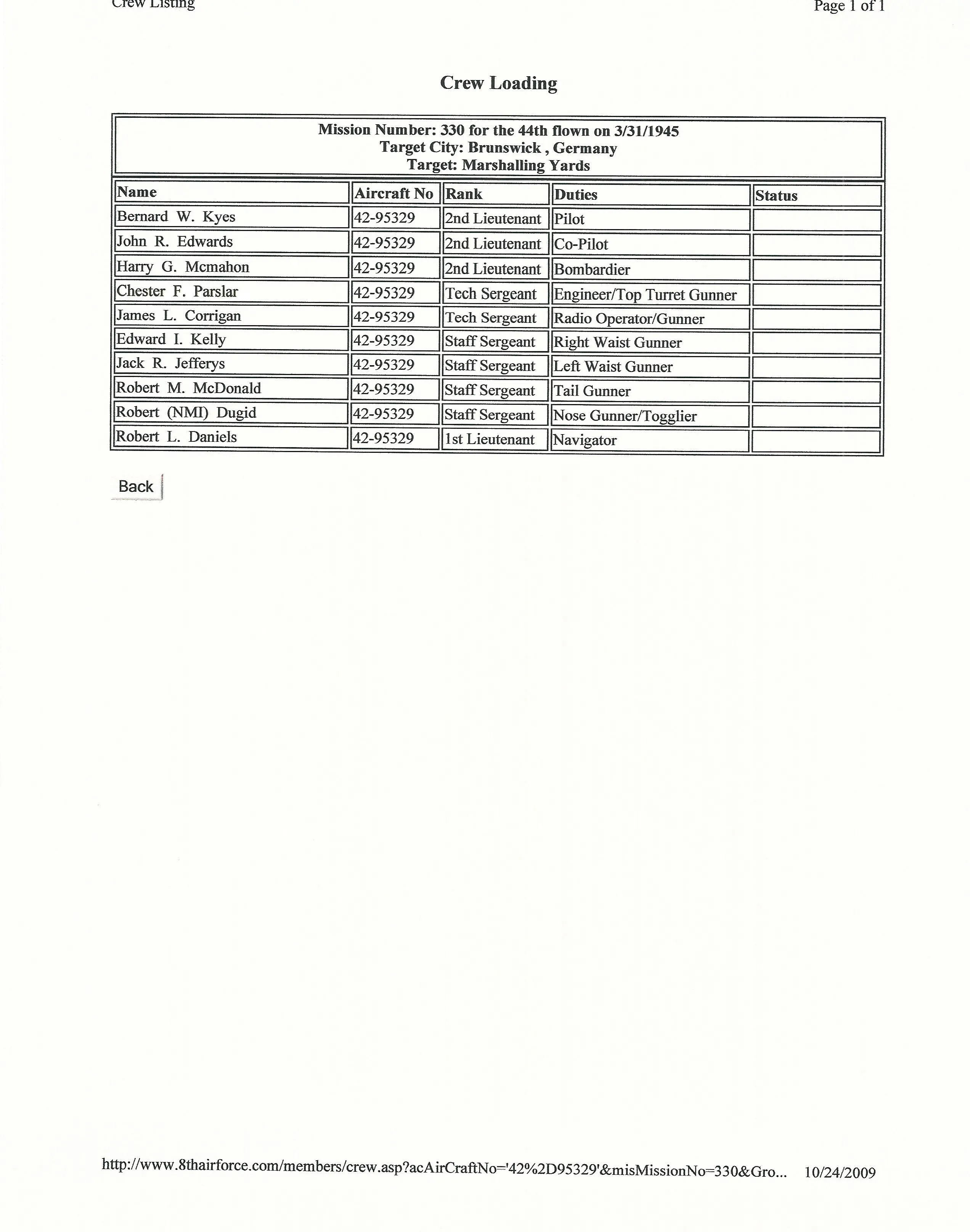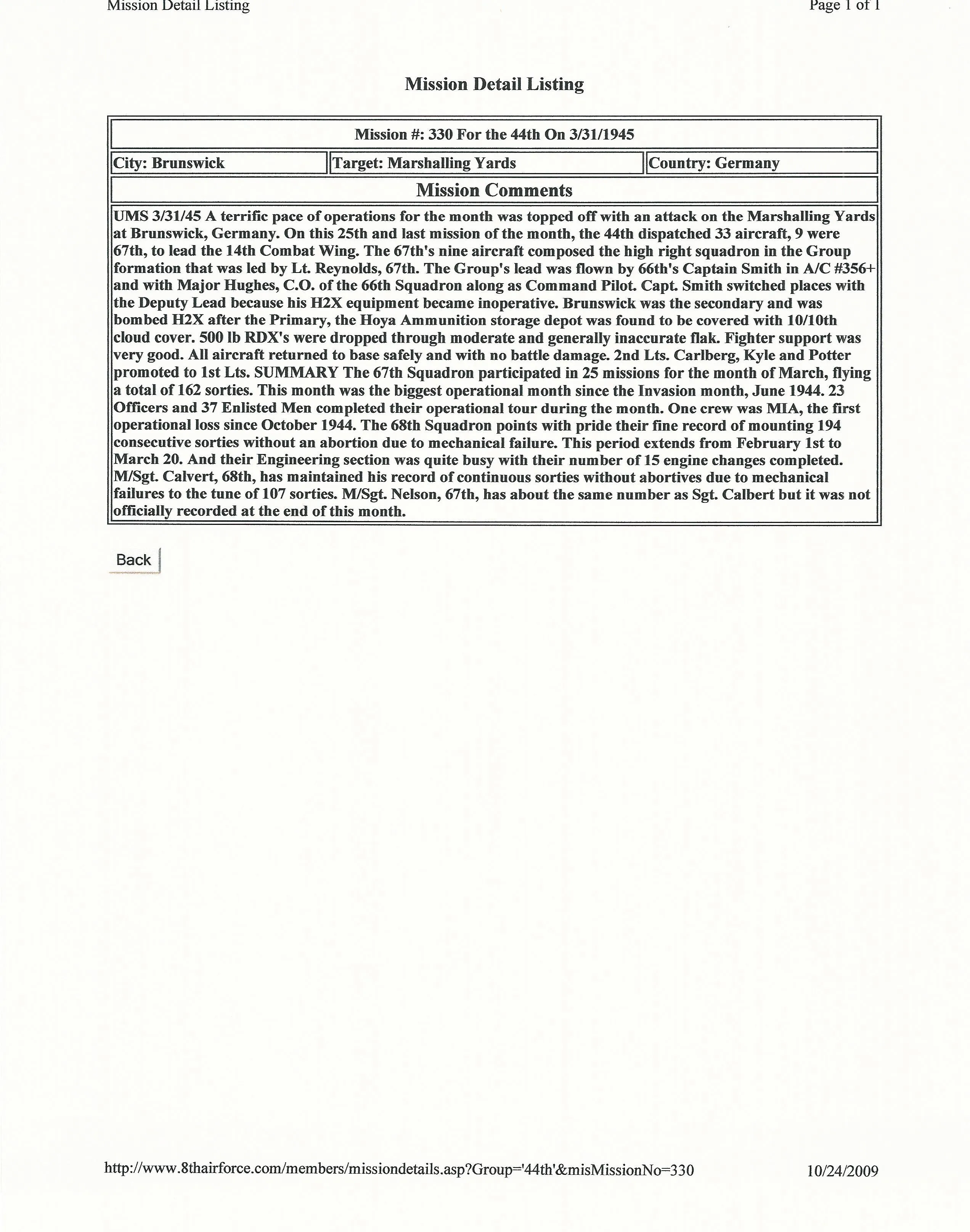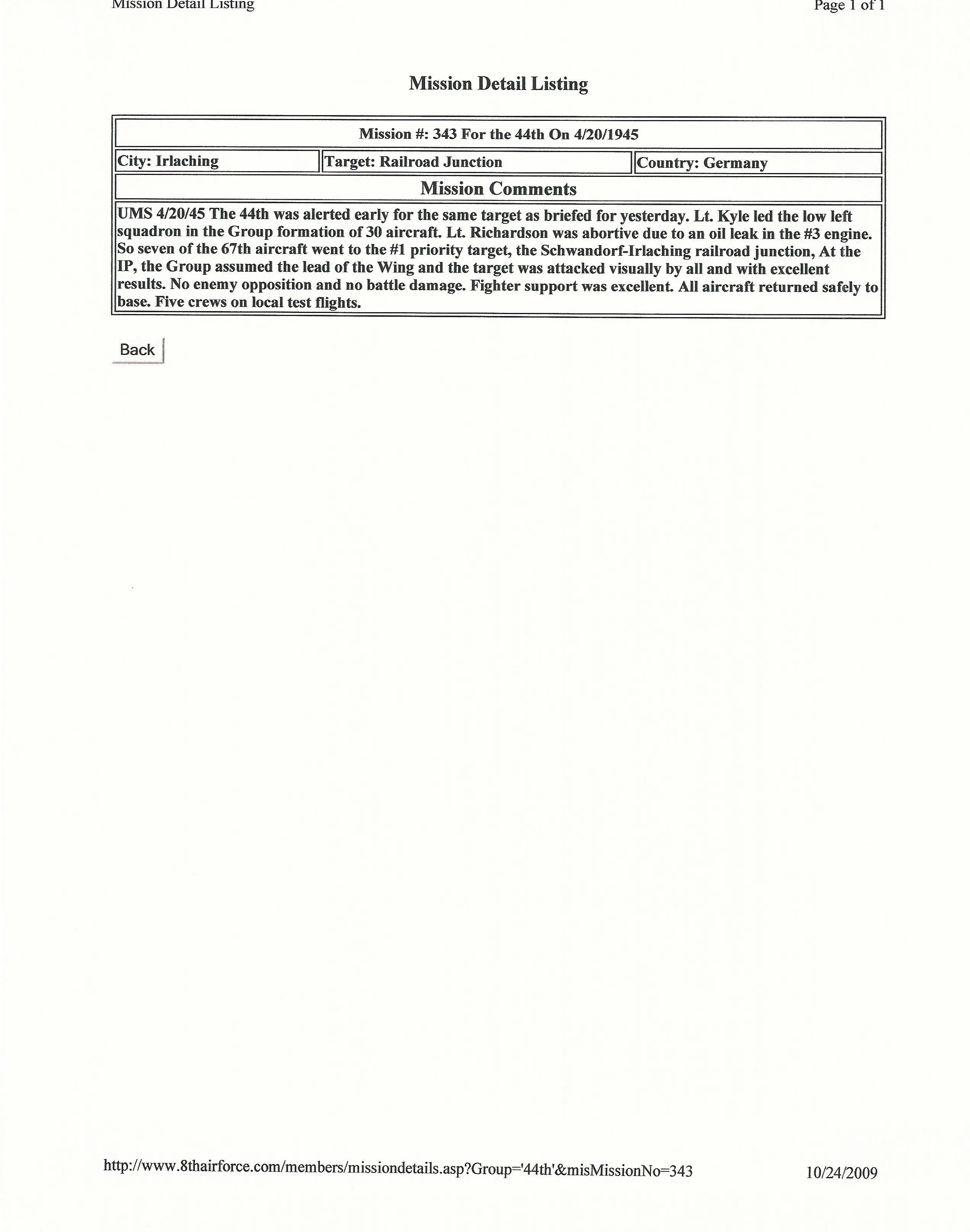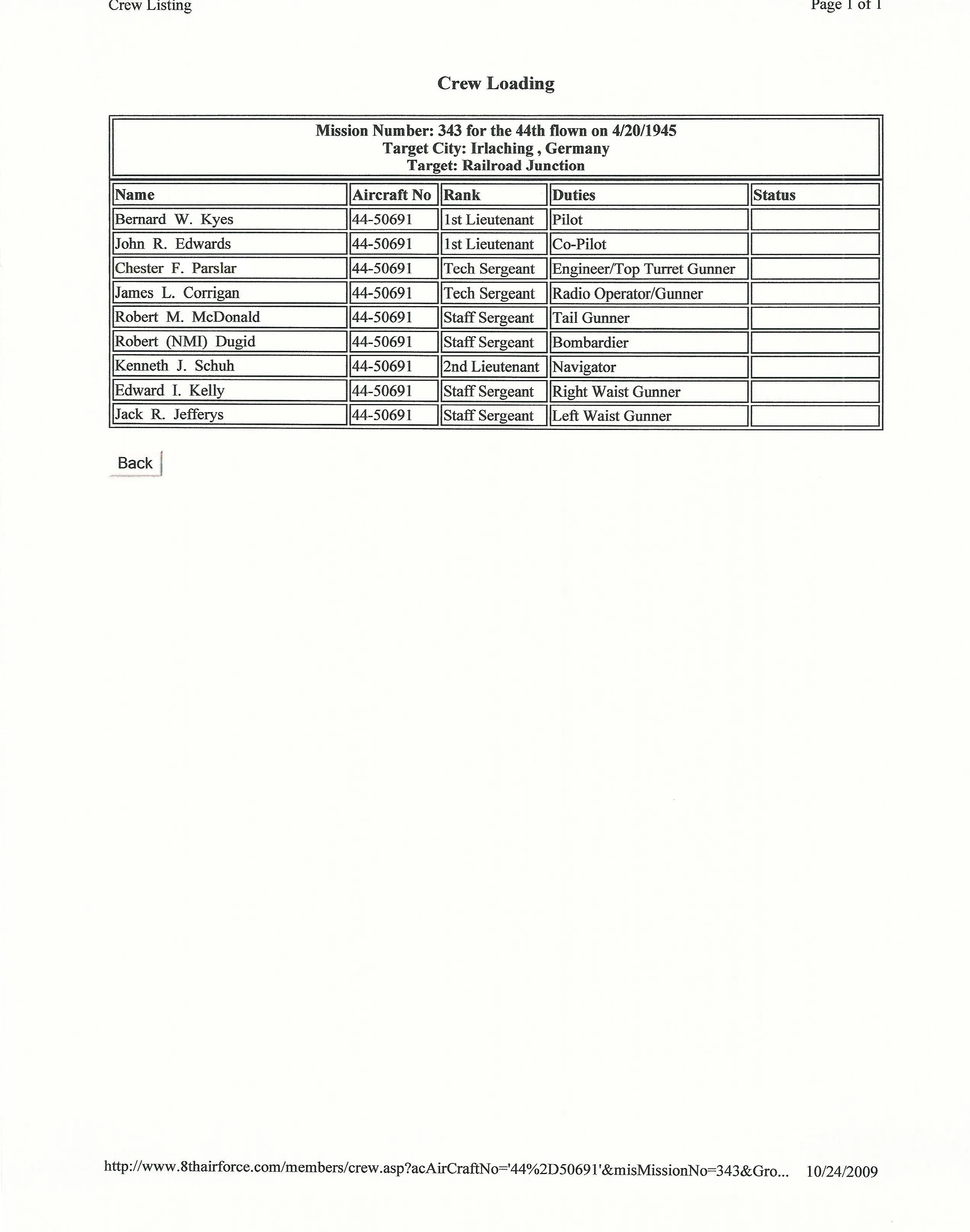Original Items: One-of-a-kind grouping. Sergeant Chester F. Parslar ASN 33830821 was an Engineer / Top Turret Gunner in the crew of pilot 2nd Lieutenant Bernard W. Keys aboard a B-24 Liberator that flew in the 506 Bomb Squadron, 44th Bombardment Group, 8th Air Force during WWII. He flew an incredible 29 missions and was awarded the Air Medal five times as evidenced by his 4 oak leaf clusters. A complete his of his 29 missions which span December 30th, 1944 through April 20, 1945.
All Missions Flown By Chester F. Parslar Of The 44th Bomb Group 506 Squadron (Total Missions Flown: 29):
12/30/1944, Mission # 274, Aircraft # 42-94883, Location: Altenahr Germany, Target: Rail & Road Junctions
1/1/1945, Mission # 276, Aircraft # 42-50535, Location: Koblenz Germany, Target: Koblenz-Lutzel Railroad Bridge
1/3 945, Mission # 278, Aircraft # 42-51552, Location: Landau Germany, Target: Ordnance Supplies
1/17/1945, Mission # 286, Aircraft # 42-99967, Location: Harburg Germany, Target: Oil Refinery
1/21/1945, Mission # 287, Aircraft # 42-94883, Location: Pforzheim, Target: Marshalling Yards
1/29/1945, Mission # 289, Aircraft # 42-94883, Location: Hamm, Target: Marshalling Yards
1/31/1945, Mission # 290, Aircraft # 42-94883, Location: Hallendorf Germany, Target: Recalled
2/9/1945, Mission # 293, Aircraft # 42-99967, Location: Madgeburg Germany, Target: Marshalling Yards
2/15/1945, Mission # 295, Aircraft # 42-99967, Location: Magdeburg Germany, Target: Rothensee Oil Refinery
2/21/1945, Mission # 298, Aircraft # 42-94883, Location: Nurnberg Germany, Target: Marshalling Yards
2/25/1945, Mission # 302, Aircraft # 42-51351, Location: Aschaffenburg Germany, Target: Marshalling Yards
2/26/1945, Mission # 303, Aircraft # 42-50896, Location: Berlin Germany, Target: Pankow Marshalling Yard
3/1/1945, Mission # 306, Aircraft # 42-50896, Location: Ingolstadt Germany, Target: Marshalling Yards
3/5/1945, Mission # 310, Aircraft # 44-10524, Location: Harburg, Target: Germany Oil Refinery
3/8/1945, Mission # 312, Aircraft # 42-50643, Location: Betzdorf & Frankfurt Germany, Target: Marshalling Yards
3/14/1945, Mission # 316, Aircraft # 44-40158, Location: Gutersloh Germany, Target: Marshalling Yards
3/15/1945, Mission # 317, Aircraft # 44-40158, Location: Zossen Germany, Target: Military Headquarters
3/17/1945, Mission # 318, Aircraft # 44-40158, Location: Munster Germany, Target: Marshalling Yards
3/19/1945, Mission # 320, Aircraft # 44-40158, Location: Neuburg Germany, Target: Jet Aircraft Factory
3/20/1945, Mission # 321, Aircraft # 44-50682, Location: Hemmingstedt Germany, Target: Oil Refinery
3/21/1945, Mission # 323, Aircraft # 44-50682, Location: Essen Germany, Target: Airfield
3/23/1945, Mission # 325, Aircraft # 44-40158, Location: Rheine Germany, Target: Marshalling Yards
3/24/1945, Mission # 326, Aircraft # 44-50682, Location: Wesel Germany, Target: Low-Level Supply on Rhine
3/31/1945, Mission # 330, Aircraft # 42-95329, Location: Brunswick Germany, Target: Marshalling Yards
4/8/1945, Mission #335, Aircraft # 44-50500, Location: Bayreuth Germany, Target: Ordnance Supplies
4/10/1945, Mission # 337, Aircraft # 44-10524, Location: Parchim Germany, Target: Airfield
4/14/1945, Mission # 339, Aircraft # 42-50643, Location: Fort-De-Royan France, Target: German Troops
4/16/1945, Mission # 341, Aircraft # 44-50691, Location: Landshut Germany, Target: Marshalling Yards
4/20/1945, Mission # 343, Aircraft # 44-50691, Location: Irlaching Germany, Target: Railroad Junction
Included in this wonderful set are the following items:
- Wonderful condition size 38L Class A four pocket tunic with blue felt back sterling silver gunner wings. Featuring an 8th Air Force insignia on right shoulder and Air Corps Patch on the left shoulder, ribbon bar with Air Medal ribbon with four Bronze Oak Leaf Clusters, European-Africa, Middle Eastern Campaign with three battle stars, Presidential Distinguished Unit Citation with Oak Leaf Cluster, Sergeant Chevrons, and PARSLAR 0821 ink stamped to interior. Jacket is in excellent condition.
- Uniform duffel bag clearly named to Chester F. Parslar ASN 33830821 in black stencil to the exterior.
- 2 x Overseas Garrison Cap.
- Near mint condition AAF AN-H-15 cloth flight helmet with chinstrap.
- Type A-10 oxygen mask
- Copies of mission logs listing aircraft numbers and missions. Including a list of all his 29 missions with dates and targets.
- Army issue mustard color wool shirt
- Army issue mustard color wool trousers
- Named kit bag
- Army issue sewing kit
- Original wartime luggage tags
- Theater made 8th AF patch
- OD wool gloves
- OD wool scarf
- OD wool sweater.
- Binder containing many pages of research with full mission list and details on some missions.
Most uniform items and caps are marked to Sergeant Parslar.
Excerpts From The Full History Of The 44th Bomb Group
This is a brief history of the premier, B-24 Heavy Bombardment Group, within the United States Army Air Corps during the military buildup immediately prior to and during WW II.
The Group was activated by the Army at MacDill Field, Tampa FL and designated the 44th Bomb Group (H) by Special Order #11, dated January 13, 1941. The Group was activated on January 15, 1941 by the transfer of a few officers and enlisted men from the 29th Bomb Group.
At this point in history America was attempting to maintain its international neutrality. The Japanese were expanding aggressively in Southeast Asia. The Germans had invaded Poland on September 1, 1939. That brought England and France to Poland's defense. Germany then attacked, over ran and occupied Holland, Belgium and France. Our relations with Japan and Germany continued to decline. America slowly moved to mobilization.
The Selective Service Act (the military draft) was enacted in September, 1940. All of America's military services began a rapid expansion. The 44th was in the vanguard of that expansion. It was designated an OUT (operational training unit). It was the first American air unit to be equipped with the new B-24 four engine bomber.
The B-24 was dubbed, "the ugly duckling", because of its lack of slick aesthetic design. However, it was a very rugged and worthy combat plane. It had a very aerodynamically efficient wing and four powerful Pratt and Whitney engines that made it a very valuable weapon in America's air arsenal. It was the only aircraft flown in combat by the 44th in WW II.
1941 was spent with the 44th personnel being trained in basic military skills, getting to know their airplane and each other. The Japanese attack upon Pearl Harbor on December 7, 1941 and Germany's declaration of war upon America transformed our nation from an isolationist people to a determined combatant.
On February 10, 1942 the 44th was ordered to Barksdale Field, LA. While still in an intense training mode the 44th was given the added duty of patrolling the Gulf of Mexico for German submarines that were causing havoc in the shipping lanes in our home waters.
In addition to training its own personnel, the 44th became a source of cadres for other newly organized B-24 heavy bomb groups. The following Bomb Groups were created by the transfer of 44th personnel to the:
98th on February 15, 1942 by transfer of 579 enlisted men and 46 officers
92nd March 1942 by transfer of cadre (number of personnel unknown)
93rd March 26, 1942 by transfer of 587 enlisted men and one half of the 44th officers
90th May 17,1942 by transfer of 656 enlisted men
In June 1942 the 44th ground echelon was bolstered by the addition of units of finance, quartermaster, transportation and chemical warfare. In reflecting upon these facts, the task of readying a unit for combat with such a huge turnover of personnel is staggering.
On July 25,1942 the 44th was assigned to Will Rogers Field, OK in preparation for deployment to an overseas theatre of operations. At this time the 44th was manned by 77 officers and 900 enlisted men. The group consisted of four squadrons, Headquarters and headquarters squadron (506th), the 66th squadron, the 67th squadron and the 68th squadron. The stay at Will Rogers field was brief.
On August 25, 1942 the ground echelon left Will Rogers Field, by troop train, for Ft. Dix, NJ to prepare for overseas shipment. On September 4, 1942 the 44th ground echelon, consisting of 62 officers and 819 enlisted men boarded HMS Queen Mary for transport to Greenock, Scotland and duty in the United Kingdom for "the duration" of World War II. They disembarked on September 11. 1942.
Initially the ground echelon was housed at the British air base of Cheddington, Bucks. On October 10 they moved to Shipdham, Norfolk. This new “lend-lease" base, Officially AAF Station 115, was to be the home of the 44thuntil the end of the war in Europe.
The air echelon was dispatched to Greiner Field, NH where they received new aircraft, olive drab B-24 D's. There they accomplished some more training, modified their planes and readied for the flight to Britain to join the fledgling “Mighty Eighth Air Force”. All of the air echelons 27 planes manned by 123 officers and 147 enlisted men were in place at Shipdham on October 10, 1942
The 44th flew its first combat mission on November 7, 1942. This was the first of 344 missions flown against the Axis powers in WW II. Over 8400 individual combat sorties were flown by 44th crews. In compiling this outstanding record the 44th lost 850 of its brave young patriots who gave their lives to "save the world".
On combat operations the 44th lost 153 of its sturdy B-24's. Another 39 planes were lost in non-combat operational flight activities.
The 8th Air Force in the fall/winter of 1942-43 consisted of five B-17 groups and two B-24 groups. No American Fighter groups had yet become operational. The Americans set out to prove that they could conduct high altitude, daylight precision bombing against German targets without fighter escort.
Both the German Luftwaffe and the British RAF had to abandon daylight bombing raids against each other because neither could sustain the losses each had experienced. However, the Americans persisted at great cost, in men and airplanes.
March 8, 1943 the 44th lost 13 of its original 27 B-24's.In the period between November 7, 1942 and March 8, 1943.
In March, 1943 moral within the group zoomed. A fourth squadron, the 506th joined the 44th with eight new planes, crews and ground support personnel. Several days later five replacement crews arrived, they too were warmly welcomed.
The first large-scale air battle for the 44th was the May 14, 1943 attack on the German submarine base at Kiel. This was a vicious conflict. The 44th lost five of its seventeen B-24s in the target area. Our gunners were credited with having shot down twenty-one German fighters. The 44th was awarded a Distinguished Unit Citation (DUC) for its conduct on this operation. This was the first such honor granted to a combat unit of the 8th air force.
In late June 1943 the three B-24 Liberator groups of the 8th air force were sent to North Africa on temporary duty with the 9th air force. The 44th was joined by the 93rd and the 389th. These three units joined the two Ninth Liberator groups for the August 1, 1943 low-level attack upon the German held Rumanian oil complex at Ploesti.
This daring and bold assault by high altitude bombers at tree top level was an experience that had both success and failure. The 44th destroyed both of its assigned targets but lost eleven of its thirty-seven planes and crews. Our courageous leader, Colonel Leon Johnson was awarded the Congressional Medal of Honor for his leadership. The group was awarded its second Distinguished Unit Citation. This operation was known as "Tidal Wave".
Of the 178 B-24's who were dispatched on this operation, 54 were lost. While on this tour of temporary duty the 44th also supported the invasion of Sicily. The 44th returned to its home base, Shipdham, at the end of August and was pleased to be back to the relative comfort of England. The joyous return was short lived however.
On September 17, 1943 the 44th was once again ordered to North Africa, on temporary duty. This time the unit was to be based in Tunisia, at Oudna. The 44th shared a base with a B-17 unit, the 99th Bomb Group. The group was to support our ground forces in an assault on the Italian mainland.
On October 1,1943 the 44th made its second mission to the Messerschmitt plant at Weiner-Neustadt, Austria. The first attack had been without much enemy opposition. This target, highly valued by the German high command, was now heavily defended. The 44th encountered hordes of fighters and very intense and accurate flak.
The 44th suffered the loss of eight of its twenty-five planes. The 44th gunners claimed fifty German fighters were shot down. A few days after this costly mission the 44th was ordered back to Great Britain.
The 8th Air Force had been expanding in numbers, in planes, both bombers and fighters, and personnel, but had not yet won air superiority over Europe The Fall of 1943 was difficult for the 8th Air Force. Weather was ugly. However the Force continued to expand.
The 44th closed out this action packed, costly year on a high note. On December 31, 1943 the veteran 44th lead the 14th Combat Wing to its assigned target at St. Jean d' Angely airfield. The excellence of this precision high altitude bombing effort earned the following praise by the 2nd Air Division commander, Gen. James Hodges, "It gives me extreme satisfaction to tell you that your bombing today was the finest example yet accomplished by the Division".
January, 1944 brought major changes. Eisenhower moved up from Mica to become Supreme Allied Commander. He brought with him General Jimmy Doolittle, who became chief of the 8th Air force. Tactics and strategy also changed. The P-51 fighter, with its expanded fuel tanks was introduced. The task of the fighter force was changed. Rather than being a protective force for the bombers they used the bombers as "bait" to get the German fighters airborne. The dictum was to "kill the German fighter force on the ground, in the air, and in the factory". Fighter pilots were given credit for any German aircraft they destroyed on the ground, in strafing operations. Synthetic oil production facilities moved up on the strategic bombing priority target list. Elimination of German fighter pilots was a major goal.
Following a horrible winter the weather turned favorably in February. The Eighth took full advantage of this break and "Big Week" was staged. The 44th was fully engaged in this massive operation. The German lost over 2100 fighters in February and another 2100 in March, a loss from which they never recovered. This is not to leave one with the impression that they no longer resisted, they surely did fight, but the quality of the German resistance was greatly lessened. The P-51 long range fighter had provided us with the air superiority to successfully stage an invasion of the Continent.
The 44th continued to fulfill all of its assigned tasks with commendable results. As with all units of the 8th Air Force the 44th was directed to carry out missions that were other than strategic. Early in 1944 the 44th spent a lot of effort in attempting to forestall the German use of the V-1 and V-2 weapons against the British homeland. These missions were carried out aggressively and with great cost to the Bomber Force in terms of planes and crews
The buildup to the Normandy invasion put great demands upon each of the combat units, especially the ground echelon, responsible for the maintenance of the airplanes. The 44th was blessed with ground personnel who were dedicated to making certain that each plane was fit for combat. The 44th had come to England with ground personnel to service nine aircraft per squadron. As aircraft production ramped up in the US each squadron was now assigned twelve planes, a few months later, the complement was fifteen each. All of this without an increase in the number of men to care for the added planes. Around invasion time, June, 1944/ the number of aircraft assigned to each squadron was close to twenty.
Was this a burden? Indeed it was but to the credit of the men who made up the ground crews they accepted the added duty and performed with superiority. This was their way of expressing their admiration for the uncommon courage of their combat crews. What magnificent spirit.
The German continued to resist. Flak had a deadly presence and fighters often were absent for a few missions but would then concentrate upon a column of bombers in a vicious attack. The 44th had its share of these encounters with costly results leading up to the invasion. However, the 44th continued to add to its experience in combat operations. Many of its flying personnel chose to take home leave to the States for thirty days,and return for another tour of combat duty. This was a plus for both, base morale and command leadership.
On Easter Saturday (April 8, 1944) the 44th was the lead group of the 2nd Air Division on a briefed mission to Brunswick, Germany. Shortly before IP German fighters broke through our fighter screen and mauled the 44th in a brief but costly air battle. The mission was a maximum effort with 44 B-24 bombers in its formation. Eleven of these fine young crews were lost before our fighters prevailed. This was an example of German tactics and tenacity in defending their homeland.
The 44th was fully engaged in the famed Transportation Plan. This operation which began in early April, 1944 was a combined RAF/8th AF, around the clock bombing campaign, upon German railroad facilities, with the goal of isolating the planned Normandy battlefield, in advance of the invasion. It was a major element in the success of the invasion, but it too came at a great cost. In a bit over two months this massive offensive effort cost the RAF / 8th AF bomber fleets 2,000 aircraft.
The 44th participated in the aerial support of the June 6, 1944 invasion of Europe. The distinguished leader of the 44th BG, General Leon Johnson, was now 14th Combat Wing Commander, and was in the 44th lead airplane. Their assigned task was to attack the beaches prior to the ground forces coming ashore. The 44th also flew two additional missions to the invasion battlefield that day.
A few weeks later the 44th was engaged again in direct support of our ground forces in the massive breakout at St. Lo. These diversions from the primary role of attacks upon the German industrial production facilities, oil production, marshalling yards, airfields and other vital targets were enthusiastically supported by our airmen. All of them had brothers or dear friends among the ground forces. They felt that this was a way to assist them in their onerous task upon the ground.
As the summer moved on our forces continued their steady movement on the Continent, our missions grew longer, our losses declined but combat flying remained a dangerous business. It became apparent that the experience of this marvelous grouping of brave airmen and their skilled ground echelon combined to limit combat losses, to enhance getting more airmen to completed tours of duty, having fulfilled their commitment
In September. 1944 the 44th was once again diverted to assist the ground forces. This time to drop supplies to the Airborne forces that made a daring attack at Arnhem, Holland. Employing B-24s at very low altitude makes them especially vulnerable to small arms fire but the 44th crews accepted this assignment without complaint. This failed operation was known as "Market Garden".
Weather was an ever present deterrent to successful combat operations. Higher headquarters at times ignored safety in favor of launching the mission. The introduction of radar in lead aircraft early in 1944 made possible the completion of more missions. It was now possible to bomb targets through overcast or dense cloud cover. It was not as precise but it was a disruptive nuisance to the enemy. It also relieved the frustration of a deep penetration of enemy territory only to find that cloud cover denied completion of the assigned task.
In December, 1944 the Germans took advantage of a paralyzing weather system and launched a risky but well planned ground assault designed to capture the seaport of Antwerp. This vicious, gutsy campaign became known as the "Battle of the Bulge". Once again the 44th was involved, in support of ground troops. After several days of stand down because of weather the 44th launched every B-24 it possessed. The targets were many, road intersections, supply dumps, equipment staging areas. Anything to reduce the German ability to continue this frightening near success.
In late March, 1944 after a few months of the long missions against German oil and industrial targets the 44th began a few days of practicing the dropping of supplies from low level. Dangerous work for planes as big and as slow as the B-24. Despite the risk the crews were enthusiastic for they knew they were to assist the ground forces.
Operation "Varsity", the crossing of the Rhine river into Germany was staged on March 24, 1945. This massive effort by the American and British forces for the final thrust into Germany was flown by over 1700 8th AF four engine bombers. The 44th was assigned the dropping of supplies to the airborne troops who had been dropped behind the German front lines. Mission accomplished but with losses..
As the Army ground forces raced across Germany the Air Forces continued to pound its array of targets. Many of those targets were in the eastern portions of Germany and the occupied central European nations. Long flights but greatly reduced enemy opposition. Finally capitulation was near. The 44th flew the last of its 344 combat missions on April 25, 1945. 8400 individual sorties spread over twenty-nine months of continuous mortal combat. Cessation of hostilities were formalized on May 8, 1945. The celebration was delirious.
The task now was to keep the men busy. Relieved of the pressures of combat, the concern was for the onset of idleness. Higher headquarters anticipated the development and had plans to move this vast organization to the ZOI (zone of the interior) , army speak for HOME
In the last several days of May each of the 44th airplanes was scheduled for the flight to the States. Each plane was assigned twenty men for transport to the eastern United States. Terminal point was Bradley Field, CT. Each man was granted thirty days of leave in his home town. Upon completion of this leave most of the Group reported to Sioux Falls, SD for further reassignment off or separation. The 44th was to have begun retraining in B-29 Super-Fortresses for eventual duty against Japan. However, because of the Japanese surrender that never happened.
This very brief history of this famous and outstanding aviation unit slights the true worth and value of this Bomb Group and its contribution to the winning of WW II.
Greater detail of the courageous deeds and achievements of the 44th and its members may be found in," THE 44TH BOMB GROUP IN WORLD WAR II " written by Ron Mackay and Steve Adams. Published by Schiffer Military History, Arglen, PA or "THE 44th BOMB GROUP, THE FLYING EIGHT-BALLS' by Tuner Publishing Co., Paducah, KY.
This brief history is intended to highlight the leadership in bombardment aviation in WW II by the unusual command leadership of the 44tb and its skilled and talented personnel. There is an awareness that other groups of dedicated and patriotic American service personnel participated with courage and valor. Their magnificent contribution is for other to tell. The men of the WW II 44th are honored to have been the first to bear the 44th designation.
More History Of The Forty-Fourth Bomb Group {Heavy)
The Forty-Fourth Bombardment Group (H) was organized under Special Order Number 11 dated January 13, under paragraph 14 and 15 Tampa, ' Florida.
The Forty-Fourth Bombardment Group (H) GHQ Air Force was activated from the Twenty-Ninth Bombardment Group (H) on the 15th of January, 1941 along with the Fifty-Third Pursuit Group, both. new organizations were formed at Mac Dill Field Florida, which was under the command of' Brigadier General Clarence Tinker, both organizations were formed from personnel of the Twenty-Nineth Bombardment Group (H).
The Forty-Fourth was activated with four officers and approximately one hundred and ten enlisted men. The group consisted of four squadrons, the Headquarters & Headquarters Squadron, the Sixty-Sixth Bomb Squadron, the Sixty-Seventh Bomb Squadron and the. Sixty-Eighth Bomb Squadron.
Lieutenant Colonel Melvin B. Asp joined the Headquarters & Headquarters Squadron from the Headquarters & Headquarters Squadron of the Twenty-Ninth Bombardment Group (H) GHQ AB and assumed command of the Group.
Captain Edward J. Timberlake joined the organization from the Sixth Bomb Squadron, Twenty-Nineth Bombardment Group (H) GHQ AF and assumed command of the Sixty-Sixth Bomb Squadron.
Major George R. Acheston assumed Command of the Sixty-Seventh Bomb Squadron. He joined the Forty-Fourth from the Forty-Third Bomb Squadron, Twenty-Nineth Bombardment Group (H).
Captain Samford assumed command of the Sixty-Eighth Bomb Squadron. He joined the Forty-Fourth Bomb Group from the Fifty-Second Bomb Squadron, Twenty-Nineth Bomb Group (H)
Of the Hundred and Ten enlisted men assigned to the Forty-Fourth there were Ninety-five present for duty and Fifteen were absent, most of these absentees were attending technical schools..
There were thirteen men attached to the Forty-Fourth from other organizations and eight men were attached unassigned. All initial reports were rendered bearing these figures as listed and there were no reports submitted on the Forty-Fourth. Bomb Group prior to January 15th, 1941.
The original cadre of enlisted men gradually grew and a fifth officer joined the organization on February 11, 1941. The new officer was Major Olds who joined the organization from the Headquarters & Headquarters Squadron, Twenty-Nineth Bomb Group (H).
Three-hundred and forty-three enlisted men were assigned to the organization, increasing the strength to Four-Hundred and fifty-three enlisted men.
Second Lieutenant Magnus S. Altmayer was assigned to Headquarters & Headquarters Squadron on February 20th and joined the Squadron on February the 24th.
Major Olds was relieved from assignment on March the 2nd and Major Thomas H. Jarrell was assigned to the Headquarters & Headquarters Squadron and assumed Command of the Squadron.
Major Charles W. Laurence was assigned to the Headquarters & Headquarters Squadron on March the 25th and was appointed Group Executive Officer on the same date.
Major Kohlass was assigned to the Headquarters & Headquarters Squadron on March the l2th and joined the organization on that date. He was appointed Summary Court Officer for the group.
On March 25th. Major Travis was assigned to the Headquarters & Headquarters Squadron
On April 18th, 1941 and the Forty-Fourth Bomb Group had Nine Officers and Six-hundred and seventy - two enlisted men.




